Reviewed the value of each type of compensation and benefit for each executive officer, including annual incentive pay opportunities and long-term stock-based compensation awards, perquisites and personal benefits, deferred accounts, and retirement plans and determined that the amounts, individually and in the aggregate, were appropriate and in line with external market and internal comparisons.
34 2018 Proxy Statement 
Executive Compensation — Compensation Discussion and Analysis
Considered the estimated value of outstanding unvested, unexercised, and unrealized stock-based awards in its review of the types and values of each executive officer’s compensation.
Determined the amount and forms of compensation considering:
Company and individual performance,
compensation relative to that for similar positions in other companies,
the mix of short- and long-term compensation, and total compensation, relative to other Eastman executive officers and employees,
whether the features of each form of compensation are appropriately balanced in terms of the types of corporate and individual performance being incented, the levels and types of risk they encourage managers to evaluate and take, and whether the compensation encourages managers to take unnecessary risks,
background information and recommendations from the Company’s management compensation organization and from the external compensation consultant engaged by the Compensation Committee, and
the recommendations of the Chief Executive Officer regarding pay for the other executive officers.
For 2017, the Compensation Committee compared total annual cash compensation opportunity (base salary and target incentive pay opportunity) levels and the value and mix of long-term stock-based incentive pay opportunity levels for the Company’s executive officers with those of the following companies, taking into account differences in the relative size and businesses of these companies. Companies were selected with assistance from Aon Hewitt based upon similarity of their industry, number of employees, revenues, number and type of commercialized products, and market capitalization with Eastman. In 2016 the Committee reviewed with Aon Hewitt and made changes to its compensation benchmarking peer group for 2017 given recent changes to the business, products, strategy for growth, and size of the Company and to make the group more appropriate for Eastman’s continuing transition to a larger, more specialty global chemical company.
| | | | | | | | |
Air Products and Chemicals, Inc.
72 |
Ashland Global Holdings Inc.
2024 Proxy Statement |
Ball Corporation
|
Celanese Corporation
|
Danaher Corporation
|
Dover Corporation
|
The Dow Chemical Company
|
Eaton Corporation Plc
|
Ecolab Inc.
|
E. I. DuPont de Nemours and Company
|
FMC Corporation
|
| | |
The Goodyear Tire and Rubber Company |
Ingersoll-Rand Plc
|
Monsanto Company
|
Mosaic Company |
Parker-Hannifin Corporation
|
PPG Industries Inc.
|
Praxair Inc.
|
Sealed Air Corporation
|
Rockwell Automation, Inc.
|
The Sherwin-Williams Company
|
The Valspar Corporation
Executive compensation |
 2018 Proxy Statement
2018 Proxy Statement 35
Executive Compensation — Compensation Discussion and Analysis
Evaluation of StockholderSay-on-Pay Vote Results
As described in “Item 2 — Advisory Approval of Executive Compensation” of this proxy statement, at the 2018 Annual Meeting stockholders will again have the opportunity to indicate their views on the compensation of our named executive officers by an advisory“say-on-pay” vote. At the Company’s 2017 Annual Meeting 92% of the votes cast on thesay-on-pay proposal were voted in favor of the proposal. The Compensation Committee considered this vote result as general approval of the Company’s approach to executive compensation. Therefore, it did not make any significant changes in the structure of our executive compensation program for 2017. Instead, the Committee focused on refining select elements of the program, as summarized above under “Overview”. The Compensation Committee will continue to consider the results of futuresay-on-pay proposals, and other appropriate executive compensation and corporate governance developments, in future years when making compensation decisions for our named executive officers.
Elements of our Executive Compensation
Annual Cash Compensation — Base Salary and Incentive Pay
How Base Salary and Annual Incentive Pay Levels Are Determined. For executive officers, targeted total cash compensation is intended to be competitive with comparable pay for similar jobs when target levels of corporate, business and functional organization, and individual performance are achieved. The targeted levels of cash compensation are based upon information provided by Aon Hewitt and from publicly available information. For 2017, a significant portion of each executive officer’s total pay was variable, as shown in the charts under “Mix of Total Target Compensation”. Depending upon Company, business and functional unit, and individual performance, executive officers could receive more or less than their target amount.
As requested by the Compensation Committee, Aon Hewitt provided benchmarking analyses of the total cash compensation for executives with similar positions at the comparator companies listed above. Aon Hewitt also advised the Compensation Committee of general market cash compensation practices and trends. In determining each executive officer’s targeted total cash compensation, the Compensation Committee considered this benchmarking data and also applied its judgment in considering the competitive market for executive talent, comparative pay levels of other executive officers, relative cash compensation of other jobs in the Company, and differences between the Company’s executive positions and those of the comparator companies. For 2017, the Compensation Committee set the targeted cash pay for executives within a range of 10% above or below the median level of the total targeted cash compensation for comparable positions at the comparator companies, with exceptions for changes in individual scope of responsibilities, corporate performance, and time and experience in position.
Base Salary. In late 2016 and early 2017, after reviewing market competitive pay levels and the targeted total cash compensation of the executive officers, the Compensation Committee determined that base salary increases were appropriate for each of the executive officers because their targeted total cash compensation was below the median of the comparator companies. In addition to external comparisons, the Committee considered the cash compensation levels of each executive officer relative to that of each other executive officer. Even with these increases in base salary, our executive officers’ total annual compensation for 2017 consisted primarily of variable compensation. The base salary amounts reported in the “Salary” column of the Summary Compensation Table were determined by the Committee based on the Committee’s target total cash compensation decisions for 2017.
36 2018 Proxy Statement 
tables
Executive Compensation — Compensation Discussion and Analysis
Annual Incentive Pay — Unit Performance Plan. For 2017, the variable portion of cash compensation paid to approximately 900 management level employees, including the executive officers, was determined under the Unit Performance Plan (the “UPP”). Under the UPP, the Compensation Committee sets a cash payout pool target amount at the beginning of each year, with the total available payout ranging from 0 to 200 percent of target amount depending on the Company’s financial performance. Notwithstanding the payout pool calculated based on actual corporate financial performance against the pre-set target measures, the Committee reserves discretion to adjust the total payout pool amount to reflect overall corporate performance, business and financial conditions and other corporate objectives. The total UPP award pool is determined after the end of the performance year as the aggregate of the UPP payouts for each participant if the individual’s organizational and individual performance were at target levels multiplied by a “performance factor” determined by calculated actual corporate performance compared to thepre-set performance goals, subject to adjustment for overall corporate performance and business and financial conditions.
| | | | | | | | |
HOW THE UPP WORKS |
| | | | |
At the start of the year — establish corporate performance measures and individual performance goals | |  | | Throughout the year — track corporate and individual performance, consider adjustments to GAAP corporate performance measures | |  | | After year end — determine corporate performance and any adjustments, evaluate individual performance, and fund payout pool and distribute awards |
2017 UPP named executive officer target opportunities. Consistent with our compensation objectives, as employees assume greater responsibilities more of their pay is linked to Company and individual performance. Variable UPP cash pay targets (expressed as a percentage of base salary) are established at the beginning of the performance year based on job responsibilities, relative targets for other Company positions, and comparator company practices. For the named executive officers, the target annual UPP incentive opportunities for 2017 were as follows:
| | | | |
Name
| | Title | | Target UPP
Opportunity as % of
Base Salary |
Mark J. Costa
| | Chief Executive Officer | | 140%
|
Curtis E. Espeland
| | Executive Vice President and Chief Financial Officer | | 90% |
Brad A. Lich
| | Executive Vice President and Chief Commercial Officer | | 90% |
Lucian Boldea
| | Senior Vice President, Additives & Functional Products
| | 80% |
Stephen G. Crawford
| | Senior Vice President and Chief Technology Officer | | 70% |
2017 UPP Company performance measure and targets. The 2017 UPP payout pool was determined based 75% on Company adjusted earnings from operations (“EFO”) and 25% on free cash flow (“FCF”).
EFO under the 2017 UPP is earnings from operations as adjusted by the Compensation Committee for certain cost, charge, and income items that were not included in the Company’s targeted financial performance under management’s annual business plan as approved by the Board in early 2017 (the “annual business plan”) and that were excluded from operating earnings in thenon-GAAP financial measures disclosed by the Company in its quarterly and annual public disclosures of financial results as non-core or unusual items. The selection of adjusted EFO as a measure of 2017 corporate performance was intended to focus management level employees on bothtop-line revenue and bottom-line earnings and to allow measurement of UPP performance throughout the year based upon reported Company quarterly financial results. The Committee chose adjusted EFO to tie the performance measure and targets to the strategy and corresponding annual business plan targets on which UPP participant performance would be evaluated in 2017.
 2018 Proxy Statement
2018 Proxy Statement 37
Executive Compensation — Compensation Discussion and Analysis
FCF under the 2017 UPP is GAAP cash provided by operating activities less GAAP cash used in additions to properties and equipment, subject to adjustment for any unusual items that the Committee considers distortive of free cash flow and that were not included in the Company’s targeted performance under the annual business plan. FCF reflects the cash generated in the current year that enables the Company to invest in innovation in the core businesses and inorganic growth through acquisitions, and allows measurement of performance throughout the year based upon reported Company quarterly financial results.
In establishing the 2017 UPP EFO and FCF performance targets, the Committee considered the targeted 2017 financial and strategic performance under the annual business plan. The UPP payout pools were set for above-target payout if the Company exceeded target annual business plan performance and below-target payout if performance did not meet target annual business plan EFO and FCF.
2017 UPP Company performance and payout pool. Near target adjusted EFO and above target FCF and the Committee’s exercise of its discretion to adjust the payout pool to reflect overall corporate performance resulted in a below target payout pool for 2017. The 2017 UPP threshold, target, and maximum adjusted EFO and FCF targets and corresponding payout multiples, actual adjusted EFO and FCF, the Committee’s adjustment to the calculated total payout pool, and resulting payout multiples for the UPP award pool are described and shown below.
Adjusted EFO for 2017 was $1.631 billion and FCF for 2017 was $1.008 billion ($1.657 billion cash provided by operating activities less $649 million cash used in additions to properties and equipment), resulting in a calculated “performance factor” under the UPP of .99X of target for executives and other senior managers. The calculation of EFO under the UPP for 2017 was adjusted to exclude from GAAP operating earnings as an unusual item net costs resulting from the disruption of manufacturing operations in the Kingsport site’s coal gasification area in fourth quarter 2017 and as non-core itemsmark-to-market pension and other postretirement benefit net gain and asset impairments and restructuring charges. These adjustments increased the calculated EFO under the UPP by $99 million and the UPP award pool by $4.6 million. The Committee exercised its discretion to adjust the calculated total payout pool to reflect overall corporate performance by reducing the total payout pool amount by $2.8 million due to the impact on business and financial results of the coal gasification incident, resulting in a total UPP award pool for all management level employees of .90X of target ($33 million).
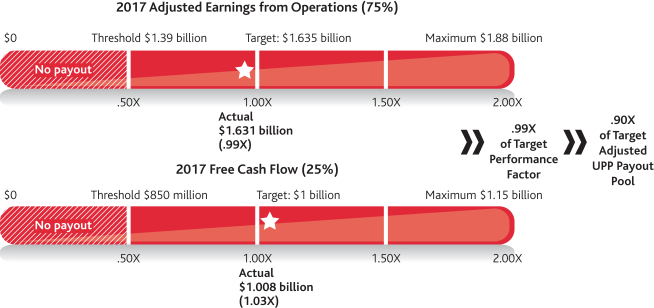
38 2018 Proxy Statement 
Executive Compensation — Compensation Discussion and Analysis
The chart below shows the multiples of target UPP payouts for each of 2015 (the sole corporate performance measure for 2015 was adjusted EFO), 2016 and 2017.
Multiple of UPP Target Payout 2015-2017

2017 UPP named executive officer payouts. The Compensation Committee determined the portions of the overall UPP award pool to be allocated to the CEO and to the other executive officers as a group. The Chief Executive Officer, in consultation with the other executive officers, determined the allocation of the overall UPP award pool to the various organizations within the Company for payouts to other management-level employees. The allocation was based on their assessment of the performance of each organization relative to objectives established at the beginning of the performance year.
Once each organization’s portion of the overall award pool was determined, management within each organization (the Chief Executive Officer and the Compensation Committee in the case of the executive officers other than the CEO and, in the case of the Chief Executive Officer, the Compensation Committee) allocated the organization’s portion of the Company award pool for individual payouts, based upon individual performance against the financial, organizational, and strategic performance objectives and expectations established at the beginning of the performance year.
The Compensation Committee determined the CEO’s payout based upon the Compensation Committee’s assessment of his individual performance as described below. The portion of the overall UPP award pool allocated to the other executive officers which was paid to the named executive officers was based upon the CEO’s and the Committee’s assessment of each executive’s individual performance as described below.
For 2017, the following corporate performance objectives were established for the CEO and the other executive officers based upon targeted 2017 performance under the annual business plan, with no specific weighting among the corporate performance objectives for the purpose of evaluating individual performance. Actual performance against these objectives was assessed by the Compensation Committee (for the CEO) and by the CEO and the Compensation Committee (for the other executive officers) as part of their determination of the amounts of the individual payouts:
| | | | |
Measure | | Target | | Actual |
Adjusted earnings from operations* | | $1.635 billion | | $1.631 billion |
Adjusted earnings per share* | | $7.30 | | $7.61 |
Free cash flow* | | ³$1 billion | | $1.008 billion |
Employee safety — days away from work
(measured as days away from work per 200,000 hours worked) | | £0.12 | | 0.20 |
OSHA recordable injuries (measured per 200,000 hours worked) | | £0.54 | | 0.71 |
* | Non-GAAP financial measure, with adjustments and calculations as described above.
|
 2018 Proxy Statement
2018 Proxy Statement 39
Executive Compensation — Compensation Discussion and Analysis
Additionally, each of the executive officers had individual performance commitments specific to each executive’s area of responsibility, with no specific weighting among the commitments. Performance of the CEO (as assessed by the Compensation Committee) and of the other named executive officers (as assessed by the CEO and the Compensation Committee) was as follows:
| | | | |
Named Executive Officer
| | Commitments | | Performance |
Mark J. Costa
| | Overall financial and business performance (including progress in transformation to more specialty product earnings mix and management of impact of coal gasification incident)
| | Met
|
| | Growth and innovation (including market development, new product and technology initiatives, and portfolio management)
| | Exceeded
|
| | Productivity (including cost reductions and targeted growth and innovation spending)
| | Met
|
| | Organizational capabilities enhancement (including management development and succession, talent development and retention, and diversity and inclusion initiatives)
| | Exceeded
|
| | Employee safety and wellness
| | Met partially
|
Curtis E. Espeland
| | Earnings (including contribution of lower interest expense and effective tax rate and capital and cash allocation and uses)
| | Met
|
| | Cash flow
| | Met
|
| | Corporate growth strategy leadership and capabilities enhancements
| | Met
|
| | Management of response to and impact of tax law changes
| | Met
|
Brad A. Lich
| | AM and Fibers segments business results (including revenue and EFO)
| | Met
|
| | AM and Fibers segments organic growth and innovation initiatives (including new technology and product development and commercialization)
| | Exceeded
|
| | Productivity (including Fibers business changes and cost reduction and procurement initiatives)
| | Met
|
| | Organizational capabilities enhancement (including senior management and leadership development and core business processes capabilities improvement initiatives)
| | Exceeded
|
40 2018 Proxy Statement 
Executive Compensation — Compensation Discussion and Analysis
| | | | |
Named Executive Officer
| | Commitments | | Performance |
Lucian Boldea
| | AFP segment business results (including revenue, EFO, and cost management)
| | Exceeded |
| | AFP segment organic growth and innovation initiatives (including new technology and product development and commercialization)
| | Exceeded
|
| | Organizational capabilities enhancement (including senior management and leadership development, sales and technology capabilities, and customer engagement)
| | Exceeded
|
Stephen G. Crawford
| | Growth and innovation (including technology initiatives and product development and commercialization)
| | Exceeded
|
| | Organizational capabilities enhancement (including targeted research and development innovation initiatives)
| | Exceeded
|
| | Productivity (including technology-driven manufacturing debottlenecks, operating improvements, and cost reduction)
| | Met
|
The Compensation Committee determined that, based upon actual corporate performance against targets as listed above, each named executive’s individual performance and leadership that contributed to this performance was satisfactory and met or exceeded expectations for purposes of determining his allocated individual portion of the respective award pools. The Compensation Committee also evaluated each executive’s individual performance against his individual commitments as described above, and concluded that each named executive’s individual performance was overall at or above target levels for purposes of determining their individual portions of the respective award pools.
Based upon the amount of the UPP award pool allocated to the CEO and to the other executive officers, respectively, and the assessments of the CEO’s and other executives’ individual performance against established goals and expectations as described above, the Compensation Committee determined the amounts of the individual payouts from the allocated portions of the UPP award pools based upon the Committee’s judgment of overall Company performance and performance of applicable business or functional units, each individual executive’s overall contribution and leadership, and external business conditions and circumstances, as follows:
| | | | | | | | | | | | | | | |
Named Executive Officer | | UPP Payout | | Target UPP Payout | | UPP Payout as % of Target |
Mark J. Costa | | | $ | 1,449,000 | | | | $ | 1,610,000 | | | | | 90 | % |
Curtis E. Espeland | | | | 612,000 | | | | | 679,500 | | | | | 90 | % |
Brad A. Lich | | | | 511,000 | | | | | 567,000 | | | | | 90 | % |
Lucian Boldea | | | | 458,000 | | | | | 424,000 | | | | | 108 | % |
Stephen G. Crawford | | | | 390,000 | | | | | 360,500 | | | | | 108 | % |
 2018 Proxy Statement
2018 Proxy Statement 41
Executive Compensation — Compensation Discussion and Analysis
The 2017 UPP payouts to the named executive officers are reported in the“Non-Equity Incentive Plan Compensation” column of theSummary Compensation Table below.
Stock-Based Incentive Pay
Equity-Based Compensation Program. Equity-based compensation is designed to facilitate stock ownership in order to link senior managers’ pay to the Company’s long-term performance to further align those managers’ interests with the interests of other stockholders. Important elements of the executive equity-based compensation program are:
Stock Options
| Granted under the Company’s Omnibus Stock Compensation Plan (the “Omnibus Plan”), stock options create a direct link between compensation of key Company managers and long-term performance of the Company through appreciation of stock price.
|
Performance Shares
| Awarded under the Omnibus Plan to provide an incentive for key managers to earn stock awards by meeting specified multi-year business or individual performance goals.
|
Other Stock-Based Incentive Pay
| Under the Omnibus Plan, the Compensation Committee may also award additional stock-based compensation (with or without restrictions), including restricted stock units, performance units, stock appreciation rights, and additional stock options with performance-based or other conditions to vesting.
|
Stock Ownership Expectations
| Established for executive officers to encourage long-term stock ownership and the holding of shares awarded under the Omnibus Plan or acquired upon exercise of options. Over a five-year period, executive officers are expected to accumulate stock with a value of two andone-half times their annual base salary (five times base salary for the Chief Executive Officer) in Company stock and stock equivalents.See “Stock Ownership of Directors and Executive Officers — Director and Executive Stock Ownership Expectations.” All executive officers have met or are on schedule to meet their ownership expectations.
|
How Stock-Based Incentive Pay Levels Are Determined. The Compensation Committee establishes the annual value and mix of total stock-based incentive pay opportunities by considering recommendations from Aon Hewitt based on long-term compensation survey data for the comparator companies listed under “Review of 2017 Executive Compensation”.
As requested by the Compensation Committee, Aon Hewitt provides benchmarking analysis of this long-term stock-based compensation information, and also advises the Compensation Committee of general market stock-based incentive compensation practices and trends.
The Compensation Committee also regularly reviews with Aon Hewitt the potential realizable value of each named executive officer’s outstanding unvested, unexercised, and unrealized stock-based awards compared to similar pay of executives at the comparator companies in determining stock-based incentive pay opportunity levels.
For 2017, stock options and performance shares were awarded at a target opportunity level intended to align total stock-based compensation with themid-range of comparable stock-based compensation of the comparator companies.
Stock Options. In 2017, the Compensation Committee determined to provide approximately 25% of the value of each executive officer’s stock-based compensation in the form of stock options. The Compensation Committee grants time-based vesting stock options with an exercise price equal to the market price of the underlying stock on the grant date, and on the date of its authorization of grants it sets a grant date that is on or after the date of approval of the grant. In determining the size and terms of option awards, the Compensation Committee used the services of Aon Hewitt to derive
42 2018 Proxy Statement 
Executive Compensation — Compensation Discussion and Analysis
values of options using a variation of the Black-Scholes option-pricing model. In addition, Aon Hewitt advises the Compensation Committee on the design of retention and performance incentive features of option grants. Computation of the value of option awards is comparable to values determined under FASB ASC Topic 718 and reported in the “2017 Grants of Plan-Based Awards” table below.
Long-Term Performance Shares. Other than the executives who received restricted stock unit awards as described below, the other 75% of each executive officer’s 2017 stock-based compensation was in the form of performance shares. Shares of Company common stock are paid under performance shares based on the Company’s multi-year performance based on two measures:
a return on capital target established at the beginning of the three-year performance period, and
the Company’s total return to stockholders (change in stock price plus dividends declared during the performance period, assuming reinvestment of dividends) relative to a peer group of industrial companies.
The return on capital target is established considering corporate and strategic business plans and expectations for the performance period. Performance relative to the total return to stockholders target is determined by the Company’s quintile placement relative to the peer group of industrial companies at the end of the three-year performance period. If earned, awards are paid after the end of the performance period in unrestricted shares of Eastman common stock. Consistent with recent and ongoing changes to the Company’s business, products, and strategy for growth, the Committee designed the 2015-2017 and the 2016-2018 performance shares with greater weight on relative total stockholder return and less relative reward for higher levels of return on capital than for prior periods to reflect the strategic emphasis on specialty businesses and products and, as described in “Overview”, removed certain companies (The Chemours Company and Rayonier Advanced Materials) from and added certain companies (Celanese Corporation, Westlake Chemical Corporation, and Huntsman Corporation) to the peer group of industrial companies (the group of companies within the “Materials Sector” classified as Chemical companies from the Standard and Poor’s Super Composite 1500 Index) used in measurement of relative total shareholder return for purposes of the 2017-2019 performance shares. Although the actual payout of the performance share awards in 2017 will not be determinable until after the end of the performance period in 2019, a grant date fair value of such awards is reported in the 2017 “Stock Awards” column of theSummary Compensation Table, the range of possible share payouts is reported in the “Estimated Future Payouts Under Equity Incentive Plan Awards” column of the “2017 Grants of Plan-Based Awards” table, and the targets and payout matrix is included in the form of the 2017-2019 performance share award filed as Exhibit 10.23 to the Company’s 2016 Annual Report on Form10-K.
In early 2018, the Compensation Committee reviewed performance results and approved a payout of shares to the executive officers under performance shares previously awarded for the 2015-2017 performance period. The payouts to the named executive officers under the 2015-2017 performance shares are reported in the “Stock Awards” column of the “2017 Option Exercises and Stock Vested” table below. The following tables show the targets and the payout matrix for the 2015-2017 performance shares:
| | | | | | | | | | |
Performance Years
| | Target Return on Capital | | Total Stockholder Return
(“TSR”) Target Quintile
|
2015, 2016 and 2017
| | | | 10.51 | % | | | | 3rd Quintile 50 – 59 | % |
| | | | | | | | | | | | | | | | | | | | | | | | | | | | | | |
| | | Weighted Return on Capital |
Eastman TSR Relative to Comparison Companies | | ³ 7.50 to
9.0% | | 9.01 to
10.5% | | 10.51 to
12.0% | | 12.01 to
13.5% | | 13.51 to
15.0% | | > 15% |
0-19% (5th quintile) | | | | 0.0 | | | | | 0.0 | | | | | 0.0 | | | | | 0.2 | | | | | 0.3 | | | | | 0.4 | |
20-39% (4th quintile) | | | | 0.0 | | | | | 0.2 | | | | | 0.4 | | | | | 0.6 | | | | | 0.8 | | | | | 0.9 | |
40-49% (3rd quintile) | | | | 0.4 | | | | | 0.6 | | | | | 0.8 | | | | | 1.0 | | | | | 1.2 | | | | | 1.4 | |
50-59% (3rd quintile) | | | | 0.6 | | | | | 0.8 | | | | | 1.0 | | | | | 1.3 | | | | | 1.5 | | | | | 1.7 | |
60-79% (2nd quintile) | | | | 1.0 | | | | | 1.2 | | | | | 1.4 | | | | | 1.7 | | | | | 1.9 | | | | | 2.1 | |
80-99% (1st quintile) | | | | 1.0 | | | | | 1.8 | | | | | 2.0 | | | | | 2.3 | | | | | 2.4 | | | | | 2.5 | |
 2018 Proxy Statement
2018 Proxy Statement 43
Executive Compensation — Compensation Discussion and Analysis
Payouts for the 2015-2017 performance period to the named executive officers ranged from 4,658 shares to 86,717 shares, and represented 140% of each executive’s target award (of a possible 250% of the target award) based upon the Company’s total stockholder return ranking in the 2nd quintile of the compared companies and an average return on capital of 10.80%. Measurement of return on capital under the performance shares was based on reported GAAP earnings, and did not exclude items excluded in thenon-GAAP financial measures disclosed by the Company.
Restricted Stock Unit Awards. From time to time, the Committee grants special cash or equity awards for recognition of sustained valuable performance or to retain key individuals who have critical skills of strategic importance.
The Compensation Committee awarded restricted stock units to each of named executive officer Stephen G. Crawford and one other executive officer on February 28, 2017. These awards, which will vest and be paid in unrestricted shares of Company common stock on February 28, 2020, subject to each executive’s continued employment, were awarded as retention incentive and as recognition and incentive for their continued leadership.
The Compensation Committee set the values and terms of these awards to be consistent with recent similar special retention and performance incentive awards to executive officers.
Stock-Based Incentive Awards in 2017. In 2017, the named executive officers were awarded stock options, performance shares, and restricted stock units as described above in the numbers of shares below:
| | | | | | | | | | | | | | | | | | | | |
| | | M.J. Costa | | | C.E. Espeland | | | B.A. Lich | | | L. Boldea | | | S.G. Crawford | |
Ten-Year Stock Options (underlying shares) | | | 167,959 | | | | 37,468 | | | | 38,760 | | | | 23,687 | | | | 18,304 | |
Three-Year Performance Shares (target payout shares) | | | 74,304 | | | | 16,576 | | | | 17,147 | | | | 10,479 | | | | 8,098 | |
Restricted Stock Units (underlying shares) | | | — | | | | — | | | | — | | | | — | | | | 12,700 | |
Executive Perquisites and Personal Benefits
The Company provides only limited perquisites to our named executive officers, and those perquisites are designed to provide specific benefits. The Compensation Committee annually reviews the types and amount of perquisites provided to executives, and tax treatment of those perquisites for both the Company and the executive officers. Perquisites provided to executives for 2017 were:
personal umbrella liability insurance coverage,
non-business travel on corporate aircraft by executives, their families, and invited guests when seats are available and the aircraft is otherwise being used for Company business, and
supplemental long-term disability insurance for a portion of executives’ annual cash compensation not replaced in the event of their disability under theall-employee long-term disability insurance plan.
In addition, in light of the significant time demands on our Chief Executive Officer, the Compensation Committee has determined that it is appropriate that the Chief Executive Officer use corporate aircraft whenever possible for both business and personal travel (and for his family when they are traveling with him). This personal use is accounted for and periodically reviewed by the Compensation Committee.
There are no taxgross-up payments made by the Company for any imputed income to the executive officers on perquisites or personal benefits.
Executive Termination andChange-in-Control Agreements
The Company believes that severance protections in the context of achange-in-control transaction can play a valuable role in attracting and retaining key executive officers, and that the occurrence, or potential occurrence, of achange-in-control
44 2018 Proxy Statement 
Executive Compensation — Compensation Discussion and Analysis
transaction will create uncertainty regarding the continued employment of our executive officers. This uncertainty results from the fact that manychange-in-control transactions result in significant organizational changes, particularly at the senior executive level. In order to eliminate such a distraction and encourage our executive officers to remain focused on maximizing value when their prospects for continued employment following a transaction are often uncertain, we provide certain of our executive officers with severance benefits if their employment is terminated by the Company without “cause” or by the executive for “good reason” in connection with achange-in-control. Detailed information regarding thesechange-in-control severance agreements and the benefits they provide is included in the “Termination andChange-in-Control Arrangements” section of this proxy statement.
The Compensation Committee evaluates the level of severance benefits payable to each executive officer, and considers these severance protections an important part of executives’ compensation and consistent with practices of peer companies. Consistent with recommendations from Aon Hewitt and current market and peer company practices, the Compensation Committee has approved and the Company has entered intochange-in-control severance agreements with the named executive officers and certain other executive officers that provide for payments of no more than three-times base salary plus target annual variable cash pay opportunity for the CEO andtwo-times base salary plus target annual variable cash pay opportunity for other executive officers and which do not provide for any tax “gross up” payments to executives.
Tax Treatment of Executive Officer Compensation
Historically, the Compensation Committee has sought to preserve the Company’s ability to deduct compensation paid to the Company’s Chief Executive Officer and other executive officers for tax purposes to the extent possible while also maintaining the flexibility to compensate such officers in accordance with the Company’s compensation philosophy.
For tax years prior to 2018, Section 162(m) of the Internal Revenue Code generally limited the deductibility to the Company of annual compensation (other than qualified “performance-based” compensation) in excess of $1 million paid to certain of the Company’s executive officers. Base salaries, variable cash compensation under the UPP, any bonus payments outside the UPP, and stock and stock-based compensation payable other than solely based on corporate performance conditions were generally subject to the $1 million limit on tax deductible compensation. Compensation attributable to stock options and performance shares could qualify for deductibility under Section 162(m). Changes in tax laws (and interpretations of those laws), as well as other factors beyond the Company’s control, also affected the deductibility of executive compensation. In addition, the Committee could determine that corporate objectives justified the cost of being unable to deduct annual and long-term incentive compensation. For these and other reasons, the Company did not necessarily in all circumstances limit executive compensation to the amount which was permitted to be deductible as an expense of the Company under Section 162(m).
A portion of named executive officer compensation for 2017 wasnon-deductible to the Company under Section 162(m). The anticipated amount of the Company’s taxes fornon-deductible compensation in 2017 is approximately $450,000 and the additional tax cost of suchnon-deductible compensation has been determined by the Committee to be reasonable relative to total executive compensation cost and in context of overall compensation objectives.
For tax years starting in 2018, the “performance-based” compensation exception to the $1 million deduction limitation under Section 162(m) has been repealed. In general, all compensation (other than certain grandfathered compensation) in excess of $1 million to anyone who has served as a named executive officer in 2017 or later will be non-deductible. The Compensation Committee will continue to retain the discretion to paynon-deductible amounts. The Compensation Committee believes that such flexibility best serves the interests of the Company and its stockholders by allowing the Committee to recognize and motivate executive officers as circumstances warrant.
 2018 Proxy Statement
2018 Proxy Statement 45
Executive Compensation — Compensation Discussion and Analysis
Compensation Recoupment “Clawback” Policy
The Sarbanes-Oxley Act of 2002, Company policy, and pending provisions of the Dodd-Frank Act govern the process for reimbursement by executive officers of certain cash bonus or other incentive-based or equity-based compensation (sometimes referred to as “clawback”) received following public disclosure of an accounting restatement due to material noncompliance by the Company with any financial reporting requirements. In addition, certain outstanding awards under our Omnibus Long-Term Compensation Plans require reimbursement of certain amounts from awards following an accounting restatement due to material noncompliance by the Company with any financial reporting requirement.
The Compensation Committee has adopted an additional executive clawback policy which requires that, if the Company is required to prepare an accounting restatement due to material noncompliance with financial reporting requirements, then any current and former executive officers who willfully committed an act of fraud, dishonesty, or recklessness that contributed to the noncompliance would be required to repay the amount of incentive-based compensation paid or granted to that executive within three years before the accounting restatement that was in excess of the amount that would have been paid or granted to that executive if the restated financial statements had originally been prepared and disclosed. The clawback policy was adopted in advance of final rules or regulations (“Final Regulations”) expected to be adopted by the SEC and listing requirements expected to be adopted by the New York Stock Exchange that would implement the incentive-based compensation recovery requirements of the Dodd-Frank Act. We expect that the clawback policy will remain operative until it may be amended to conform to any requirements that may be contained in the Final Regulations and, if necessary, the clawback policy will be interpreted and administered consistent with such Final Regulations.
46 2018 Proxy Statement 
Executive Compensation —Compensation Tables
Compensation Tables
The following Summary Compensation Table provides information concerning compensation of the individuals serving as Eastman’s Chief Executive Officer and Chief Financial Officer during 20172023 and the Company’s three other most highly compensated executive officers who were serving as executive officers at December 31, 2017 (the2023, who are collectively the “named executive officers” (“NEOs”).
Summary Compensation Table | | | | | | | | | | | | | | | | | | | | | | | | | | | | | | | | | | | | | | | | | | | | | |
Name and Principal Position | | Year | | Salary ($) | | Bonus ($) | | Stock Awards ($)(1)(2) | | Option Awards ($)(1) | | Non-Equity Incentive Plan Compensation ($)(3) | | Change in Pension Value And Nonqualified Deferred Compensation Earnings ($)(4) | | All Other Compensation ($)(5) | | Total ($) |
Mark J. Costa Chief Executive Officer | | | | 2017 | | | | $ | 1,139,436 | | | | $ | 0 | | | | $ | 9,124,531 | | | | $ | 1,980,237 | | | | $ | 1,449,000 | | | | $ | 448,854 | | | | $ | 347,598 | | | | $ | 14,489,656 | |
| | | | 2016 | | | | | 1,102,895 | | | | | 0 | | | | | 6,295,442 | | | | | 1,771,578 | | | | | 1,301,300 | | | | | 564,900 | | | | | 361,952 | | | | | 11,398,067 | |
| | | | 2015 | | | | | 1,117,070 | | | | | 0 | | | | | 5,181,984 | | | | | 1,422,197 | | | | | 1,673,100 | | | | | 251,440 | | | | | 231,514 | | | | | 9,877,305 | |
Curtis E. Espeland Executive Vice President and Chief Financial Officer | | | | 2017 | | | | | 751,506 | | | | | 0 | | | | | 2,035,533 | | | | | 441,748 | | | | | 612,000 | | | | | 356,010 | | | | | 73,631 | | | | | 4,270,428 | |
| | | | 2016 | | | | | 736,887 | | | | | 0 | | | | | 1,445,156 | | | | | 406,680 | | | | | 723,000 | | | | | 436,151 | | | | | 75,450 | | | | | 3,823,324 | |
| | | | 2015 | | | | | 737,956 | | | | | 0 | | | | | 2,715,367 | | | | | 367,404 | | | | | 774,000 | | | | | 111,334 | | | | | 62,249 | | | | | 4,768,310 | |
Brad A. Lich Executive Vice President and Chief Commercial Officer | | | | 2017 | | | | | 626,161 | | | | | 0 | | | | | 2,105,652 | | | | | 456,980 | | | | | 511,000 | | | | | 329,942 | | | | | 66,481 | | | | | 4,096,216 | |
| | | | 2016 | | | | | 611,007 | | | | | 0 | | | | | 2,949,348 | | | | | 399,056 | | | | | 705,000 | | | | | 328,834 | | | | | 63,900 | | | | | 5,057,145 | |
| | | | 2015 | | | | | 620,902 | | | | | 0 | | | | | 1,165,969 | | | | | 319,998 | | | | | 668,000 | | | | | 140,442 | | | | | 51,559 | | | | | 2,966,870 | |
Lucian Boldea Senior Vice President, Additives & Functional Products(6) | | | | 2017 | | | | | 522,729 | | | | | 0 | | | | | 1,286,821 | | | | | 279,270 | | | | | 458,000 | | | | | 141,175 | | | | | 41,596 | | | | | 2,729,591 | |
Stephen G. Crawford Senior Vice President and Chief Technology Officer(6) | | | | 2017 | | | | | 512,200 | | | | | 0 | | | | | 2,013,609 | | | | | 215,804 | | | | | 390,000 | | | | | 367,955 | | | | | 42,598 | | | | | 3,542,166 | |
| | | | 2016 | | | | | 484,892 | | | | | 0 | | | | | 767,778 | | | | | 216,054 | | | | | 341,000 | | | | | 372,108 | | | | | 43,792 | | | | | 2,225,624 | |
| | | | | | | | | | | | | | | | | | | | | | | | | | | | | | | | | | | | | | | | | | | | | |
| | | | | | | | | | | | | | | | | | | | | | | | | | | | | |
Name and Principal Position | Year | Salary | Bonus | Stock Awards1,2 | Option Awards1 | Non-Equity Incentive Plan Compensation3 | Change in Pension Value And Nonqualified Deferred Compensation Earnings4 | All Other Compensation5 | Total |
Mark J. Costa CEO | 2023 | $1,360,810 | | $0 | | $11,208,310 | | $2,472,937 | | $1,597,050 | | $543,510 | | $415,273 | | $17,597,890 | |
| 2022 | 1,331,575 | | 0 | | 11,996,462 | | 2,825,667 | | 0 | | 305,653 | | 608,774 | | 17,068,131 | |
| 2021 | 1,319,904 | | 0 | | 9,781,398 | | 2,601,291 | | 3,458,250 | | 172,210 | | 465,808 | | 17,798,861 | |
William T. McLain, Jr. EVP and CFO | 2023 | 795,266 | | 0 | | 2,773,258 | | 611,874 | | 686,400 | | 250,610 | | 88,267 | | 5,205,675 | |
| 2022 | 766,118 | | 0 | | 2,844,533 | | 670,003 | | 0 | | 233,768 | | 121,925 | | 4,636,347 | |
| 2021 | 715,370 | | 0 | | 2,053,574 | | 546,142 | | 1,278,900 | | 519,732 | | 77,488 | | 5,191,206 | |
Brad A. Lich EVP and CCO | 2023 | 827,160 | | 0 | | 3,293,234 | | 726,595 | | 647,400 | | 294,210 | | 63,256 | | 5,851,855 | |
| 2022 | 800,655 | | 0 | | 2,844,533 | | 670,003 | | 0 | | 56,417 | | 126,585 | | 4,498,193 | |
| 2021 | 765,322 | | 0 | | 4,486,011 | | 661,119 | | 1,271,000 | | 60,547 | | 99,138 | | 7,343,137 | |
Stephen G. Crawford EVP - Mfg. and Chief Sustainability Officer | 2023 | 677,756 | | 0 | | 2,542,144 | | 560,885 | | 450,840 | | 412,118 | | 51,335 | | 4,695,078 | |
| 2022 | 652,162 | | 0 | | 2,473,688 | | 582,621 | | 0 | | 351,690 | | 102,161 | | 4,162,322 | |
| 2021 | 613,398 | | 0 | | 1,837,447 | | 488,653 | | 1,001,300 | | 78,338 | | 66,675 | | 4,085,811 | |
B. Travis Smith SVP - Additives & Functional Products | 2023 | 615,689 | | 0 | | 1,848,839 | | 407,916 | | 411,060 | | 171,295 | | 44,353 | | 3,499,152 | |
| | | | | | | | |
(1)Grant date fair value of awards of performance shares (reported in the “Stock Awards” column) and options (reported in the “Option Awards” column) made in the year indicated, computed in accordance with FASB ASC Topic 718. The grant date fair values of performance share awards uses predictive financial models of the Company's relative stock price and financial performance, including assumptions of potential of achievement of relative TSR and return on capital targets underlying the awards, calculated in accordance with FASB ASC Topic 718 based on a multi-factor Monte Carlo simulation. See note 18 to the Company’s consolidated financial statements in the Annual Report to Stockholders for 2023 mailed and delivered electronically with this proxy statement for a description of the assumptions made in the valuation of 2023 stock awards under FASB ASC Topic 718. For more information about stock and option awards, see “2023 Grants of Plan-Based Awards” and “2023 Option Exercises and Stock Vested” tables.
(2)Value of contingent stock awards (“performance shares” and “restricted stock units”) with future payment subject to satisfaction of continued employment for specified time periods and the achievement of specified performance-based conditions. Performance share awards were made for performance periods beginning January 1, 2021 and ending December 31, 2023, beginning January 1, 2022 and ending December 31, 2024, and beginning January 1, 2023 and ending December 31, 2025, respectively. The potential maximum grant date value of the performance share awards assuming the highest level of performance, computed in accordance with FASB ASC Topic 718, were: Mr. Costa (2021 — $12,727,966, 2022 — $13,879,095, 2023 — $13,120,888); Mr. McLain (2021 — $2,672,196, 2022 — $3,290,919, 2023 — $3,246,482); Mr. Lich (2021 — $3,234,856, 2022 — $3,290,919, 2023 — $3,855,231); Mr. Crawford ( 2021 — $2,390,964, 2022 — $2,861,794, 2023 — $2,975,861 ); and Mr. Smith (2023 — $2,164,321 ).
(3)Cash payments made in the following year for performance in the year indicated under the UPP. As described in the “Compensation Discussion and Analysis” preceding these tables and in the “2023 Grants of Plan-Based Awards” table below, the UPP is the Company’s annual incentive pay program under which a portion of the total annual compensation of executive officers and other management-level employees is dependent upon corporate, organizational, and individual performance.
| (1) | | | | | | | |
| Grant date fair value of awards of performance shares and restricted stock units (reported in the “Stock Awards” column) and options (reported in the “Option Awards” column) made in the year indicated, computed in accordance with Financial Accounting Standards Board (“FASB”) Accounting Standards Codification (“ASC”) Topic 718 (Stock Compensation).See note 17 to the Company’s consolidated financial statements in the Annual Report to Stockholders for 2017 mailed and delivered electronically with this proxy statement for a description of the assumptions made in the valuation of 2017 stock awards under FASB ASC Topic 718. For more information about stock and option awards,see “2017 Grants of Plan-Based Awards”, “Outstanding Equity Awards at 2017Year-End”, and “2017 Option Exercises and Stock Vested” tables.
2024 Proxy Statement | 73 |
| (2) | Value of contingent stock awards (“performance shares” and “restricted stock units”) with future payment subject to satisfaction of continued employment for specified time periods and the achievement of specified performance-based conditions. Performance share awards were made for performance periods beginning January 1, 2015 and ending December 31, 2017, beginning January 1, 2016 and ending December 31, 2018, and beginning January 1, 2017 and ending December 31, 2019, respectively. Restricted stock units were awarded to Mr. Crawford on February 28, 2017, to Mr. Lich on February 28, 2016, and to Mr. Espeland on January 1, 2015 for the three year period following the award date. The potential maximum grant date value of the performance share awards assuming the highest level of
|
| Executive compensation |
 2018 Proxy Statement
2018 Proxy Statement 47
Executive Compensation — Compensation Tables
| performance conditions, computed in accordance with FASB ASC Topic 718, were: Mr. Costa (2015 — $7,663,960, 2016 — $9,372,705, 2017 — $9,124,531); Mr. Espeland (2015 — $1,979,927, 2016 — $2,151,560, 2017 — $2,035,533); Mr. Lich (2015 — $1,724,425, 2016 — $2,111,260, 2017 — $2,105,652), Mr. Boldea (2017 — $1,286,821) and Mr. Crawford (2016 — $1,143,075, 2017 — $994,434).
|
(3) | Cash payments made in the following year for performance in the year indicated under the Unit Performance Plan (the “UPP”). As described in the “Compensation Discussion and Analysis” preceding these tables and in the “2017 Grants of Plan-Based Awards” table below, the UPP is the Company’s annual incentive pay program under which a portion of the total annual compensation of executive officers and other management-level employees is dependent upon corporate, organizational, and individual performance.
|
(4) | (4)“Change in Pension Value” is the aggregate change in actuarial present value of the executive officer’s accumulated benefit under all defined benefit and actuarial retirement plans, which are the Company’stax-qualified defined benefit pension plan (the Eastman Retirement Assistance Plan, or “ERAP”) and unfunded, nonqualified retirement plans supplemental to the ERAP that provide benefits in excess of those allowed under the ERAP (the Eastman Unfunded Retirement Income Plan, or “URIP”, and the Eastman Excess Retirement Income Plan, or “ERIP”). These changes in present value are not directly in relation to final payout potential, and can vary significantly year-over-year based on (i) promotions and corresponding changes in salary; (ii) otherone-time adjustments to salary or other reasons; (iii) actual age versus predicted age at retirement; (iv) the interest (or “discount”) rate used to determine present value of benefit; and (v) other relevant factors. A decrease in the discount rate results in an increase in the present value of the accumulated benefit without any increase in the benefits payable to the named executive officer at retirement and an increase in the discount rate has the opposite effect. |
| The aggregate increase in actuarial value of the pension plans is computed as of the same pension plan measurement date used for financial statement reporting purposes with respect to the Company’s financial statements for 2017, 2016, and 2015. The actuarial present value calculations are based on prescribed IRS mortality tables and assume individual compensation and service through December 31, 2017, December 31, 2016, and December 31, 2015, respectively, with benefit commencement at the normal retirement age of 65. Benefits are discounted using a 3.63% discount rate for the ERAP and a 3.59% discount rate for the URIP for the 2017 calculation, a 3.97% discount rate for the ERAP and a 3.78% discount rate for the URIP for the 2016 calculation, and a 4.25% discount rate for the ERAP and the URIP for the 2015 calculation.See the “Pension Benefits” table for additional information about the named executive officers’ benefits under the pension plans.
|
| “Nonqualified Deferred Compensation Earnings” refers to above-market or preferential earnings on compensation that is deferred on a basis that is nottax-qualified, including such earnings on amounts in nonqualified defined contribution plans. The Company maintains the Executive Deferred Compensation Plan (the “EDCP”), an unfunded, nonqualified deferred compensation plan into which executive officers can defer compensation until retirement or termination from the Company. For 2017, 2016, and 2015, there were no preferential or above-market earnings on amounts in individual EDCP accounts (defined as appreciation in value and dividend equivalents earned at a rate higher than appreciation in value and dividends on common stock and interest on amounts deferred at a rate exceeding 120% of the federal long term rate).See the “2017 Nonqualified Deferred Compensation” table for additional information about the named executive officers’ EDCP accounts.
|
(5) | “All Other Compensation” for 2017 consists of the following:
|
| • | | Annual Company contributions to defined contribution plans. The amounts reported for 2017 are the total annual Company contributions to the accounts of Messrs. Costa ($121,892), Espeland ($73,631), Lich ($66,481), Crawford ($42,598) and Boldea ($41,596) in the Eastman Investment Plan, a 401(k) retirement plan, and in the EDCP. Contributions to the Eastman Investment Plan equaled $13,500 for each named executive officer, with the remaining Company contributions to their respective EDCP accounts.See the “2017 Nonqualified Deferred
|
48 2018 Proxy Statement 
Executive Compensation — Compensation Tables
| Compensation” table for additional information about Company contributions into the named executive officers’ EDCP accounts. Annual Company contributions were based upon actual compensation paid during the calendar year.
|
| • | | Perquisites and other personal benefits. Perquisites and personal benefits to the named executives (described in “Compensation Discussion and Analysis — Executive Perquisites and Personal Benefits”) are not reported for 2017 except for Mr. Costa, since the total incremental cost to the Company per individual was less than $10,000.
|
The amount reported for Mr. Costa for 2017 is the aggregate change in actuarial present value of the NEO’s accumulated benefit under all defined benefit and actuarial retirement plans, which are the Company’s tax-qualified defined benefit pension plan (the Eastman Retirement Assistance Plan, or “ERAP”) and unfunded, nonqualified retirement plans supplemental to the ERAP that provide benefits in excess of those allowed under the ERAP (the Eastman Unfunded Retirement Income Plan, or “URIP”, and the Eastman Excess Retirement Income Plan, or “ERIP”). These changes in present value are not directly related to final payout potential, and can vary significantly year-over-year based on (i) promotions and corresponding changes in salary; (ii) other one-time adjustments to salary or other reasons; (iii) actual age versus predicted age at retirement; (iv) the interest (or “discount”) rate used to determine present value of benefit; and (v) other relevant factors. A decrease in the discount rate results in an increase in the present value of the accumulated benefit without any increase in the benefits payable to the NEOs at retirement and an increase in the discount rate has the opposite effect.
The aggregate increase in actuarial value of the pension plans is computed as of the same pension plan measurement date used for financial statement reporting purposes with respect to the Company’s financial statements for 2023, 2022, and 2021. The actuarial present value calculations are based on prescribed Internal Revenue Service (“IRS”) mortality tables and assume individual compensation and service through December 31, 2023, December 31, 2022, and December 31, 2021, respectively, with benefit commencement at the normal retirement age of 65. Benefits were discounted using a 5.22% discount rate for the ERAP and 5.21% for the ERIP/URIP for the 2023 calculation, a 5.58% discount rate for both the ERAP and the ERIP/URIP for the 2022 calculation, and a 2.91% discount rate for the ERAP and a 2.87% discount rate for the ERIP/URIP for the 2021 calculation. See the “Pension Benefits” table for additional information about the NEOs' participation in and benefits under the pension plans.
“Nonqualified Deferred Compensation Earnings” refers to above-market or preferential earnings on compensation that is deferred on a basis that is not tax-qualified, including such earnings on amounts in nonqualified defined contribution plans. The Company maintains the EDCP, an unfunded, nonqualified deferred compensation plan into which executive officers can defer compensation until retirement or termination from the Company. For 2023, 2022, and 2021, there were no preferential or above-market earnings on amounts in individual EDCP accounts (defined as appreciation in value and dividend equivalents earned at a rate higher than appreciation in value and dividends on common stock and interest on amounts deferred at a rate exceeding 120% of the federal long-term rate). See the “2023 Nonqualified Deferred Compensation” table for additional information about the NEOs’ EDCP accounts.
(5)The items of “All Other Compensation” reported for the NEOs for 2023 are identified and quantified below:
•Annual Company contributions to defined contribution plans. The amounts reported for 2023 are the total annual Company contributions to the accounts of Messrs. Costa ($67,711), McLain ($39,664), Lich ($41,164), Crawford ($33,731), and Smith ($30,731) in the Eastman Investment Plan, a 401(k) retirement plan, and in the EDCP. Contributions to the Eastman Investment Plan equaled $16,500 for each NEO, with the remaining Company contributions to their respective EDCP accounts. See the “2023 Nonqualified Deferred Compensation” table for additional information about Company contributions into the NEOs’ EDCP accounts. Annual Company contributions were based upon actual compensation paid during the calendar year.
•Perquisites and other personal benefits. The amounts reported for 2023 are the aggregate values, based on the incremental cost to the Company, of perquisites and personal benefits to the NEOs (described in “Compensation Discussion and Analysis — Executive Perquisites and Personal Benefits”) as quantified in the following perquisitestable:
Perquisites and other personal benefits: personal umbrella liability insurance coverage ($1,553), home security system ($1,451), supplemental long-term disability insurance ($13,353), andnon-business travel on corporate aircraft by Mr. Costa and his family ($209,349). Other Personal Benefits
| | | | | | | | | | | | | | | | | |
| Name | Non-Business
Use of
Corporate
Aircraft
($) | Personal
Umbrella
Liability
Insurance
($) | Home
Security
System
($) | Financial
Counseling
($) | Supplemental
Long-Term
Disability
Insurance
($) |
| M. J. Costa | $290,169 | | $1,260 | | $42,482 | | $0 | | $13,651 | |
| W. T. McLain, Jr. | 0 | | 1,908 | | 31,162 | | 9,000 | | 6,533 | |
| B. A. Lich | 0 | | 1,908 | | 1,896 | | 9,000 | | 9,288 | |
| S. G. Crawford | 0 | | 1,260 | | 1,370 | | 9,000 | | 5,974 | |
| B. T. Smith | 0 | | 1,908 | | 0 | | 9,000 | | 2,714 | |
The aggregate incremental cost to the Company for operating the corporate aircraft for
personalnon-business flights,
for the Chief Executive Officer and his familyincluding non-business added destination portions of business flights, is based upon calculation of direct operating costs including fuel, fuel additives, lubricants, maintenance, reserves for engine restoration and overhaul, landing and parking expenses, crew expenses, and miscellaneous supplies and catering (including for any “deadhead” segments of such flights when the aircraft flies empty before picking up or dropping off
Mr. Costa)the executive).
The aggregate incremental cost to the Company for flying additional passengers on business flights is a de minimis amount, and no amount is included for any such flights for purposes of determining “All Other Compensation.” The aggregate incremental costs to the Company of the umbrella liability insurance, the home security system,
financial counseling and supplemental long-term disability insurance are the actual amounts paid by the Company.
| (6) | | | | | | | |
| 74 | Mr. Crawford became an executive officer on January 1, 2014 and was a named executive officer in 2016 and 2017. Mr. Boldea became an executive officer on July 1, 2016 and was a named executive officer in 2017.
2024 Proxy Statement | |
 2018 Proxy Statement
2018 Proxy Statement 49
Executive Compensation — Compensation Tables
The following table provides certain information regarding the
20172023 award opportunities under the
Unit Performance Plan (the “UPP”)UPP and equity incentive awards made in
20172023 to the individuals named in the
Summary“Summary Compensation Table.
2017”
2023 Grants of Plan-Based Awards
| | | | | | | | | | | | | | | | | | | | | | | | | | | | | | | | | | | | | | | | | | | | | | | | | | | | | | | | | | | | | | | | | |
Name | | Approval
Date
(1) | | Grant
Date
(2) | | Estimated Future Payouts Under
Non-Equity Incentive Plan Awards(3) | | | | Estimated Future
Payouts Under Equity
Incentive Plan Awards(4) | | All Other
Stock
Awards:
Number of
Shares of
Stock or
Units
(#)(5) | | All Other
Option
Awards:
Number of
Securities
Underlying
Options
(#)(6) | | Exercise or
Base Price
of Option
Awards
($/Share)
(7) | | Grant
Date Fair Value of Stock and
Option Awards (8) |
| | | | Threshold
($) | | Target
($) | | Maximum
($) | | | | Threshold
(#) | | Target
(#) | | Maximum
(#) | | | | |
M. J. Costa | | | | | | | | | 1/1/2017 | | | | $ | 805,000 | | | | $ | 1,610,000 | | | | $ | 3,220,000 | | | | | | | | | | | | | | | | | | | | | | | | | | | | | | | | | | | | | | | | | |
| | | | 2/15/2017 | | | | | 1/1/2017 | | | | | | | | | | | | | | | | | | | | | | | | | 14,861 | | | | | 74,304 | | | | | 185,760 | | | | | | | | | | | | | | | | | | | $ | 9,124,531 | |
| | | | 2/15/2017 | | | | | 2/28/2017 | | | | | | | | | | | | | | | | | | | | | | | | | | | | | | | | | | | | | | | | | | | | | 167,959 | | | | $ | 80.25 | | | | | 1,980,237 | |
C. E. Espeland | | | | | | | | | 1/1/2017 | | | | | 339,750 | | | | | 679,500 | | | | | 1,359,000 | | | | | | | | | | | | | | | | | | | | | | | | | | | | | | | | | | | | | | | | | |
| | | | 2/15/2017 | | | | | 1/1/2017 | | | | | | | | | | | | | | | | | | | | | | | | | 3,315 | | | | | 16,576 | | | | | 41,440 | | | | | | | | | | | | | | | | | | | | 2,035,533 | |
| | | | 2/15/2017 | | | | | 2/28/2017 | | | | | | | | | | | | | | | | | | | | | | | | | | | | | | | | | | | | | | | | | | | | | 37,468 | | | | | 80.25 | | | | | 441,748 | |
B. A. Lich | | | | | | | | | 1/1/2017 | | | | | 283,500 | | | | | 567,000 | | | | | 1,134,000 | | | | | | | | | | | | | | | | | | | | | | | | | | | | | | | | | | | | | | | | | |
| | | | 2/15/2017 | | | | | 1/1/2017 | | | | | | | | | | | | | | | | | | | | | | | | | 3,429 | | | | | 17,147 | | | | | 42,868 | | | | | | | | | | | | | | | | | | | | 2,105,652 | |
| | | | 2/15/2017 | | | | | 2/28/2017 | | | | | | | | | | | | | | | | | | | | | | | | | | | | | | | | | | | | | | | | | | | | | 38,760 | | | | | 80.25 | | | | | 456,980 | |
L. Boldea | | | | | | | | | 1/1/2017 | | | | | 212,000 | | | | | 424,000 | | | | | 848,000 | | | | | | | | | | | | | | | | | | | | | | | | | | | | | | | | | | | | | | | | | |
| | | | 2/15/2017 | | | | | 1/1/2017 | | | | | | | | | | | | | | | | | | | | | | | | | 2,096 | | | | | 10,479 | | | | | 26,198 | | | | | | | | | | | | | | | | | | | | 1,286,821 | |
| | | | 2/15/2017 | | | | | 2/28/2017 | | | | | | | | | | | | | | | | | | | | | | | | | | | | | | | | | | | | | | | | | | | | | 23,687 | | | | | 80.25 | | | | | 279,270 | |
S. G. Crawford | | | | | | | | | 1/1/2017 | | | | | 180,250 | | | | | 360,500 | | | | | 721,000 | | | | | | | | | | | | | | | | | | | | | | | | | | | | | | | | | | | | | | | | | |
| | | | 2/15/2017 | | | | | 1/1/2017 | | | | | | | | | | | | | | | | | | | | | | | | | 1,620 | | | | | 8,098 | | | | | 20,245 | | | | | | | | | | | | | | | | | | | | 994,434 | |
| | | | 2/15/2017 | | | | | 2/28/2017 | | | | | | | | | | | | | | | | | | | | | | | | | | | | | | | | | | | | | | | | | | | | | 18,304 | | | | | 80.25 | | | | | 215,804 | |
| | | | | 2/15/2017 | | | | | 2/28/2017 | | | | | | | | | | | | | | | | | | | | | | | | | | | | | | | | | | | | | | | | 12,700 | | | | | | | | | | | | | | | 1,019,175 | |
| | | | | | | | | | | | | | | | | | | | | | | | | | | | | | | | | | | | | | |
| Name | Approval Date(1) | Grant Date(2) | Estimated Possible Payouts Under Non-Equity Incentive Plan Awards(3) | | Estimated Future Payouts Under Equity Incentive Plan Awards(4) | All Other Option Awards: Number of Securities Underlying Options
(#)(5) | Exercise or Base Price of Option Awards ($/Share)(6) | Grant Date Fair Value of Stock and Option Awards(7) |
Threshold
($) | Target
($) | Maximum
($) | | Threshold (#) | Target
(#) | Maximum
(#) |
| M. J. Costa | | 1/1/2023 | 511,875 | | 2,047,500 | | 4,095,000 | | | | | | | | |
| 2/13/2023 | 1/1/2023 | | | | | 19,258 | | 89,868 | | 222,532 | | | | $11,208,310 | |
| 2/13/2023 | 2/24/2023 | | | | | | | | 114,118 | | $83.84 | | 2,472,937 | |
| W.T. McLain, Jr. | | 1/1/2023 | 200,000 | | 800,000 | | 1,600,000 | | | | | | | | |
| 2/13/2023 | 1/1/2023 | | | | | 4,764 | | 22,236 | | 55,061 | | | | 2,773,258 | |
| 2/13/2023 | 2/24/2023 | | | | | | | | 28,236 | | 83.84 | | 611,874 | |
| B. A. Lich | | 1/1/2023 | 207,500 | | 830,000 | | 1,660,000 | | | | | | | | |
| 2/13/2023 | 1/1/2023 | | | | | 5,659 | | 26,405 | | 65,385 | | | | 3,293,234 | |
| 2/13/2023 | 2/24/2023 | | | | | | | | 33,530 | | 83.84 | | 726,595 | |
| S. G. Crawford | | 1/1/2023 | 144,500 | | 578,000 | | 1,156,000 | | | | | | | | |
| 2/13/2023 | 1/1/2023 | | | | | 4,367 | | 20,383 | | 50,471 | | | | 2,542,144 | |
| 2/13/2023 | 2/24/2023 | | | | | | | | 25,883 | | 83.84 | | 560,885 | |
| B.T. Smith | | 1/1/2023 | 131,750 | | 527,000 | | 1,054,000 | | | | | | | | |
| 2/13/2023 | 1/1/2023 | | | | | 3,177 | | 14,824 | | 36,707 | | | | 1,848,839 | |
| 2/13/2023 | 2/24/2023 | | | | | | | | 18,824 | | 83.84 | | 407,916 | |
(1)The Compensation Committee made stock option grants and performance share awards for the 2023 - 2025 performance period in February 2023.
(2)Performance share awards for 2023 - 2025 were effective as of the beginning of the performance period on January 1, 2023. The UPP award opportunities relate to 2023 performance.
(3)Estimated possible payouts for 2023 under the UPP are as follows: the “Threshold” column reflects the 25% payout level if performance is at minimum of 40% of target levels. The “Target” column reflects the 100% payout level if performance is at 100% of target levels. The “Maximum” column reflects the 200% payout level if performance is at or above 115% of target levels for specified above-goal performance. Based on the Company’s performance against pre-established financial measures for 2023, the Compensation Committee approved a cash payout pool of 78% for the 2023 UPP. See “Compensation Discussion and Analysis” for a description of the UPP.
(4)Estimated future share payouts at threshold, target, and maximum levels for performance shares for the 2023 - 2025 performance period, assuming performance conditions are satisfied. See also “Compensation Discussion and Analysis” for a description of how performance share payouts are determined, “Outstanding Equity Awards at 2023 Year-End” table, and “Termination and Change-in-Control Arrangements.”
(5)Nonqualified stock options granted during 2023. Options granted in 2023 have an exercise price equal to the closing price on the New York Stock Exchange of the underlying common stock on the date of grant. The stock options vest and become exercisable in one-third increments on each of the first three anniversaries of the grant date, with acceleration of vesting if, following a “change in control”, (i) the grantee’s employment is terminated other than due to death, disability, cause, resignation, or retirement or (ii) the award cannot be continued or replaced with an award for another public company stock because Eastman common stock (or the stock of the successor company) ceases to be publicly traded in a national securities market. For more information about these “change in control” provisions, see “Omnibus Stock Compensation Plans” under “Termination and Change-in-Control Arrangements.” Stock options generally expire ten years from the date of grant. Upon termination by reason of death, disability, or retirement, the stock options remain exercisable for the lesser of five years following the date of termination or the expiration date. If an employee resigns, the stock options remain exercisable for the lesser of 90 days or the expiration date. Stock options not previously exercised are canceled and forfeited upon termination for cause. See “Summary Compensation Table,” “Outstanding Equity Awards at 2023 Year-End” and “2023 Option Exercises and Stock Vested” tables, and “Termination and Change-in-Control Arrangements.”
(6)Per-share exercise prices of the stock options granted in 2023. The exercise price is the closing price of common stock on the New York Stock Exchange on the grant date.
(7)Grant date fair value of each stock-based award was computed in accordance with FASB ASC Topic 718.
| (1) | | | | | | | |
| The Compensation Committee made stock option grants, performance share awards for the 2017-2019 performance period, and special restricted stock unit awards in February 2017.
2024 Proxy Statement | 75 |
| (2) | Performance share awards for 2017-2019 were effective as of the beginning of the performance period on January 1, 2017. The UPP award opportunities relate to 2017 performance.
|
| Executive compensation |
(3) | Estimated possible payouts for 2017 under the UPP. The “Threshold” column reflects the 50% payout level if performance is at minimum of 85% of target levels. The “Target” column reflects the 100% payout level if performance is at 100% of target levels. The “Maximum” column reflects the 200% payout level if performance is at or above 115% of target levels for specified above-goal performance.See the “Summary Compensation Table” for actual payouts under the UPP for 2017 and “Compensation Discussion and Analysis” for a description of the UPP and how the payouts were determined.
|
(5) | Restricted stock units, representing the right to receive the same number of unrestricted shares of common stock on the third anniversary of the award date, subject to continued employment (other than in the event of termination by reason of death or disability). An amount equal to cash dividends paid on common stock during the period that the restricted stock units are outstanding and unvested is payable in cash on the vesting date of the restricted stock units.
|
50 2018 Proxy Statement 
Executive Compensation — Compensation Tables
(6) | Nonqualified stock options granted during 2017. Options granted in 2017 have an exercise price equal to the closing price on the New York Stock Exchange of the underlying common stock on the date of grant. The stock options vest and become exercisable inone-third increments on each of the first three anniversaries of the grant date, with acceleration of vesting in the event of a “change in ownership” or in certain circumstances following a “change in control.” Stock options generally expire ten years from the date of grant. Upon termination by reason of death, disability, or retirement, the stock options remain exercisable for the lesser of five years following the date of termination or the expiration date. If an employee resigns, the stock options remain exercisable for the lesser of ninety days or the expiration date. Stock options not previously exercised are canceled and forfeited upon termination for cause.See “Summary Compensation Table”, “Outstanding Equity Awards at 2017Year-End” and “2017 Option Exercises and Stock Vested” tables, and “Termination andChange-in-Control Arrangements”.
|
(7) | Per-share exercise prices of the stock options granted in 2017. The exercise price is the closing price of common stock on the New York Stock Exchange on the grant date.
|
(8) | Grant date fair value of each stock-based award, computed in accordance with FASB ASC Topic 718.
|
 2018 Proxy Statement
2018 Proxy Statement 51
Executive Compensation — Compensation Tables
The following table provides information regarding outstanding option grants and stock awards as of December 31, 20172023, held by individuals named in the Summary“Summary Compensation Table.
”
Outstanding Equity Awards at
20172023 Fiscal Year-End | | | | | | | | | | | | | | | | | | | | | | | | | | | | | | | | | | | | | | | | | | | | | | | | | | |
| | | Option Awards | | | | Stock Awards |
| Name | | Number of
Securities
Underlying
Unexercised
Options (#)
Exercisable | | Number of
Securities
Underlying
Unexercised
Options (#)
Unexercisable | | Equity Incentive
Plan Awards:
Number of
Securities
Underlying
Unearned
Options (#) | | Option
Exercise
Price ($) | | Option
Expiration
Date | | | | Number of
Shares or
Units of
Stock That
Have Not
Vested
(#) | | Market Value
of Shares or
Units of
Stock That
Have Not
Vested
($)(1) | | Equity Incentive
Plan Awards:
Number of
Unearned
Shares, Units or
Other Rights
That Have Not
Vested (#)(2) | | Equity Incentive Plan Awards: Market or Payout Value of Unearned Shares, Units or Other Rights That Have Not Vested ($)(3) |
M. J. Costa | | | | 55,000 | | | | | | | | | | | | | | $ | 27.82 | | | | | 10/26/2019 | | | | | | | | | | | | | | | | | | | | | | | | | | |
| | | | 52,000 | | | | | | | | | | | | | | | 39.84 | | | | | 11/1/2020 | | | | | | | | | | | | | | | | | | | | | | | | | | |
| | | | 33,000 | | | | | | | | | | | | | | | 38.30 | | | | | 10/31/2021 | | | | | | | | | | | | | | | | | | | | | | | | | | |
| | | | 30,246 | | | | | | | | | | | | | | | 69.73 | | | | | 2/27/2023 | | | | | | | | | | | | | | | | | | | | | | | | | | |
| | | | 3,361 | | | | | | | | | | | | | | | 69.73 | | | | | 2/27/2023 | | | | | | | | | | | | | | | | | | | | | | | | | | |
| | | | 57,580 | | | | | | | | | | | | | | | 87.43 | | | | | 2/27/2024 | | | | | | | | | | | | | | | | | | | | | | | | | | |
| | | | 68,260 | | | | | 34,130 | (4) | | | | | | | | | 74.46 | | | | | 2/26/2025 | | | | | | | | | | | | | | | | | | | | | | | | | | |
| | | | 53,831 | | | | | 107,662 | (5) | | | | | | | | | 65.16 | | | | | 2/25/2026 | | | | | | | | | | | | | | | | | | | | | | | | | | |
| | | | | | | | | 167,959 | (6) | | | | | | | | | 80.25 | | | | | 2/27/2027 | | | | | | | | | | | | | | | | | | | | | | | | | | |
| | | | | | | | | | | | | | | | | | | | | | | | | | | | | | | | | | | | | | | | | | | | 236,674 | | | | $ | 21,925,479 | |
C. E. Espeland | | | | 47,000 | | | | | | | | | | | | | | | 39.84 | | | | | 11/1/2020 | | | | | | | | | | | | | | | | | | | | | | | | | | |
| | | | 35,000 | | | | | | | | | | | | | | | 38.30 | | | | | 10/31/2021 | | | | | | | | | | | | | | | | | | | | | | | | | | |
| | | | 22,685 | | | | | | | | | | | | | | | 69.73 | | | | | 2/27/2023 | | | | | | | | | | | | | | | | | | | | | | | | | | |
| | | | 2,521 | | | | | | | | | | | | | | | 69.73 | | | | | 2/27/2023 | | | | | | | | | | | | | | | | | | | | | | | | | | |
| | | | 16,227 | | | | | | | | | | | | | | | 87.43 | | | | | 2/27/2024 | | | | | | | | | | | | | | | | | | | | | | | | | | |
| | | | 17,634 | | | | | 8,817 | (4) | | | | | | | | | 74.46 | | | | | 2/26/2025 | | | | | | | | | | | | | | | | | | | | | | | | | | |
| | | | 12,357 | | | | | 24,715 | (5) | | | | | | | | | 65.16 | | | | | 2/25/2026 | | | | | | | | | | | | | | | | | | | | | | | | | | |
| | | | | | | | | 37,468 | (6) | | | | | | | | | 80.25 | | | | | 2/27/2027 | | | | | | | | | | | | | | | | | | | | | | | | | | |
| | | | | | | | | | | | | | | | | | | | | | | | | | | | | | | | | | 18,000 | (7) | | | $ | 1,667,520 | | | | | | | | | | | |
| | | | | | | | | | | | | | | | | | | | | | | | | | | | | | | | | | | | | | | | | | | | 53,512 | | | | | 4,957,352 | |
B. A. Lich | | | | 3,068 | | | | | | | | | | | | | | | 39.84 | | | | | 11/1/2020 | | | | | | | | | | | | | | | | | | | | | | | | | | |
| | | | 5,134 | | | | | | | | | | | | | | | 38.30 | | | | | 10/31/2021 | | | | | | | | | | | | | | | | | | | | | | | | | | |
| | | | 4,537 | | | | | | | | | | | | | | | 69.73 | | | | | 2/27/2023 | | | | | | | | | | | | | | | | | | | | | | | | | | |
| | | | 505 | | | | | | | | | | | | | | | 69.73 | | | | | 2/27/2023 | | | | | | | | | | | | | | | | | | | | | | | | | | |
| | | | 9,423 | | | | | | | | | | | | | | | 87.43 | | | | | 2/27/2024 | | | | | | | | | | | | | | | | | | | | | | | | | | |
| | | | 15,358 | | | | | 7,680 | (4) | | | | | | | | | 74.46 | | | | | 2/26/2025 | | | | | | | | | | | | | | | | | | | | | | | | | | |
| | | | 12,125 | | | | | 24,252 | (5) | | | | | | | | | 65.16 | | | | | 2/25/2026 | | | | | | | | | | | | | | | | | | | | | | | | | | |
| | | | | | | | | 38,760 | (6) | | | | | | | | | 80.25 | | | | | 2/27/2027 | | | | | | | | | | | | | | | | | | | | | | | | | | |
| | | | | | | | | | | | | | | | | | | | | | | | | | | | | | | | | | 23,500 | (7) | | | | 2,177,040 | | | | | | | | | | | |
| | | | | | | | | | | | | | | | | | | | | | | | | | | | | | | | | | | | | | | | | | | | | 54,009 | | | | | 5,003,394 | |
52 2018 Proxy Statement 
Executive Compensation — Compensation Tables
| | | | Option Awards | | | | Stock Awards |
| Name | | Number of
Securities
Underlying
Unexercised
Options (#)
Exercisable | | Number of
Securities
Underlying
Unexercised
Options (#)
Unexercisable | | Equity Incentive
Plan Awards:
Number of
Securities
Underlying
Unearned
Options (#) | | Option
Exercise
Price ($) | | Option
Expiration
Date | | | | Number of
Shares or
Units of
Stock That
Have Not
Vested
(#) | | Market Value
of Shares or
Units of
Stock That
Have Not
Vested
($)(1) | | Equity Incentive
Plan Awards:
Number of
Unearned
Shares, Units or
Other Rights
That Have Not
Vested (#)(2) | | Equity Incentive Plan Awards: Market or Payout Value of Unearned Shares, Units or Other Rights That Have Not Vested ($)(3) | Name | Number of
Securities
Underlying
Unexercised
Options(#)
Exercisable | Number of
Securities
Underlying
Unexercised
Options(#)
Unexercisable | Equity
Incentive
Plan Awards:
Number of
Securities
Underlying
Unearned
Options (#) | Option
Exercise
Price
($) | Option
Expiration
Date | Number of
Shares
or Units
of Stock
That
Have Not
Vested
(#) | Market Value of Shares or Units of Stock That Have Not Vested ($)(1) | Equity Incentive Plan Awards: Number of Unearned Shares, Units or Other Rights That Have Not Vested (#)(2) | Equity Incentive Plan Awards: Market or Payout Value of Unearned Shares, Units or Other Rights That Have Not Vested ($)(3) |
L. Boldea | | | 3,706 | | | | 69.73 | | | | 2/27/2023 | | |
| | | 412 | | | | 69.73 | | | | 2/27/2023 | | |
| | | 3,267 | | | | 87.43 | | | | 2/27/2024 | | |
| | | 3,666 | | | | 1,833 | (4) | | | 74.46 | | | | 2/26/2025 | | |
| | | 3,475 | | | | 6,952 | (5) | | | 65.16 | | | | 2/25/2026 | | |
| | | 23,687 | (6) | | | 80.25 | | | | 2/27/2027 | | |
| | | 4,450 | (7) | | | 412,248 | | |
| | | 24,939 | | | | 2,310,349 | |
| M. J. Costa | |
| 102,390 | |
| 102,390 | |
| 102,390 | |
| 161,493 | |
| 161,493 | |
| 161,493 | |
| 167,959 | |
| 167,959 | |
| 167,959 | |
| 185,310 | |
| 185,310 | |
| 185,310 | |
| 201,343 | |
| 201,343 | |
| 201,343 | |
| 185,759 | |
| 185,759 | |
| 185,759 | |
| 87,541 | |
| 87,541 | |
| 87,541 | |
| 33,555 | |
| 33,555 | |
| 33,555 | |
| - | |
| - | |
| - | |
| | | | | | | | 127,007 | |
| | | | | | | | 127,007 | |
| | | | | | | | 127,007 | |
| W. T. McLain, Jr. | |
| 3,013 | |
| 3,013 | |
| 3,013 | |
| 3,618 | |
| 3,618 | |
| 3,618 | |
| 11,850 | |
| 11,850 | |
| 11,850 | |
| 5,167 | |
| 5,167 | |
| 5,167 | |
| 5,513 | |
| 5,513 | |
| 5,513 | |
| 29,025 | |
| 29,025 | |
| 29,025 | |
| 18,379 | |
| 18,379 | |
| 18,379 | |
| 7,956 | |
| 7,956 | |
| 7,956 | |
| - | |
| - | |
| - | |
| | | | | | | | 31,042 | |
| | | | | | | | 31,042 | |
| | | | | | | | 31,042 | |
| B.A. Lich | |
| 23,038 | |
| 23,038 | |
| 23,038 | |
| 36,377 | |
| 36,377 | |
| 36,377 | |
| 38,760 | |
| 38,760 | |
| 38,760 | |
| 44,924 | |
| 44,924 | |
| 44,924 | |
| 50,336 | |
| 50,336 | |
| 50,336 | |
| 46,440 | |
| 46,440 | |
| 46,440 | |
| 22,248 | |
| 22,248 | |
| 22,248 | |
| 7,956 | |
| 7,956 | |
| 7,956 | |
| - | |
| - | |
| - | |
S. G. Crawford | | | 2,042 | | | | 69.73 | | | | 2/27/2023 | | |
| | | 227 | | | | 69.73 | | | | 2/27/2023 | | |
| | | 3,926 | | | | 87.43 | | | | 2/27/2024 | | |
| | | 7,002 | | | | 3,502 | (4) | | | 74.46 | | | | 2/26/2025 | | |
| | | 6,565 | | | | 13,130 | (5) | | | 65.16 | | | | 2/25/2026 | | |
| | | 18,304 | (6) | | | 80.25 | | | | 2/27/2027 | | |
| | | 12,700 | (7) | | | 1,176,528 | | |
| | | | 27,226 | | | | 2,522,217 | |
| 9,695 | |
| 9,695 | |
| 9,695 | |
| 18,304 | |
| 18,304 | |
| 18,304 | |
| 22,462 | |
| 22,462 | |
| 22,462 | |
| 28,764 | |
| 28,764 | |
| 28,764 | |
| 28,058 | |
| 28,058 | |
| 28,058 | |
| 16,444 | |
| 16,444 | |
| 16,444 | |
| 6,918 | |
| 6,918 | |
| 6,918 | |
| - | |
| - | |
| - | |
| | | | | | | | 28,041 | |
| | | | | | | | 28,041 | |
| | | | | | | | 28,041 | |
| B. T. Smith | |
| 7,520 | |
| 7,520 | |
| 7,520 | |
| 2,862 | |
| 2,862 | |
| 2,862 | |
| 10,289 | |
| 10,289 | |
| 10,289 | |
| 4,794 | |
| 4,794 | |
| 4,794 | |
| 3,738 | |
| 3,738 | |
| 3,738 | |
| 1,726 | |
| 1,726 | |
| 1,726 | |
| - | |
| - | |
| - | |
| | | | | | | | 16,735 | |
| | | | | | | | 16,735 | |
| | | | | | | | 16,735 | |
| (1) | | | | | | | |
| 76 | Market value of shares of common stock payable under restricted stock units, based on the per share closing price of the common stock on the New York Stock Exchange on December 31, 2017.
2024 Proxy Statement | |
| (2) | Number of shares of common stock to be paid under outstanding performance share awards, based upon actual performance through 2017, for 2016-2018 and 2017-2019 performance periods.See“Compensation Discussion and Analysis” for a description of how performance share payouts are determined. If earned, the awards will be paid after the end of the performance period in unrestricted shares of Eastman common stock (subject to proration if the executive’s employment is terminated during the performance period because of retirement, death, or disability, and to cancellation in the event of resignation or termination for cause).
|
| Executive compensation |
(1)Market value of shares of common stock payable under restricted stock units, based on the per share closing price of the common stock on the New York Stock Exchange on December 29, 2023, the last trading day of 2023.
(2)Number of shares of common stock to be paid under outstanding performance share awards, based upon the higher of threshold or actual performance through 2023, for 2022-2024 and 2023-2025 performance periods. See “Compensation Discussion and Analysis” for a description of how performance share payouts are determined. If earned, the awards will be paid after the end of the performance period in unrestricted shares of common stock (subject to proration if the executive’s employment is terminated during the performance period because of retirement, death, or disability, and to cancellation in the event of resignation or termination for cause).
(3)Value of shares of common stock to be paid under outstanding performance share awards, based upon higher of threshold or actual performance through 2023, for 2022-2024 and 2023-2025 performance periods, assuming a market value equal to the closing price of the Company’s common stock on the New York Stock Exchange on December 29, 2023. Any payments under these performance share awards will be determined based on actual performance through 2024 and 2025, respectively, and not on any interim measure of performance.
(4)Option became exercisable as to the remaining shares on February 26, 2024.
(5)Option became exercisable as to one-half of the shares on February 25, 2024, and becomes exercisable for remaining shares on February 25, 2025.
(6)Option became exercisable as to one-third of the shares on February 24, 2024, and becomes exercisable for remaining shares in equal amounts on February 24, 2025 and February 24, 2026.
(7)Restricted stock units, representing the right to receive unrestricted shares of common stock on March 1, 2024, the third anniversary of the initial award date, subject to continued employment (other than termination by reason of death or disability) and, in the case of Mr. Lich, satisfactory performance, as determined in the sole discretion of the Compensation Committee based upon the evaluation and recommendation of the Chief Executive Officer, in leadership of (a) financial performance of business segments for which he has executive management responsibility; (b) effective implementation of ongoing changes of businesses and operations to improve cost structure, increase investment in growth, and strengthen execution capabilities, including specific initiatives to transform operations, work processes and systems and business structure alignment, scale, and integration; (c) achievement of Circular Economy initiatives milestones; and (d) senior management leadership development and succession planning for business segments for which he has executive management responsibility. An amount equal to cash dividends paid during the period that the restricted stock units are outstanding and unvested with respect to shares underlying restricted stock units which vest is payable in cash on the vesting date of the restricted stock units.
| (3) | | | | | | | |
| Value of shares of common stock to be paid under outstanding performance share awards, based upon actual performance through 2017, for 2016-2018 and 2017-2019 performance periods, assuming a market value equal to the closing price of the Company’s common stock on the New York Stock Exchange on December 31, 2017. Any payments under these performance share awards will be determined based on actual performance through 2018 and 2019, respectively, and not on any interim measure of performance.
2024 Proxy Statement | 77 |
| (4) | Option became exercisable as to the remaining shares on February 27, 2018.
|
| Executive compensation |
(5) | Option became exercisable as toone-half of the shares on February 26, 2018, and becomes exercisable for remaining shares on February 26, 2019.
|
(6) | Option became exercisable as toone-third of the shares on February 28, 2018, and becomes exercisable for remaining shares in equal amounts on February 28, 2019 and February 28, 2020.
|
(7) | Restricted stock units, representing the right to receive the same number of unrestricted shares of common stock on the third anniversary of the award date, subject to continued employment (other than termination by reason of death or disability) and, in the case of Mr. Espeland, satisfactory performance in leadership of the financial integration of mergers and acquisitions and of development and execution of business plans that result in improved financial performance of the Company considering external market conditions. Mr. Espeland’s restricted stock unit vested and paid out on January 1, 2018, and Mr. Boldea’s restricted stock unit vested and paid out on January 31, 2018. An
|
 2018 Proxy Statement
2018 Proxy Statement 53
Executive Compensation — Compensation Tables
| amount equal to cash dividends paid during the period that the restricted stock units are outstanding and unvested with respect to shares underlying restricted stock units which vest is payable in cash on the vesting date of the restricted stock units.
|
The following table summarizes aggregate values realized upon exercise of options by, and payouts of vested stock for 20172023 to, the individuals named in the Summary“Summary Compensation Table.
2017”
2023 Option Exercises and Stock Vested
| | | | | | | | | | | | | | | | | | | | | | | | | |
| | | Option Awards(1) | | | | Stock Awards(2) |
| Name | | Number of
Shares Acquired
on Exercise
(#) | | Value Realized
on Exercise($) | | | | Number of
Shares Acquired
on Vesting
(#) | | Value Realized on Vesting($) |
M. J. Costa | | | | 0 | | | | $ | 0 | | | | | | | | | | 86,717 | | | | $ | 8,682,973 | |
C. E. Espeland | | | | 17,100 | | | | | 768,135 | | | | | | | | | | 22,403 | | | | | 2,243,212 | |
B. A. Lich | | | | 0 | | | | | 0 | | | | | | | | | | 19,512 | | | | | 1,953,737 | |
L. Boldea | | | | 0 | | | | | 0 | | | | | | | | | | 4,658 | | | | | 466,406 | |
S. G. Crawford | | | | 3,800 | | | | | 161,267 | | | | | | | | | | 8,897 | | | | | 890,857 | |
(1) | Number of acquired shares and aggregate net value realized upon exercise of options during 2017.
|
(2) | Number of shares received by each named executive officer upon payout under 2015-2017 performance share award and the aggregate value of such shares of common stock based upon the per share closing price of the common stock on the New York Stock Exchange on the payout date.
|
| | | | | | | | | | | | | | | | | |
| | Options | | Stock Awards(1) |
| Name | # of Shares
Acquired on
Exercise | $ Value
Realized on
Exercise | | # of Shares
Acquired on
Vesting | $ Value Realized on Vesting |
| M. J. Costa | 0 | | $0 | | 52,535 | | $4,314,174 | |
| W. T. McLain, Jr. | 0 | | 0 | | | 11,030 | | 905,784 | |
| B. A. Lich | 0 | | 0 | | | 13,352 | | 1,096,466 | |
| S. G. Crawford | 0 | | 0 | | | 9,869 | | 810,442 | |
| B. T. Smith | 0 | | 0 | | | 12,368 | | 1,140,185 | |
(1)Number of shares received by each NEO upon payout under 2021 - 2023 performance share award and by Mr. Lich upon vesting and payout of restricted stock units and the aggregate value of such shares of common stock (including dividend equivalents) based upon the per share closing price of the common stock on the New York Stock Exchange on the payout date.
The following table summarizes the portion of post-employment benefits payable to the individuals named in the
Summary“Summary Compensation
TableTable” from Company pension plans as of December 31,
2017.2023.
Pension Benefits
| | | | | | | | | | | | | | | | | | | | |
| Name | | Plan Name
(1)(2) | | Number of
Years of Credited
Service (#) | | Present Value
of Accumulated
Benefit ($)(3) | | Payments During Last Year($) |
M. J. Costa | | | | ERAP | | | | | 12 | | | | $ | 167,741 | | | | $ | 0 | |
| | | | ERIP/URIP | | | | | 12 | | | | | 1,766,700 | | | | | 0 | |
C. E. Espeland | | | | ERAP | | | | | 22 | | | | | 377,218 | | | | | 0 | |
| | | | ERIP/URIP | | | | | 22 | | | | | 1,726,332 | | | | | 0 | |
B. A. Lich | | | | ERAP | | | | | 16 | | | | | 237,628 | | | | | 0 | |
| | | | ERIP/URIP | | | | | 16 | | | | | 1,058,435 | | | | | 0 | |
L. Boldea | | | | ERAP | | | | | 21 | | | | | 276,838 | | | | | 0 | |
| | | | ERIP/URIP | | | | | 21 | | | | | 492,745 | | | | | 0 | |
S. G. Crawford | | | | ERAP | | | | | 34 | | | | | 527,492 | | | | | 0 | |
| | | | | ERIP/URIP | | | | | 34 | | | | | 907,702 | | | | | 0 | |
54 2018 Proxy Statement 
Executive Compensation — Compensation Tables
(1) | The Eastman Retirement Assistance Plan (“ERAP”) is atax-qualified,non-contributory defined benefit pension plan that generally covers employees who became employed on or before December 31, 2006. A participant’s total ERAP benefit consists of his or her“Pre-2000 Benefit” and “Pension Equity Benefit,” as described below:
|
| | | | | | | | | | | | | | |
| Name | Plan Name(1)(2) | Number of
Years of Credited
Service (#) | Present Value
of Accumulated
Benefit ($)(3) | Payments
During
Last Fiscal Year($) |
| M. J. Costa | ERAP | 18 | $320,687 | | $0 | |
| ERIP/URIP | 18 | 3,919,362 | | 0 | |
| W.T. McLain, Jr. | ERAP | 23 | 333,203 | | 0 | |
| ERIP/URIP | 23 | 1,512,230 | | 0 | |
| B. A. Lich | ERAP | 22 | 399,521 | | 0 | |
| ERIP/URIP | 22 | 2,045,186 | | 0 | |
| S.G. Crawford | ERAP | 40 | 809,171 | | 0 | |
| ERIP/URIP | 40 | 2,324,751 | | 0 | |
| B. T. Smith | ERAP | 31 | 374,967 | | 0 | |
| ERIP/URIP | 31 | 544,365 | | 0 | |
(1)The ERAP is a tax-qualified, non-contributory defined benefit pension plan that generally covers employees who became employed on or before December 31, 2006. A participant’s total ERAP benefit consists of his or her “Pre-2000 Benefit” and “Pension Equity Benefit,” as described below:
Pre-2000 Benefit. Prior to 2000, the ERAP used a traditional pension formula which gave each participant a life annuity commencing at age 65. A participant is eligible for an unreducedPre-2000 Benefit when such participant’s aggregate age plus years of eligible service totals 85, or at age 65. At retirement, the actuarial present value of the future annualPre-2000 Benefit payments may at the election of the participant be paid in a lump sum. Benefits earned during 1998 and 1999, upon the election of the participant, may be payable over five years. ThePre-2000 Benefits payable upon retirement are based upon the participant’s years of service with the Company and “average participating compensation,” which is the average of three years of those earnings described in the ERAP as “participating compensation.” “Participating compensation,” in the case of the named executive officersNEOs, consists of salary, bonus, andnon-equity incentive plan compensation, including an allowance in lieu of salary for authorized periods of absence, such as illness, vacation, and holidays. To the extent that any participant’s annualPre-2000 Benefit exceeds the amount payable under the ERAP, such excess will be paid from one or more unfunded, supplementary plans.
Pension Equity Benefit. Effective January 1, 2000, the Company redesigned the ERAP to use a pension equity formula. Under the pension equity formula, beginning January 1, 2000, a participant earns a certain percentage of final average earnings each year based upon age and total service with the Company. When a participant terminates employment, he or she is entitled to a pension amount, payable over five years. The amount may also be converted to various forms of annuities. To the extent that any participant’s Pension Equity Benefit exceeds the amount payable under the ERAP, such excess will be paid from one or more unfunded, supplementary plans.(2) | The Company maintains two unfunded, nonqualified plans, the Unfunded Retirement Income Plan (“URIP”) and the Excess Retirement Income Plan (“ERIP”). The ERIP and the URIP will restore to participants in the ERAP benefits that cannot be paid under the ERAP because of applicable tax law limits, and benefits that are not accrued under the ERAP because of a voluntary deferral by the participant of compensation that would otherwise be counted for benefit calculation under the ERAP. The Company has established a “Rabbi Trust” to provide a degree of financial security for the participants’ unfunded account balances under the ERIP and URIP.See “Termination andChange-in-Control Arrangements — Benefit Security Trust.”
|
(3) | Actuarial present value of the accumulated benefit, computed as of the same pension plan measurement date used for financial statement reporting purposes with respect to the Company’s audited financial statements for 2017. The actuarial present value calculation is based on the prescribed IRS mortality tables, and assumes individual compensation and service through December 31, 2017, with benefit commencement at normal retirement age of 65. Benefits are discounted to present value using a 3.63% discount rate for the ERAP and 3.59% discount rate for the URIP.
|
(2)The Company maintains two unfunded, nonqualified plans, the URIP and the ERIP. The ERIP and the URIP will restore to participants in the ERAP benefits that cannot be paid under the ERAP because of applicable tax law limits, and benefits that are not accrued under the ERAP because of a voluntary deferral by the participant of compensation that would otherwise be counted for benefit calculation under the ERAP. The Company has established a “Rabbi Trust” to provide a degree of financial security for the participants’ unfunded account balances under the ERIP and URIP. See “Termination and Change-in-Control Arrangements — Benefit Security Trust.”
(3)Actuarial present value of the accumulated benefit, computed as of the same pension plan measurement date used for financial statement reporting purposes with respect to the Company’s audited financial statements for 2023. The actuarial present value calculation is based on the prescribed IRS mortality tables, and assumes individual compensation and service through December 31, 2023, with benefit commencement at normal retirement age of 65. Benefits are discounted to present value using a 5.22% discount rate for the ERAP and 5.21% for the ERIP/URIP.
The following table is a summary of participation by the individuals named in the
Summary“Summary Compensation
TableTable” in the
Executive Deferred Compensation Plan (the “EDCP”),EDCP, an unfunded, nonqualified deferred compensation plan into which executive officers and other management-level employees can defer compensation until retirement or termination from the Company. Annual base
salary and incentive cash compensation, stock and stock-based awards, which are payable in cash and allowed to be deferred, and special compensation payable in connection with the employee’s initial employment with the Company may be deferred into the EDCP. Compensation deferred into the EDCP is credited at the election of the employee to multiple hypothetical investment alternatives, including an Eastman stock fund. Amounts deferred into the Eastman stock account increase or decrease in value depending on the market price of Eastman common stock. When cash dividends are declared on Eastman common stock, each stock account receives a dividend equivalent, which is used to hypothetically “purchase” additional shares. Upon retirement or termination of employment, the value of a participant’s
 2018 Proxy Statement
2018 Proxy Statement 55
Executive Compensation — Compensation Tables
EDCP account is paid, in cash, in a single lump sum or in up to ten annual installments as elected in advance by the participant. The EDCP also provides for early withdrawal by a participant of amounts in his or her EDCP account in certain limited circumstances.
All amounts in the following table have been previously earned by the
named executivesNEOs and reported by the Company as compensation in this proxy statement or in annual meeting proxy statements for previous years, and are not new or additional compensation to the
named executives.2017NEOs.
2023 Nonqualified Deferred Compensation
| | | | | | | | | | | | | | | | | | | | | | | | | |
| Name | | Executive Contributions in Last Year ($) | | Company Contributions in Last Year ($)(1) | | Aggregate Earnings in Last
Year ($)(2) | | Aggregate Withdrawals/ Distributions ($) | | Aggregate Balance at
Last Year-End($)(3) |
M. J. Costa | | | $ | 0 | | | | $ | 108,392 | | | | $ | 10,277 | | | | $ | 0 | | | | $ | 561,932 | |
C. E. Espeland | | | | 144,600 | | | | | 60,131 | | | | | 173,777 | | | | | 0 | | | | | 1,480,402 | |
B. A. Lich | | | | 211,500 | | | | | 52,981 | | | | | 123,803 | | | | | 0 | | | | | 1,006,040 | |
L. Boldea | | | | 25,135 | | | | | 28,096 | | | | | 14,505 | | | | | 0 | | | | | 107,282 | |
S. G. Crawford | | | | 298,992 | | | | | 29,098 | | | | | 38,722 | | | | | 0 | | | | | 945,024 | |
| | | | | | | | | | | | | | | | | |
| Name | Executive
Contributions
in Last
Fiscal Year
($) | Company Contributions in Last Fiscal Year ($)(1) | Aggregate Earnings (Loss) in Last Fiscal Year ($)(2) | Aggregate
Withdrawals/
Distributions
($) | Aggregate Balance at Last Fiscal Year-End ($)(3) |
| M. J. Costa | $0 | | $51,212 | | $26,428 | | $0 | | $1,434,541 | |
| W.T. McLain, Jr. | 0 | | 23,164 | | 25,158 | | 0 | | 208,978 | |
| B. A. Lich | 0 | | 24,664 | | 310,622 | | 0 | | 2,266,173 | |
| S.G. Crawford | 0 | | 17,231 | | 48,234 | | 0 | | 1,517,248 | |
| B. T. Smith | 16,362 | | 14,231 | | 29,883 | | 0 | | 210,760 | |
(1)Annual Company contributions were made to the accounts of each NEO in the Eastman Investment Plan, a 401(k) retirement plan, and in the EDCP. Amounts shown are the amounts before provision for certain taxes contributed into the EDCP and represent amounts that could not be contributed into the 401(k) retirement plan of the individuals due to Internal Revenue Code restrictions. The total amount of the contributions for each NEO in the Eastman Investment Plan and the EDCP was 5% of their 2023 eligible compensation. In addition, for individuals who do not participate in the pension plan, a Company match of 50% of the amount of employee contribution up to 7% up to IRS limits is contributed. These contributions are included in the “Summary Compensation Table” in the “All Other Compensation” column.
| (1) | | | | | | | |
| Annual Company contributions were made to the accounts of each named executive in the Eastman Investment Plan, a 401(k) retirement plan, and in the EDCP. Amounts shown are the amounts before provision for certain taxes contributed into the EDCP and represent amounts that could not be contributed into the 401(k) retirement plan of the individuals due to Internal Revenue Code restrictions. The total amount of the contributions for each named executive officer in the Eastman Investment Plan and the EDCP was five percent of his 2017 eligible compensation. These contributions are included in the “Summary Compensation Table” in the “All Other Compensation” column.
2024 Proxy Statement | 79 |
| (2) | Aggregate amounts credited to participant EDCP accounts during 2017. No earnings on deferred amounts are included in the “Summary Compensation Table” in the “Change in Pension Value and Nonqualified Deferred Compensation Earnings” column because there were no preferential or above-market earnings on any of the hypothetical investments. Quarterly dividend equivalents of 51 cents per hypothetical share for the first, second, and third quarters and of 56 cents per hypothetical share for the fourth quarter were credited to amounts in individual Eastman stock accounts.
|
| Executive compensation |
(3) | Balance in individual EDCP accounts as of December 31, 2017. The portions of the balances from annual Company contributions after provision for certain taxes ($519,633 for Mr. Costa, $345,304 for Mr. Espeland, $162,084 for Mr. Lich, $80,099 for Mr. Crawford, and $62,069 for Mr. Boldea) were reported as “All Other Compensation” in the “Summary Compensation Table” in this and prior annual meeting proxy statements; the portions of the balances from deferred salary ($272,663 for Mr. Espeland, $558,319 for Mr. Crawford and $25,135 for Mr. Boldea) were included in the amounts reported as “Salary” in the Summary Compensation Table in applicable annual meeting proxy statements; the applicable portions of the balances from deferred annual incentive compensation and bonuses ($545,500 for Mr. Lich, $144,600 for Mr. Espeland and $219,900 for Mr. Crawford) were included in the amounts reported as“Non-Equity Incentive Plan Compensation” in the “Summary Compensation Table” in this and applicable prior annual meeting proxy statements; the portions of the balances from deferred stock-based awards ($251,752 for Mr. Espeland) are not reported in the Summary Compensation Table in this or certain prior proxy statements but were previously reported as “Long-Term Incentive Plan Payouts” in the Summary Compensation Table in certain prior annual meeting proxy statements. The portions of the balances from earnings on deferred amounts were not reported in the “Summary Compensation Table” in this proxy statement or in the annual meeting proxy statements for previous years because there were no preferential or above-market earnings on any individual EDCP hypothetical investments. Amounts in the “Company Contributions in Last Year” column were paid in February 2018 and are not included in the aggregate balance as of December 31, 2017.
|
56 2018 Proxy Statement 
Executive(2)Aggregate amounts credited to participant EDCP accounts during 2023. No earnings on deferred amounts are included in the “Summary Compensation — Table” in the “Change in Pension Value and Nonqualified Deferred Compensation Earnings” column because there were no preferential or above-market earnings on any of the hypothetical investments. Quarterly dividend equivalents of 79 cents per hypothetical share for the first, second, and third quarters and of 81 cents per hypothetical share for the fourth quarter were credited to amounts in individual Eastman stock accounts.
(3)Balance in individual EDCP accounts as of December 31, 2023. The portions of the balances from annual Company contributions after provision for certain taxes ($1,281,176 for Mr. Costa, $183,521 for Mr. McLain, $464,650 for Mr. Lich, $280,713 for Mr. Crawford, and $98,555 for Mr. Smith) were reported as “All Other Compensation” in the “Summary Compensation Table” in this and applicable prior proxy statements; the portions of the balances from deferred salary ($609,665 for Mr. Crawford and $54,027 for Mr. Smith) were included in the amounts reported as “Salary” in the “Summary Compensation Table” in this and prior applicable proxy statements; the applicable portions of the balances from deferred annual incentive compensation and bonuses ($859,450 for Mr. Lich, $351,825 for Mr. Crawford, and $17,828 for Mr. Smith) were included in the amounts reported as “Non-Equity Incentive Plan Compensation” in the “Summary Compensation Table” in this and applicable prior proxy statements; the portions of the balances from deferred stock-based awards are not reported in the “Summary Compensation Table” in this or certain prior proxy statements but were previously reported as “Long-Term Incentive Plan Payouts” in the “Summary Compensation Table” in certain prior proxy statements. The portions of the balances from earnings on deferred amounts were not reported in the “Summary Compensation Table” in this proxy statement or in the proxy statements for previous years because there were no preferential or above-market earnings on any individual EDCP hypothetical investments. Amounts in the “Company Contributions in Last Year” column were paid in February 2024, and are not included in the aggregate balance as of December 31, 2023.
Termination and
Change-in-Control Arrangements
Termination andChange-in-Control Arrangements
The Company’s
Change-in-Control Agreements with certain executive officers, including the individuals named in the
Summary“Summary Compensation Table,
” and the Omnibus Long-Term Compensation Plans, provide for compensation and benefits in certain circumstances upon or following termination of the executive or a
change-in-control of the Company. Circumstances that trigger compensation or provision of benefits related to termination or change in control, how such compensation and benefits are determined, and conditions or obligations applicable to the receipt of payments and benefits are described below.
Change-in-Control Agreements. For the reasons described in the “Compensation Discussion and Analysis”, the The Company has entered intoChange-in-Control Agreements (the “Agreements”) with the individuals named in the Summary“Summary Compensation TableTable” and certain other executive officers of the Company. The Agreements provide for specified compensation and benefits following a“change-in-control” “change-in-control” of the Company. A“change-in-control” “change-in-control” is generally defined in the Agreements to include the following, subject to certain exceptions: (i) the acquisition by a person of 35% or more of the voting stock of the Company; (ii) the incumbent Board members (and subsequent directors approved by them) ceasing to constitute a majority of the Board; (iii) approval by the Company’s stockholders of a reorganization or merger unless, after such proposed transaction, the former stockholders of the Company will own more than 50% of the resulting corporation’s voting stock, no person will own 35% or more of the resulting corporation’s voting stock, and the incumbent Board members will continue to constitute at least a majority of the Board of the resulting corporation; or (iv) approval by the Company’s stockholders of a complete liquidation or dissolution of the Company.Pursuant to
Under the Agreements, in the event that a
change-in-control of the Company occurs during the
“change-in-control “change-in-control period,” the Company agrees to continue to employ the executive for a period of two years after the occurrence of such
change-in-control (the “Employment Period”). The
“change-in-control “change-in-control period” means the period commencing on December 1,
2017,2023, and ending two years after such date; provided that on each anniversary of the Agreements, the
“change-in-control” “change-in-control” period is automatically extended so as to terminate two years after such anniversary, unless the Company provides timely notice to the executive that it will not extend the period.
During the Employment Period, the executive would be entitled to: (i) an annual base salary at a rate at least equal to the base salary in effect on the date of the
change-in-control; (ii) an annual bonus at least equal to the executive’s target bonus opportunity for the last full fiscal year prior to the
change-in-control; and (iii) continued participation in all incentive, savings, retirement, welfare benefit, and fringe benefit plans applicable to other peer executives of the Company on terms no less favorable than those in effect during the
120-day period preceding the change in control.
The Agreements also specify the payments and benefits to which an executive would be entitled upon a termination of employment during the Employment Period for specified reasons, including death, retirement, disability, termination by the Company with or without cause, and termination by the executive for or without good reason (as such terms are defined in the
Agreement)Agreements).
If an executive’s employment were to be terminated by the Company for any reason other than for cause or disability, or by the executive for good reason, during the Employment Period, the Company would be required to: (i) pay to the executive a lump sum cash payment equal to his or her “accrued obligations” (unpaid base salary through the date of termination, a prorated target bonus for the year of termination, and any accrued vacation pay)
,;
(ii) pay to the executive a lump sum severance payment equal to three-times (in the case of the
CEO)Chief Executive Officer) or
two-times (in the case of the other executives) the sum of his or her then-current annual base salary plus the amount of his or her target annual bonus for the year in which the termination
occurs,occurs;
(iii) continue to provide all health and welfare benefits to the executive and his or her eligible dependents, subject to certain limitations, for 18 months following
termination, 2018 Proxy Statement
2018 Proxy Statement 57
termination;
Executive Compensation — Termination andChange-in-Control Arrangements
(iv) accelerate the vesting of the executive’s unvested benefits under the Company’s retirement plans, and pay to the executive a lump sum cash payment equal to the value of such unvested benefits,benefits; and
(v) pay or provide to the executive any other amounts or benefits to which he or she was entitled under any of the Company’s plans, programs, policies, practices, contracts, or agreements then in effect.
Upon the termination of an executive’s employment by reason of death, disability, or retirement, or upon a termination by the Company for cause or by the executive without good reason, the
AgreementAgreements would terminate without further obligation of the Company other than the payment of base salary through the date of termination and any other amounts or benefits to which the executive was entitled under any of the Company’s plans, programs, policies, practices, contracts, or agreements then in effect.
“Cause” is defined in the Agreements as a material breach by the executive of any provision of his or her agreement; the conviction of the executive of any criminal act that the Board deems to constitute cause; a material breach by the executive of a published Company code of conduct or code of ethics; or conduct by the executive in his or her office with the Company that is grossly inappropriate and demonstrably likely to lead to material injury to the Company, as determined by the Board.
“Good reason” is defined in the Agreements as the assignment to the executive of any duties that are materially inconsistent with his or her position (including status, offices, titles, and reporting requirements), authority, duties, or responsibilities, or any other action by the Company, which results in a material diminution in such position, authority, duties, or responsibilities (excluding an isolated, insubstantial, and inadvertent action not taken in bad faith and which is remedied by the Company promptly after notice from the executive); a reduction by the Company in executive’s base salary or target annual bonus; any failure by the Company to comply with any provisions of his or her agreement (other than an isolated, insubstantial, and inadvertent failure not occurring in bad faith and which is remedied by the Company promptly after notice from the executive); the Company’s requiring the executive to be based at any office or location 50 miles or more from his or her current location; any failure by the Company to have a successor to the Company agree to assume the agreement; or a material breach by the Company of any other provision of the executive’s agreement.
The Agreements contain certain other typical provisions for agreements of this type, including a requirement that the executive not disclose any confidential information of the Company following termination of employment, and providing that the Company will reimburse the executive on a then-current basis for reasonable fees and expenses in seeking to enforce the Agreement (subject to repayment if his or her claims are determined to be frivolous or in bad faith).
Omnibus Stock Compensation Plans. The Company’s 2017 Omnibus Stock Compensation Plan (like its predecessor such plans, collectively referred to as the “Omnibus Plans”) provides for grants to employees of nonqualified and incentive stock options, stock appreciation rights, stock awards, performance shares, and other stock and stock-based awards (collectively, “awards”). The Omnibus Plans contain provisions regarding the treatment of awards in the event of a
“change in ownership” (as defined, generally involving circumstances in which the Company’s common stock is no longer publicly traded) and of a“change-in-control”“change-in-control” (as defined, generally involving circumstances in which the Company is acquired by another entity or its controlling ownership is changed). Upon a
change in ownership orchange-in-control, the rules described below will
generally apply to awards granted under the Omnibus Plans.
However, the Compensation Committee has the discretion, notwithstanding any particular transaction constituting a
change in ownership or achange-in-control, either to determine that such transaction is of the type that does not warrant the described consequences with respect to awards (in which case such consequences would not occur) or to alter the way in which awards are treated from the consequences outlined in the Omnibus Plans.
58 2018 Proxy Statement 
Executive Compensation — Termination andChange-in-Control Arrangements
If a change in ownership occurs (and the Compensation Committee has not exercised its discretion described above) during the term of one or more performance periods for outstanding performance shares, the performance period will immediately terminate and, unless the Committee has already determined actual performance for such period, it will be assumed that the performance objectives have been attained at a level of 100%. Participants will be considered to have earned a prorated share of the awards for such performance period. In addition, upon a change in ownership, all outstanding awards will be valued and cashed out on the basis of the change in ownership price.
In the event of a
change-in-control (assuming the Compensation Committee has not exercised its discretion described above), if
(i) a participant’s employment terminates within two years following the
change-in-control, unless such termination is due to death, disability, cause, resignation (other than as a result of certain actions by the Company and any successor), or retirement
or (ii) Eastman common stock (or the stock of any successor company received in exchange for Eastman common stock) is no longer publicly traded on a national securities market, participants will be entitled to the following treatment. All conditions, restrictions, and limitations in effect with respect to any
unvested, unexercised,
unpaid, or deferred awards will immediately lapse and no other terms or conditions will be applied. Any unexercised, unvested, unearned, or unpaid awards will automatically become 100% vested.
PerformanceFor performance shares,
the performance period will immediately terminate and, unless the Compensation Committee has already determined actual performance for the applicable performance period, the awards will be
treated in a manner similar to that described above inearned (pro rata for the
casenumber of
acompleted performance periods months) based on (i) the target level of performance if the change in
ownership. A participant will be entitledcontrol occurs during the first half of the performance period or (ii) based on actual performance through the end of the last quarter prior to
a lump sum cash payment with respect to allthe change in control if the change in control occurs during the second half of
such participant’s awards.the performance period.
In order to comply with Section 409A of the Internal Revenue Code, it may be necessary for the Company to delay payments until six months following the officer’s separation from service with the Company.
Potential Payments Under Termination andChange-in-Control Arrangements. The following table shows, for each of the named executive officers,NEOs employed at December 31, 2023, the payments and benefits that generally would have been provided under theChange-in-Control Agreements and the Omnibus Plans if the executive had been terminated without “cause” or had resigned for “good reason” on December 31, 20172023, following achange-in-control. | | | | | | | | | | | | | | | | | | | | |
| Form of Payment | | M.J. Costa | | | C. E. Espeland | | | B. A. Lich | | | L. Boldea | | | S. G. Crawford | |
Cash severance(1) | | $ | 8,280,000 | | | $ | 2,869,000 | | | $ | 2,394,000 | | | $ | 1,908,000 | | | $ | 1,751,000 | |
Value of unvested stock-based awards at target(2) | | | 24,409,858 | | | | 5,813,831 | | | | 5,529,293 | | | | 1,939,510 | | | | 2,731,818 | |
Health and welfare continuation(3) | | | 19,192 | | | | 19,192 | | | | 19,192 | | | | 19,192 | | | | 19,192 | |
Total Payments | | $ | 32,709,050 | | | $ | 8,702,023 | | | $ | 7,942,485 | | | $ | 3,866,702 | | | $ | 4,502,010 | |
(1) | Lump sum cash severance payment under theChange-in-Control Agreement equal to three times the sum change-in-control (or, in the case of annual base salary and the target Unit Performance Plan payout for Mr. Costa and two times the sum of annual base salary and the target Unit Performance Plan payout for the other named executive officers.
|
(2) | Value of unvested awards at target, which vest and are paid out under the Omnibus Plans at termination following achange-in-control (or earlier upon achange-in-control that is a change in ownership as shown in the next table below, in which case the payment would not also be received upon a subsequent termination without cause or resignation for good reason). Awards are valued as ofyear-end 2017 based upon the closing price of Eastman common stock on the New York Stock Exchange on December 31, 2017.
|
(3) | Value of continuation of health and welfare benefits for 18 months following termination under theChange-in-Control Agreement.
|
 2018 Proxy Statement
2018 Proxy Statement 59
Executive Compensation — Termination andChange-in-Control Arrangements
The following table shows, for each of the named executive officers, the payment that would have been provided under the Omnibus Plans, ifEastman common stock or the stock of its successor is no longer publicly traded on a national securities exchange following the change-in-control).
| | | | | | | | | | | | | | | | | |
| Form of Payment | M.J. Costa
($) | W.T. McLain, Jr.
($) | B. A. Lich
($) | S.G. Crawford
($) | B. T. Smith
($) |
Cash severance(1) | $10,237,500 | | $3,200,000 | | $3,320,000 | | $2,516,000 | | $2,294,000 | |
Value of unvested stock-based awards at target(2) | 8,953,650 | | 2,060,353 | | 3,563,306 | | 1,848,163 | | 798,020 | |
Health and welfare continuation(3) | 43,148 | | 33,809 | | 38,109 | | 37,477 | | 32,749 | |
| Total Payments | $19,234,298 | | $5,294,162 | | $6,921,415 | | $4,401,640 | | $3,124,769 | |
(1)Lump sum cash severance payment under the Change-in-Control Agreement equal to three times the sum of annual base salary and the target UPP payout for Mr. Costa and two times the sum of annual base salary and the target UPP payout for the other NEOs.
(2)Value of unvested awards at target, assuming the awards vest and are paid out under the Omnibus Plans following a change-in-control where there had beenis a qualifying termination or the change in ownershipcontrol results in Eastman common stock (or the stock of the Companysuccessor) no longer being publicly traded on a national securities market. Awards are valued as of year-end 2023 based upon the closing price of Eastman common stock on the New York Stock Exchange on December 31, 2017. | | | | | | | | | | | | | | | | | | | | | | | | | |
| Form of Payment | | M.J. Costa | | C. E. Espeland | | B. A. Lich | | L. Boldea | | S. G. Crawford |
Value of unvested stock-based awards at target(1) | | | $ | 24,409,858 | | | | $ | 5,813,831 | | | | $ | 5,529,293 | | | | $ | 1,939,510 | | | | $ | 2,731,818 | |
(1) | Value of unvested awards at target which vest and are paid out under the Omnibus Plans following a change in ownership of the Company. Awards are valued as ofyear-end 2017 based upon the closing price of Eastman common stock on the New York Stock Exchange on December 31, 2017.
|
29, 2023.
(3)Value of continuation of health and welfare benefits for 18 months following termination under the Change-in-Control Agreement.
In addition to the payments described above, the
executive officersNEOs would also receive the following payments for amounts already earned or vested as the result of participation in compensation or benefit plans on the same basis as other Company employees:
• | | earned Unit Performance Plan payout (see “Estimated Future Payouts UnderNon-Equity Incentive Plan Awards” column in the “2017 Grants of Plan-Based Awards” table),
|
• | | earned Company contribution to vested and unvested defined contribution plans (see “All Other Compensation” column in the “Summary Compensation Table”),
|
•value of outstanding vested stock-based awards (see the “Outstanding Equity Awards at 2023 Year-End” table),
•earned UPP payout (see “Estimated Future Payouts Under Non-Equity Incentive Plan Awards” column in the “2023 Grants of Plan-Based Awards” table),
•earned Company contribution to vested and unvested defined contribution plans (see “All Other Compensation” column in the “Summary Compensation Table”),
•account balance in the Eastman Investment Plan, a 401(k) retirement plan, and the ESOP,employee stock ownership plan,
•account balance in the Executive Deferred Compensation Plan (see “Aggregate Balance at Last Year-End” column in the “2023 Nonqualified Deferred Compensation” table), and
•lump sum present value of pension under the Company’s qualified and non-qualified pension arrangements (see “Present Value of Accumulated Benefit” column in the “Pension Benefits” table).
| • | | lump sum present value of pension under the Company’s qualified andnon-qualified pension arrangements (see “Present Value of Accumulated Benefit” column in the “Pension Benefits” table).
| Executive compensation |
Benefit Security Trust. The Company has established a Benefit Security Trust (sometimes referred to as the “Rabbi Trust”) to provide a degree of financial security for its unfunded obligations under the Executive Deferred Compensation Plan,EDCP, the supplemental ERAP plans, and theChange-in-Control Agreements with the Company’s executives. The assets of the Rabbi Trust would be subject to the claims of the Company’s creditors in the event of insolvency. Upon the occurrence of a“change-in-control” “change-in-control” or a “potentialchange-in-control” (each as defined below), or if the Company fails to meet its payment obligations under the covered plans and agreements,Agreements, the Company would be required to transfer to the trustee cash or other liquid funds in an amount equal to the value of the Company’s obligations under the covered plans and agreements.Agreements. The Company has conveyed to the trustee rights to certain assets as partial security for the Company’s funding obligations under the Rabbi Trust. A
“change-in-control” “change-in-control” for purposes of the Rabbi Trust is generally defined to include the following, subject to certain exceptions: (i) the acquisition by a person (other than the Company, certain affiliated entities, or certain institutional investors) of 19% or more of the voting stock of the Company; (ii) the incumbent Board members (and subsequent directors approved by them) ceasing to constitute a majority of the Board; (iii) approval by the Company’s stockholders of a reorganization or merger unless, after such proposed transaction, the former stockholders of the Company will own more than 75% of the resulting corporation’s voting stock; or (iv) approval by the Company’s stockholders of a complete liquidation and dissolution of the Company or the sale or other disposition of substantially all of the assets of the Company, other than to a subsidiary or in a
spin-off transaction. A “potential
change-in-control” will generally be deemed to have occurred if (i) the Company enters into an agreement, the consummation of which would result in the occurrence of a
change-in-control; (ii) any person (including the Company) publicly announces an intention to take action which, if
60 2018 Proxy Statement 
Executive Compensation — Pay Ratio
consummated, would constitute achange-in-control; or (iii) any person (other than the Company, certain affiliated entities, or certain institutional investors) becomes the beneficial owner of 10% or more of the combined voting power of the Company’s then-outstanding securities.
The Rabbi Trust is irrevocable until participants and their beneficiaries are no longer entitled to payments under the covered plans and
agreements,Agreements, but may be amended or revoked by agreement of the trustee, the Company, and a committee of individual beneficiaries of the Rabbi Trust.
Compensation Committee Report
The Compensation Committee has reviewed and discussed with management the “Compensation Discussion and Analysis,” which appears earlier in this proxy statement. Based on this review and discussion, the Compensation Committee recommended to the Board that the “Compensation Discussion and Analysis” be included in the Company’s Annual Report on Form 10-K for the year ended December 31, 2023, filed with the SEC and in this proxy statement.
Compensation and Management Development Committee
James J. O’Brien (Chair)
Brett D. Begemann
Julie F. Holder
Renée J. Hornbaker
David W. Raisbeck
Pay Ratio
The Dodd-Frank Act and
In accordance with SEC rules, we are providing the
compensation disclosure rulesratio of the
SEC require usannual total compensation of the CEO to
disclose the ratio of the median of the annual total compensation of our employees (other than the Chief Executive Officer (the “CEO”))
and. For 2023, the annual total compensation of the
CEO. For 2017,CEO was $17,597,890 and the median of the annual total compensation of all employees (other than the CEO) was
$86,728 and the annual total compensation of the CEO was $14,489,656;$78,643; accordingly, the CEO’s annual total compensation was approximately
167224 times that of the median of the annual total compensation of all employees. This calculated “pay ratio” is a reasonable estimate determined in a manner consistent with SEC pay ratio disclosure requirements. We refer to the employee who received the median of the annual total compensation of all employees as the “median
employee”.employee.”
We used the following methodology to make the determinations for calculating the pay ratio:
•As of October 1, 2017,31, 2023, our employee population consistedconsisted of approximately 14,75514,611 individuals (13,864 full-time and 747 other employees) working at our parent companyCompany and consolidated subsidiaries, with 74% of these individuals located in the United States, 15%14% located in Europe (primarily Belgium, the Netherlands, and Germany), 9%8% located in Asia (primarily China, Malaysia, and Singapore) and 2%4% located in Latin America (primarily Mexico and Brazil).
| – | | We selected October 1, 2017 as the date upon which we would identify the median employee to allow sufficient time to identify the median employee given the global scope of our operations.
|
•We selected October 31, 2023, as the date upon which we would identify the median employee to allow sufficient time to identify the median employee given the global scope of our operations.
•To identify the median employee from our employee population, we conducted an analysis of our population of employees.
| – | | Given the distribution of our employee population, we use a variety of pay elements to structure the compensation arrangements of our employees including participation in several annual cash short-term incentive plans. For purposes of measuring the compensation of all employees to determine the median employee, we selected total cash compensation (base salary for salaried employees and wages for hourly employees plus the most recent actual cash incentive payment for both hourly and salaried employees) as a consistently applied compensation measure that reasonably reflects the annual compensation of our employees.
|
| – | | In making this determination, we annualized the compensation of all permanent employees who were hired in 2017.
|
• | | Using this methodology, we determined that the median employee was a full-time, hourly, manufacturing operations employee with total compensation for 2017 consisting of wages, overtime pay, cash incentive payment, and annual Company contribution to defined contribution retirement plan determined and calculated in the same manner as compensation of the executive officers in the ”Summary Compensation Table“ earlier in this Proxy Statement.
|
• | | The annual total compensation of the CEO is the amount reported for 2017 in the “Total” column of the “Summary Compensation Table”.
|
•Given the distribution of our employee population, we use a variety of pay elements to structure the compensation arrangements of our employees including participation in several annual cash short-term incentive plans. For purposes of measuring the compensation of all employees to determine the median employee, we selected total cash compensation (base salary for salaried employees and wages for hourly employees plus the most recent actual cash incentive payment for both hourly and salaried employees) as a consistently applied compensation measure that reasonably reflects the annual compensation of our employees.
•In making this determination, we annualized the compensation of all permanent employees who were hired in 2023.
•Using this methodology, we determined that the median employee was a full-time, hourly, manufacturing operations employee with total compensation for 2023 consisting of wages, overtime pay, cash incentive payment, and annual Company contribution to defined contribution retirement plan determined and calculated in the same manner as compensation of the executive officers in the “Summary Compensation Table” earlier in this proxy statement.
•The annual total compensation of the CEO is the amount reported for 2023 in the “Total” column of the “Summary Compensation Table.”
The SEC’s rules for identifying the median employee and calculating the pay ratio based on that employee’s annual total compensation allow companies to adopt a variety of methodologies, to apply certain exclusions, and to make reasonable estimates and assumptions that reflect their employee populations and compensation practices. As a result, the pay ratio reported by other companies may not be comparable to the pay ratio reported above, as other companies have different employee populations and compensation practices and may utilize different methodologies, exclusions, estimates, and assumptions in calculating their own pay ratios.
 2018 Proxy Statement
2018 Proxy Statement 61

Item 3 — Ratification
Pay Versus Performance
In accordance with rules adopted by the SEC pursuant to the Dodd-Frank Wall Street Reform and Consumer Protection Act of Appointment2010, we provide the following disclosure regarding executive compensation for our principal executive officer (“PEO”) and our Non-PEO named executive officers (“Other NEOs”) and Company performance for the fiscal years listed below. The following tables and related disclosures provide information about: (i) the “total compensation” ofIndependent Registered Public Accounting Firm
The Audit Committee our PEO and our Other NEOs as presented in the “Summary Compensation Table” on page 73, (ii) the “compensation actually paid” to our PEO and our Other NEOs, as calculated pursuant to the SEC’s pay-versus-performance rules, (iii) certain financial performance measures, and (iv) the relationship of the Boardcompensation actually paid to those financial performance measures.
This disclosure has been prepared in accordance with Item 402(v) of Directors has retained PricewaterhouseCoopers LLPRegulation S-K under the Exchange Act and does not necessarily reflect value actually realized by the executives or how our Compensation Committee evaluates compensation decisions in light of Company or individual performance. The Compensation Committee did not consider this pay versus performance disclosure below in making its pay decisions for any of the years shown. For discussion of how our Compensation Committee seeks to serve asalign pay with performance when making compensation decisions, please review the CD&A beginning on page 50. | | | | | | | | | | | | | | | | | | | | | | | | | | | | | | | | |
| | | | | | | Value of Initial Fixed $100
Investment Based On: | | |
| Year (a) | Summary Compensation Table Total for PEO (b)1 | Compensation Actually Paid to PEO (c)1, 2 | Average Summary Compensation Table Total for Other NEOs (d)1 | Average Compensation Actually Paid to Other NEOs (e)1,2 | Total Shareholder Return (f) | Peer Group Total Shareholder Return (g)3 | Net Income ($ millions) (h) | Adjusted EBIT ($ millions) (i)4 |
| 2023 | $17,597,890 | | | $16,978,885 | | $4,812,940 | | | $4,655,315 | | $130 | | $146 | | $896 | | $1,097 | |
| 2022 | 17,068,131 | | | (12,049,295) | | 4,384,699 | | | (1,407,170) | | 113 | | 132 | | 796 | | 1,339 | |
| 2021 | 17,798,861 | | | 33,704,535 | | 5,398,736 | | | 8,450,911 | | 163 | | 149 | | 867 | | 1,635 | |
| 2020 | 13,561,990 | | | 30,582,035 | | 3,791,700 | | | 6,235,050 | | 131 | | 118 | | 489 | | 1,216 | |
(1)Mark J. Costa was our PEO for each year presented. The individuals comprising the Other NEOs for each year presented are listed below.
| | | | | | | | | | | |
| 2020 | 2021 | 2022 | 2023 |
| Curtis E. Espeland | William T. McLain, Jr. | William T. McLain, Jr. | William T. McLain, Jr. |
| Brad A. Lich | Brad A. Lich | Brad A. Lich | Brad A. Lich |
| Lucian Boldea | Lucian Boldea | Stephen G. Crawford | Stephen G. Crawford |
| William T. McLain, Jr. | Stephen G. Crawford | Perry Stuckey III | B. Travis Smith |
| Kellye L. Walker | | | |
(2)The amounts shown for Compensation Actually Paid have been calculated in accordance with Item 402(v) of Regulation S-K and do not reflect compensation actually earned, realized, or received by the Company’s independent registered public accounting firmNEOs. These amounts reflect the “Summary Compensation Table” Total with exclusions and inclusions of certain amounts for the year ending December 31, 2018.PricewaterhouseCoopers LLP also servedPEO and the Other NEOs as prescribed by SEC rules and as set forth below. Equity values are calculated in accordance with FASB ASC Topic 718. Amounts in the Company’s independent registered public accounting firmExclusion of Stock Awards and Option Awards columns are the totals from the Stock Awards and Option Awards columns set forth in the “Summary Compensation Table.” Amounts in the Exclusion of Change in Pension Value column reflect the amounts attributable to the Change in Pension Value reported in the “Summary Compensation Table.” Amounts in the Inclusion of Pension Service Cost are based on the service cost for the years ended December 31, 2017 and 2016, and has billed the Company the following amounts for fees and related expenses for professional services rendered during 2017 and 2016:
Audit Fees: $6.28 million,the listed year.
The following table describes the adjustments, each of which is prescribed by SEC rule, to calculate the CAP amounts from the “Summary Compensation Table” amounts.
| | | | | | | | | | | | | | | | | | | | | | | | | | | | | | | | |
| Year | Summary
Compensation
Table Total for
Mark J. Costa
($) | Exclusion of
Change in
Pension Value
for Mark J. Costa
($) | Exclusion of
Stock Awards
and Option
Awards for Mark
J. Costa
($) | Inclusion of
Pension Service
Cost for
Mark J. Costa
($) | Inclusion of
Equity Values for
Mark J. Costa
($) | Compensation
Actually Paid to
Mark J. Costa
($) |
| 2023 | | $ | 17,597,890 | | | $ | 543,510 | | | $ | 13,681,247 | | | $ | 244,054 | | $13,361,698 | | $16,978,885 | |
| | | | | | | | | | | | | | | | | | | | | | | | | | | | | | | | |
| Year | Average
Summary
Compensation
Table Total for
Other NEOs
($) | Average
Exclusion of
Change in
Pension Value
for Other NEOs
($) | Average
Exclusion of
Stock Awards
and Options
Awards for
Other NEOs
($) | Average
Inclusion of
Pension Service
Cost for
Other NEOs
($) | Average
Inclusion of
Equity Values for
Other NEOs
($) | Average
Compensation
Actually Paid to
Other NEOs
($) |
| 2023 | | $ | 4,812,940 | | | $ | 282,058 | | | $3,191,187 | | | $ | 131,337 | | $3,184,283 | | $4,655,315 | |
The amounts in the aggregate,Inclusion of Equity Values in the tables above are derived from the amounts set forth in the following tables:
| | | | | | | | | | | | | | | | | | | | | | | | | | | | | | | | | | | | | | |
| Year | Year-End Fair
Value of
Equity Awards
Granted
During Covered Fiscal Year
That Remained
Unvested as
of Last Day of
Covered Fiscal Year for Mark
J. Costa
($) | Change in Fair
Value from
Last Day of
Prior Fiscal Year to
Last Day of
Covered Fiscal Year of Unvested
Equity Awards Granted in Any Prior Fiscal Year
for Mark J.
Costa
($) | Vesting-Date
Fair Value of
Equity Awards Granted During
Year that Vested
During Year
for Mark J.
Costa
($) | Change in Fair
Value from
Last Day of
Prior Fiscal Year to
Vesting Date
of Unvested
Equity Awards Granted in Any Prior Fiscal Year
that Vested
During Covered Fiscal Year
for Mark J.
Costa
($) | Fair Value at
Last Day of
Prior Fiscal Year of
Equity Awards
Forfeited
During Covered Fiscal Year
for Mark J.
Costa
($) | Value of
Dividends or
Other Earnings Paid on Stock
or Option
Awards During the Covered Fiscal Year Prior to the Vesting Date Not
Otherwise
Included for
Mark J. Costa
($) | Total - Inclusion of
Equity Values
for Mark J. Costa
($) |
| 2023 | | $14,043,473 | | ($358,143) | | | $ | 0 | | | ($323,632) | | | $ | 0 | | | $ | 0 | | $13,361,698 | |
| | | | | | | | | | | | | | | | | | | | | | | | | | | | | | | | | | | |
| Year | Average Year-
End Fair Value
of Equity
Awards
Granted
During Covered Fiscal Year
That
Remained
Unvested as
of Last Day of
Covered Fiscal Year for Other
NEOs
($) | Average
Change in Fair
Value from
Last Day of
Prior Fiscal Year to
Last Day of
Covered Fiscal Year of
Unvested
Equity Awards Granted in Any Prior Fiscal Year
for Other
NEOs
($) | Average
Vesting-Date
Fair Value of
Equity Awards
Granted
During Year
that Vested
During Year
for Other
NEOs
($) | Average
Change in Fair
Value from
Last Day of
Prior Fiscal Year to
Vesting Date
of Unvested
Equity Awards Granted in Any Prior Fiscal Year
that Vested
During Covered Fiscal Year
for Other
NEOs
($) | Average Fair
Value at Last
Day of Prior
Fiscal Year of Equity
Awards
Forfeited
During Covered Fiscal Year
for Other
NEOs
($) | Average Value
of Dividends
or Other
Earnings Paid
on Stock or
Option
Awards During the Covered Fiscal Year Prior to the Vesting Date Not
Otherwise
Included for
Other
NEOs
($) | Total -
Average
Inclusion of
Equity Values
for Other
NEOs
($) |
| 2023 | | $ | 3,275,676 | | ($41,433) | | | $ | 0 | | ($49,960) | | | $0 | | $ | 0 | | $3,184,283 | |
(3)The Peer Group TSR set forth in this table utilizes the Company’s peer group, the S&P 1500 Chemicals Industry Index, which we also utilize in the stock performance graph required by Item 201(e) of Regulation S-K included in our Annual Report for the year ended December 31, 2017 and $5.8 million,2023. The comparison assumes $100 was invested for the period starting December 31, 2019, through the end of the listed year in the aggregate,Company and in the S&P 1500 Chemicals Industry Index. Historical stock performance is not necessarily indicative of future stock performance.
(4)We determined Adjusted EBIT, a Non-GAAP measure, to be the most important financial performance measure used to link Company performance to Compensation Actually Paid to our PEO and Other NEOs in 2022 and 2023. This performance measure may not have been the most important financial performance measure for years 2021 and 2020, and we may determine a different financial performance measure to be the year ended December 31, 2016most important financial performance measure in future years. Adjusted EBIT is defined as set forth above under “Compensation Discussion and Analysis — Elements of Our Executive Compensation.” See Annex A of this proxy statement for professional services rendered fora reconciliation of financial measures under accounting principles generally accepted in the auditsUnited States (“GAAP”) to Adjusted EBIT, a description of excluded items, and related information.
Tabular list of most important financial performance measures
The following table presents the consolidated financial statements ofperformance measures that the Company (includingconsidered the auditmost important in linking Compensation Actually Paid to our PEO and Other NEOs for 2023 to Company performance. The measures in this table are not ranked.
| | |
| Adjusted Earnings Before Interest and Taxes (EBIT) |
| Operating Cash Flow |
| Relative Total Shareholder Return |
| Return on Invested Capital |
Description of internal controlsrelationship between PEO and other NEOs compensation actually paid and Company TSR
The following chart sets forth the relationship between Compensation Actually Paid to our PEO, the average of Compensation Actually Paid to our Other NEOs, and the Company’s cumulative TSR over financial reporting), statutorythe four most recently completed fiscal years.
Description of relationship between PEO and subsidiary audits, issuanceother NEO compensation actually paid and net income
The following chart sets forth the relationship between Compensation Actually Paid to our PEO, the average of comfort letters,Compensation Actually Paid to our Other NEOs, and assistance with reviewour Net Income during the four most recently completed fiscal years.
Description of documents filed withrelationship between PEO and other NEO compensation actually paid and Eastman chemical Company adjusted EBIT
The following chart sets forth the
SEC.Audit-Related Fees: $928,600,relationship between Compensation Actually Paid to our PEO, the average of Compensation Actually Paid to our Other NEOs, and Eastman Chemical Adjusted EBIT during the four most recently completed fiscal years.
Stock ownership of directors and executive officers
Unless otherwise noted, the table below sets forth certain information regarding the beneficial ownership of Eastman common stock as of March 1, 2024, by each director (which includes each director nominee) and by each executive officer named in the aggregate, for the year ended December 31, 2017 and $60,000, in the aggregate, for the year ended December 31, 2016 for assurance and related services, including audit and related procedures for possible mergers, acquisitions, and divestitures, and consultations concerning application of and compliance with financial accounting and reporting standards. In addition, various employee benefit plans were billed for fees and related expenses of $65,000 for 2017 and for 2016 for audits of their plan financial statements by PricewaterhouseCoopers LLP.Tax Fees: $6.37 million, in the aggregate, for the year ended December 31, 2017 and $5.06 million, in the aggregate, for the year ended December 31, 2016 for services related to domestic and international tax planning, tax compliance, including expatriate tax services and preparation of tax returns and claims for refunds, tax advice, assistance with respect to tax audits, and requests for rulings for technical advice from tax authorities.
All Other Fees: $2,700, in the aggregate, for the year ended December 31, 2017 and $1,800, in the aggregate, for the year ended December 31, 2016 for all services other than those covered above under “Audit Fees,” “Audit-Related Fees,” and “Tax Fees.” “All Other Fees” for 2017 and 2016 were for research tools and software access licenses.
As described under“Summary Compensation Table” (under “Audit CommitteeExecutive Compensation — Audit Committee ReportCompensation Tables” earlier in this proxy statement, referred to as the “NEOs”) and by the directors and executive officers as a group.
| | | | | | | | |
| Name | Number of Shares of Common Stock Beneficially Owned(1)(2) | Percent of Class |
| Mark J. Costa | 1,639,393(3) | 1.4% |
| William T. McLain, Jr. | 200,530(4) | * |
| Brad A. Lich | 372,678(5) | * |
| Stephen G. Crawford | 264,597(6) | * |
| B. Travis Smith | 52,821(7) | * |
| Humberto P. Alfonso | 9,878 | * |
| Brett D. Begemann | 8,020 | * |
| Eric L. Butler | 3,503(8) | * |
| Edward L. Doheny II | 133 | * |
| Linnie M. Haynesworth | 1,507(8) | * |
| Julie F. Holder | 13,266(8) | * |
| Renée J. Hornbaker | 20,688 | * |
| Kim A. Mink | 1,390 | * |
| James J. O’Brien | 3,573(8) | * |
| David W. Raisbeck | 41,605(8) | * |
| Charles K. Stevens III | 5,039(8) | * |
| Directors and executive officers as a group (21 persons) | 2,863,309(9) | 2.4% |
* Represents beneficial ownership of less than 1% of our outstanding shares of common stock.
(1)Information relating to beneficial ownership is based upon information furnished by each person using “beneficial ownership” concepts set forth in rules of the SEC. Under those rules, a person is deemed to be a “beneficial owner” of a security if that person has or shares “voting power,” which includes the power to vote or to direct the voting of such security, or “investment power,” which includes the power to dispose of, or to direct the disposition of, such security. A person is also deemed to be the beneficial owner of any security of which that person has a right to acquire beneficial ownership (such as by exercise of options) within 60 days (on or before April 29, 2024). Under such rules, more than one person may be deemed to be a beneficial owner of the same securities, and a person may be deemed to be a beneficial owner of securities as to which he or she may disclaim any beneficial interest. Except as indicated in other notes to this table, directors, NEOs and other executive officers possessed sole voting and investment power with respect to all auditof their respective shares of common stock in the table.
| | |
| Information about stock ownership |
(2)The total number of shares of common stock beneficially owned by the directors andnon-audit services provided executive officers as a group is 2.4% of the shares of common stock outstanding as of March 1, 2024. The number of shares beneficially owned by each director and NEO other than. Mr. Costa (who beneficially owned approximately 1.4% of the outstanding shares), is less than one percent of the shares of common stock outstanding as of March 1, 2024. Shares not outstanding that are subject to options exercisable within 60 days by persons in the group or a named individual are deemed to be outstanding for the purpose of computing the percentage of outstanding shares of common stock owned by each individual and the group.
(3)Includes 1,240,715 shares that may be acquired upon exercise of options.
(4)Includes 113,042 shares that may be acquired upon exercise of options. Also includes 50,798 shares owned by the Eastman Foundation (the “Foundation”), of which shares Mr. McLain may also be deemed a beneficial owner by virtue of his shared voting and investment power as a director of the Foundation, but in which he had no pecuniary interest.
(5)Includes 300,336 shares that may be acquired upon exercise of options.
(6)Includes 164,918 shares that may be acquired upon exercise of options. Also includes 50,798 shares owned by the Foundation of which Mr. Crawford may also be deemed a beneficial owner by virtue of his shared voting and investment power as a director of the Foundation but in which he had no pecuniary interest. Includes 59 shares held indirectly by his spouse in a 401(k) plan and 273 shares held indirectly by his spouse in the Employee Stock Ownership Plan.
(7)Includes 40,779 shares that may be acquired upon the exercise of options.
(8)Includes 1,396 restricted shares held by Messrs. Butler, O'Brien, Raisbeck and Stevens and Mses. Haynesworth and Holder that generally vest in May 2024, but as to which the director has voting powers.
(9)Includes a total of 1,967,381 shares that may be acquired upon exercise of options and 8,376 restricted shares as to which directors had voting power but no investment power. Also includes 50,798 shares owned by the Foundation, of which three executive officers, including Messrs. McClain and Crawford, each may have been deemed a beneficial owner by virtue of shared voting and investment power as a director of the Foundation but as to which they have no pecuniary interest.
Director and executive stock ownership expectations; no hedging or pledging of company stock
Eastman has stock ownership expectations for its directors and executive officers. These persons are expected to acquire and maintain a stake in the Company by PricewaterhouseCoopers LLP werepre-approved byvalued at five times the Audit Committeeannual retainer fee for directors, five times annual base pay for the Chief Executive Officer, and two and one-half times annual base pay for the other executive officers. Directors and executive officers are expected to attain these levels of stock ownership within five years of first becoming a director or by the Chairan executive officer. Hypothetical units of the Audit Committee pursuantEastman common stock fund that are credited to delegated authority.The stockholdersan executive’s account under the Executive Deferred Compensation Plan (“EDCP”) and to a director’s account under the DDCP are being askedcounted with shares of common stock actually owned for purposes of determining stock ownership under the director and executive ownership expectations. See “Director Compensation — Directors’ Deferred Compensation Plan” and “Executive Compensation — Compensation Tables — 2023 Nonqualified Deferred Compensation.”
Company directors and executive officers, and all employees, are prohibited by Eastman policies from use of derivative financial instruments to
ratify the Audit Committee’s appointment of PricewaterhouseCoopers LLP. If the stockholders failhedge or mitigate their exposure to
ratify this appointment, the Audit Committee may, but is not required to, reconsider whether to retain that firm. Even if the appointment is ratified, the Audit Committee in its discretion may direct the appointment of a different accounting firm at any time during the year if it determines that such a change would bechanges in the
best interestsmarket price of
the CompanyEastman common stock. In addition, directors and
its stockholders.A representative of PricewaterhouseCoopers LLP is expected to attend the 2018 Annual Meeting and will have the opportunity to make a statement on behalf of the firm if he desires to do so. The representative is also expected to be available to respond to appropriate questionsexecutive officers are prohibited from stockholders.
pledging Eastman common stock as security or collateral for loans or in margin brokerage accounts.
| | |
| Information about stock ownership |
The table below shows the number of shares of common stock and EDCP and DDCP common stock units owned under the ownership expectations as of March 1, 2024, by each director and each NEO. All directors and current executive officers have met or are on schedule to meet their ownership expectations within the required timeframe.
| | | | | |
| Name | | Number of Shares of Common Stock
and Common Stock Units Owned |
| Mark J. Costa |  |
| William T. McLain, Jr. | 36,690 |
| Brad A. Lich | 72,342 |
| Stephen G. Crawford | The Board of Directors recommends that you vote “FOR” ratification of the appointment of PricewaterhouseCoopers LLP as Eastman’s independent registered public accounting firm.
48,881 |
| B. Travis Smith | 12,022 |
| Humberto P. Alfonso | 51,512 |
| Brett D. Begemann | 51,230 |
| Eric L. Butler | 4,636 |
| Edward L. Doheny II | 14,078 |
| Linnie M. Haynesworth | 2,219 |
| Julie F. Holder | 25,002 |
| Renée J. Hornbaker | 64,808 |
| Kim A. Mink | 11,130 |
| James J. O’Brien | 18,076 |
| David W. Raisbeck | 90,806 |
| Charles K. Stevens III | 8,191 |
62 2018 Proxy Statement 

Item 4 — Advisory Vote on Stockholder Proposal
Requesting that
Principal stockholders
Unless otherwise noted, the
Board Take Steps Necessary to PermitStockholders to Act by Written Consent
Stockholder John Chevedden, 2215 Nelson Avenue, No. 205, Redondo Beach, California 90278, owner of 50 sharestable below sets forth certain information regarding the beneficial ownership of Eastman common stock as of March 1, 2024 by persons we know to be the beneficial owners of more than five percent of Eastman common stock.
| | | | | | | | |
| Name and Address of Beneficial Owner | Amount and Nature of Beneficial Ownership | Percent of Class |
| | |
The Vanguard Group 100 Vanguard Boulevard Malvern, Pennsylvania 19355 | 14,839,678(1) | 12.52% |
| | |
| | |
BlackRock, Inc. 50 Hudson Yards New York, New York 10001 | 8,383,444(2) | 7.1% |
| | |
(1)As of December 31, 2023, based on a Schedule 13G/A filed with the SEC on February 13, 2024 by The Vanguard Group, Inc., an investment adviser. According to the Schedule 13G/A, The Vanguard Group has given noticesole dispositive power with respect to 14,323,259 of such shares, shared dispositive power with respect to 516,419 of such shares, and shared voting power with respect to 152,639 of such shares.
(2)As of December 31, 2023, based on a Schedule 13G/A filed with the SEC on January 26, 2024 by BlackRock, Inc. as parent holding company of certain broker-dealer and investment adviser entities, including certain non-U.S. institutions. According to the Schedule 13G/A, BlackRock and such affiliated entities together have sole dispositive power with respect to 8,383,444 shares and sole voting power with respect to 7,445,770 shares.
| | | | | |
| |
| Q | What Is A Proxy Statement, and How Do I Attend and Vote at the Annual Meeting? |
| |
A. This proxy statement is dated March 21, 2024, and is first being mailed and delivered electronically to Eastman stockholders, and made available on the Internet at the Company’s website (www.eastman.com) and at www.ReadMaterial.com/EMN, on or about March 21, 2024. Our Board is furnishing you this proxy statement in connection with its solicitation of proxies to be voted at the Annual Meeting of the Company to be held on May 2, 2024, and at any adjournments or postponements of the meeting. A proxy statement is a document that he intendsSEC regulations require us to give you when we ask you to vote your stock by proxy. At the meeting, stockholders will be asked to consider and vote on the items of business listed and described in this proxy statement.
We have decided to hold our Annual Meeting virtually on the Internet via live webcast. Stockholders will be able to attend and participate online. We have structured our virtual meeting to provide stockholders the same rights as if the meeting were held in person, including the ability to vote shares electronically during the meeting and submit questions in advance of and during the meeting in accordance with the rules of conduct for the meeting. The rules of the meeting and other information about participation and voting will be available in the Annual Meeting section of our website. As always, we encourage you to submit a proxy to vote your shares prior to the followingAnnual Meeting so that your shares will be represented and voted at the meeting whether or not you attend virtually.
To attend the Annual Meeting virtually, stockholders must register using their control number and other information to identify such stockholder, at https://register.proxypush.com/emn. Upon completing registration, stockholders will receive further instructions by e-mail, including links that will allow them to access the Annual Meeting, vote online, and submit questions. If you are a beneficial stockholder, you may contact the bank, broker, or other institution where you hold your account if you have questions about obtaining your control number.
The Annual Meeting will begin promptly at 11:30 a.m. (EDT) on May 2, 2024, though stockholders may log-in beginning at 11:15 a.m. (EDT). We encourage you to access the Annual Meeting prior to the start time.
The Annual Meeting virtual platform is fully supported across browsers (Edge, Firefox, Chrome, and Safari) and devices (desktops, laptops, tablets, and cell phones) running the most updated version of applicable software and plugins. Stockholders should ensure that they have a strong internet connection if they intend to attend or vote at the Annual Meeting. Attendees should allow plenty of time to log-in and ensure that they can hear streaming audio prior to the start of the Annual Meeting. Additional information regarding the rules of conduct and other materials for the Annual Meeting will be available, via link, during the Annual Meeting. In addition, we will make available a list of stockholders of record as of the record date for inspection by stockholders for any purpose germane to the Annual Meeting for ten days preceding the Annual Meeting. To access the stockholders of record list during this time, please send your request, and proof of Eastman stock ownership, by email to corpsecy@eastman.com.
If you encounter technical or logistical issues, including any difficulties accessing the virtual Annual Meeting during the log-in or meeting time, please refer to the FAQ page linked in the e-mailed instructions where you will find answers to common questions as well as a live support number.
| | |
| Additional information about the annual meeting |
| | | | | |
| |
| Q | What is a Proxy, and How do I Vote by Proxy at the Annual Meeting? |
| |
A. A proxy is a legal designation of another person to vote stock you own. That other person is called a proxy. If you designate someone as your proxy in a written or electronic document, that document is also called a proxy, a proxy card, or a form of proxy.
By completing and returning your proxy (either by returning the paper proxy card, by submitting your proxy electronically by Internet, or by telephone), you appoint William T. McLain, Jr., the Company’s Chief Financial Officer, and Kellye L. Walker, the Company’s Corporate Secretary, to represent you at the Annual Meeting and direct them to vote your shares at the Annual Meeting. Shares of common stock represented by proxy will be voted by the proxy holders at the Annual Meeting in accordance with your instructions as indicated in the proxy. If you properly execute and return your proxy (in paper form, electronically by the Internet, or by telephone) but do not indicate any voting instructions, your shares will be voted in accordance with the recommendations of the Board as to the matters identified in this proxy statement and in the best judgment of the proxy holders as to any other matters.
If your shares are registered in your name, you are a stockholder of record. Stockholders of record may vote by proxy in one of three ways:
| | | | | | | | | | | | | | | | | | | | |
| | | | | | |
By Internet: visit the website www.cesvote.com and follow the instructions on your proxy card or electronic form of proxy. | | | By telephone: call (888) 693-8683 and follow the instructions on your proxy card or electronic form of proxy. | | | By mail (if you received a paper proxy card): mark, sign, date, and mail your proxy card in the enclosed postage-paid envelope. |
| | | | | | |
If you received the “Important Notice Regarding the Availability of Proxy Materials”, follow the instructions on that notice to access an electronic form of proxy. Internet and telephone voting procedures are designed to authenticate stockholder identities, to allow stockholders to give voting instructions, and to confirm that stockholders’ instructions have been recorded properly.
If your shares are held in “street name” through a broker, bank, or other holder of record, you will receive instructions from that registered holder that you must follow in order for your shares to be voted for you by that record holder. Telephone and Internet voting may be offered to stockholders who own their shares through certain brokers or banks.
If stockholders submit a proxy to vote their shares prior to the Annual Meeting, their shares will be voted at the Annual Meeting according to their instructions and they do not need to vote their shares at the Annual Meeting. Whether or not you plan to attend the Annual Meeting, we urge you to vote in advance of the Annual Meeting by proxy in one of the ways described above.
| | | | | |
| |
| Q | How Do I Revoke My Proxy? |
| |
A. Stockholders of Record: If you give a proxy, you may revoke it at any time before its exercise at the meeting by:
•giving written notice of revocation to the Corporate Secretary of the Company;
•executing and delivering a later-dated, signed proxy card or submitting a later-dated proxy by Internet or by telephone before the meeting; or
•voting in person virtually at the meeting.
All written notices of revocation or other communications with respect to revocation of proxies should be sent to Eastman Chemical Company, P.O. Box 431, Kingsport, Tennessee 37662-0431, Attention: Corporate Secretary, so that they are received before the Annual Meeting.
Beneficial Owners: If you are a beneficial owner of your shares, you must contact the bank, broker, or other nominee holding your shares and follow their instructions for revoking or changing your vote.
| | |
| Additional information about the annual meeting |
| | | | | |
| |
| Q | What is the Record Date for the Annual Meeting? Which Stockholders Are Entitled to Vote? |
| |
A. The record date for the Annual Meeting is March 12, 2024. Stockholders of record of common stock at the close of business on the record date are entitled to receive notice of the meeting and to vote at the meeting. The record date is established by the Board as required by Delaware law. If your shares are held in “street name” through a broker, bank, or other holder of record, you must obtain a proxy, executed in your favor, from the holder of record to be able to vote in person virtually at the meeting.
On the record date, there were 117,603,461 shares of common stock issued and outstanding. Holders of common stock are entitled to one vote on each of the ten director-nominees and one vote on each other matter voted upon at the Annual Meeting for each share of common stock they hold of record on the record date.
| | | | | |
| |
| Q | What is A Quorum to Conduct Business at the Annual Meeting? How Are Abstentions and Broker Non-Votes Counted at the Annual Meeting? |
| |
A. The presence, in person virtually or by proxy, of the holders of a majority of the shares of common stock entitled to vote at the Annual Meeting is necessary to constitute a quorum to conduct business. Abstentions and “broker non-votes” will be counted as present and entitled to vote for purposes of determining a quorum. A “broker non-vote” occurs when a registered holder holding shares in “street name” for a beneficial owner does not vote on a particular proposal because the registered holder does not have discretionary voting power for that particular item and supporting statement:Proposal 4 — Shareholder Right to Act by Written Consent
Shareholders request that our boardhas not received voting instructions from the beneficial owner. Brokers which have not received voting instructions from their clients cannot vote on their clients’ behalf on the election of directors undertake such steps asor the advisory approval of executive compensation, but may, be necessaryalthough they are not required to, permit written consent by shareholders entitledvote their clients’ shares on the ratification of the appointment of the independent registered public accounting firm.
| | | | | |
| |
| Q | What Votes Are Required for Approval of the Matters to be Considered at the Annual Meeting? |
| |
A. Each director nominee who receives a majority of votes cast (number of shares voted “for” exceeds 50% of the minimum number of votes cast with respect to that woulddirector’s election) will be necessaryelected as a director. With respect to authorize the actionelection of directors, stockholders may (1) vote “for” all ten of the nominees, (2) vote “against” all ten of the nominees, (3) vote “against” any individual nominee or nominees but vote “for” the other nominee(s), or (4) “abstain” from voting on one or more nominees. Shares not present, in person or by proxy, at a meeting at which all shareholders entitled to vote thereon were presentthe Annual Meeting and voting. This written consent isabstentions will have no effect on the outcome of the election of directors. Similarly, broker non-votes will not be considered to be consistent with applicable lawvotes cast and consistent with giving shareholders the fullest power to act by written consent consistent with applicable law. This includes shareholder ability to initiate any topic for written consent consistent with applicable law.This proposal topic won majority shareholder support at 13 major companies in a single year. This included 67%-support at both Allstate and Sprint. Hundreds of major companies enable shareholder action by written consent. Special thanks are due to the farsighted Eastman Chemical shareholders who gave 51% support for written consent at an earlier Eastman Chemical annual meeting.
Taking action by written consent in lieu of a meeting is a means shareholders can use to raise important matters outside the normal annual meeting cycle. A shareholder right to act by written consent and to call a special meeting are 2 complimentary ways to bring an important matter to the attention of both management and shareholders outside the annual meeting cycle. More than 100 Fortune 500 companies provide for shareholders to call special meetings and to act by written consent.
Eastman Chemical shareholders also do nottherefore will have the full right to call a special meeting that is available under Delaware law. According to the lame Eastman Chemical special meeting provision it would take 25% of shares (instead of 10% per Delaware law) to call a special meeting.
Adoption of this proposal would at least give shareholders a better position to engage with the Board and management about improving the qualifications of our directors. For instance there may be an issue with board refreshment. The following directors had long-tenure of more than 14-years:
Stephen Demeritt
Renee Hornbaker
Robert Hernandez
David Raisbeck
Long-tenure can impair the independence of any director no mater how well qualified. Independence is an all-important quality for a director. Plus these directors had an oversized influence on Eastman Chemical with 7 seats on our most important board committees.
Plus long-tenured Robert Hernandez was Lead Director, a position that requires the highest standard of independenceeffect on the entire board. Michael Connors, a director with 12-years tenure, received our highest negative vote — as much as 15-times the negative votes as other directors. (Perhaps Mr. Connors should thus be removed from the Nomination and Executive Pay Committees.)
Please vote for a best practice in corporate governance:
Shareholder Right to Act by Written Consent — Proposal 4
 2018 Proxy Statement
2018 Proxy Statement 63
Item 4 — Advisory Vote on Stockholder Proposal
Responseoutcome of the Company
The Boardelection of Directors has carefully considered the stockholder proposal that the Board act to permit stockholders to act by written consent without a meeting, including that substantially identical proposals were submitted to votes of the Company’s stockholders at the 2012 Annual Meeting of Stockholders and was supported by less than a majority of outstanding shares and again at the 2013 and 2016 Annual Meetings and in neither case received thedirectors.
The affirmative vote of a majority of the votes
cast. The Board continues to believe thatcast is required for the
action requested by this proposal is unnecessary and not in the best interestsratification of the
Company or its stockholders.The Company maintains its demonstrated commitment to corporate governance policies that are in the best interestsappointment of the Company. The Board regularly reviewsindependent registered public accounting firm and the Company’s governance structure, policies,advisory approval of executive compensation. With respect to each of these items, stockholders may (1) vote “for,” (2) vote “against,” or (3) “abstain” from voting. Abstentions and practices, and makes changes that it determinesbroker non-votes will not be considered to be invotes cast and therefore will have no effect on the best interestsoutcome of the vote on these matters.
| | | | | |
| |
| Q | What Are Proxy Solicitation Costs, and Who Pays Them? |
| |
A. We will bear the cost of soliciting proxies and the cost of the Annual Meeting. In addition to the solicitation of stockholders by mail and electronic means, proxies may be solicited by telephone, facsimile, personal contact, and similar means by our directors, officers, or employees, none of whom will be specially compensated for these activities. We have also contacted brokerage houses, banks, nominees, custodians, and fiduciaries which can be identified as record holders of common stock. Such holders, after inquiry by us, have provided certain information concerning beneficial owners not objecting to the disclosure of such information and the quantities of proxy materials and annual reports needed to supply such materials to beneficial owners, and we will reimburse such record holders for the expense of providing such beneficial ownership information and of mailing or otherwise delivering proxy materials and annual reports to beneficial owners. We have retained Georgeson LLC to assist with the solicitation of proxies and vote projections for a fee of $20,500 plus reimbursement of out-of-pocket expenses.
| | |
| Additional information about the annual meeting |
| | | | | |
| |
| Q | What About Matters Not Included in This Proxy Statement? |
| |
A. We do not expect any business to be acted upon at the Annual Meeting other than as described in this proxy statement. If, however, other matters are properly brought before the Annual Meeting, the persons appointed as proxies will have the discretion to vote or act on those matters for you according to their best judgment.
| | | | | |
| |
| Q | What Is the Deadline for Submission of Stockholder Proposals for the 2025 Annual Meeting of Stockholders? |
| |
In addition, our Bylaws require that other proposals to be submitted by a stockholder for a vote of the Company’s stockholders at an annual meeting of stockholders must be preceded by adequate and
timely notice to the Corporate
Governance CommitteeSecretary of the Company. To be adequate, the notice must set forth certain information specified in our Bylaws about the stockholder and the proposal. The Bylaws are available through the “Investors —
Director Nominations”)Governance” section of the Company’s website and a Boardalso will be provided to any stockholder communicationupon written request to Eastman Chemical Company, P.O. Box 431, Kingsport, Tennessee 37662-0431, Attention: Investor Relations. To be timely, the notice must be delivered to the Corporate Secretary of the Company no earlier than 150 days and engagement policy (see “Information Aboutnot later than 120 days prior to the day of the month on which the notice of the immediately preceding year’s annual meeting of stockholders was first sent to the stockholders of the Company. If, as expected, notice of the Annual Meeting is first sent to stockholders on March 21, 2024, then such advance notice must be delivered no earlier than October 22, 2024, and Voting — Communicationsnot later than November 21, 2024. | | | | | |
| |
| Q | What Are the Requirements for Nominations by Stockholders for Election to the Board of Directors and Stockholder Nomination Proxy Access? |
| |
A. Our Bylaws provide that nominations by stockholders of persons for election to the Board may be made by giving adequate and timely notice to the Corporate Secretary of Directors”). Previous changes include the implementationCompany. To be adequate, the nomination notice or the notice of majority votingproxy access nomination, as applicable, must set forth certain information specified in our Bylaws about each stockholder submitting a nomination and each person being nominated, including, as applicable, the election of directors, repealinformation required by Rule 14a-19. The Bylaws are available through the “Investors — Corporate Governance” section of the Company’s “poison pill”website, and also will be provided to any stockholder rights plan, declassificationupon written request to Eastman Chemical Company, P.O. Box 431, Kingsport, Tennessee 37662-0431, Attention: Investor Relations. To be timely, the nomination notice and the notice of proxy access nomination each must be delivered to the Corporate Secretary of the Board, implementationCompany no earlier than 150 days and not later than 120 days prior to the day of the rightmonth on which the notice of stockholders to call special meetings, and removal of certain supermajority voting requirements from the Company’s Certificate of Incorporation and Bylaws.The Board continues to believe that permitting stockholder action by written consent would circumvent the proper and usual process of allowing deliberation at aimmediately preceding year’s annual meeting of stockholders wouldwas first sent to the stockholders of the Company. If, as expected, notice of the 2024 Annual Meeting is first sent to stockholders on March 21, 2024, then such notice must be delivered no earlier than October 22, 2024, and not later than November 21, 2024.
| | | | | |
| |
| Q | Q. How Do I Access the Company’s Annual Report to Stockholders and Annual Report on
Form 10-K? |
| |
A. Our Annual Report to Stockholders for 2023, including our consolidated financial statements for the year ended December 31, 2023, is being mailed and delivered electronically to stockholders, and made available on the Internet at the Company’s website (www.eastman.com) and at www.ReadMaterial.com/EMN, concurrently with this proxy statement. The Company’s Annual Report on Form 10-K for the year ended December 31, 2023 as filed with the SEC is also available on the Internet on the Company’s website and on the SEC’s website (www.sec.gov).
| | |
| Additional information about the annual meeting |
Householding of Proxy Materials
We have adopted a procedure called “householding.” Under this procedure, stockholders of record who have the same address and last name and do not participate in electronic delivery of proxy materials will receive only one copy of the Notice of Internet Availability of Proxy Materials or the printed proxy materials, unless we have received contrary instructions from one or all of such stockholders. This procedure reduces our printing costs and postage fees and is environmentally friendly.
If you and another stockholder of record with whom you share an address are receiving multiple copies of the Notice of Internet Availability of Proxy Materials or the printed proxy materials, you can request to principlesreceive a single copy of opennessthe printed proxy materials in the future by calling (423) 229-4647 or writing to Investor Relations at Eastman Chemical Company, P.O. Box 431, Kingsport, Tennessee 37662-0431, Attention: Investor Relations. If you and good governance,another stockholder of record with whom you share an address wish to receive a separate Notice of Internet Availability of Proxy Materials or separate printed proxy materials, we will promptly deliver them to you if you request them by contacting us in the same manner described above.
Stockholders who participate in householding and haswho receive printed proxy materials will continue to receive separate proxy cards. If you are a street name stockholder, you can request householding by contacting your bank, broker or other holder of record through which you hold your shares.
Reconciliation of Non-GAAP Financial Measures
Company GAAP and non-GAAP performance 2023 versus 2022
Non-GAAP financial measures, and the potentialaccompanying reconciliations of the non-GAAP financial measures to inappropriately disenfranchise stockholders. The practices ofthe most comparable GAAP measures, are presented below.
| | | | | | | | |
| (In millions, except per share amounts) | 2023 | 2022 |
| Sales revenue | $9,210 | | $10,580 | |
| Earnings before interest and taxes (“EBIT”) | 1,302 | | 1,159 | |
| Adjusted EBIT* | 1,097 | | 1,339 | |
| Earnings per diluted share | 7.49 | 6.35 |
| Adjusted earnings per diluted share* | 6.40 | 7.88 |
| Net cash provided by operating activities | 1,374 | 975 |
* For non-core or unusual items excluded from adjusted earnings and for adjusted provision for income taxes, and reconciliations to reported company earnings for all periods presented, see Tables 1 and 2 below.
We provide non-GAAP financial measures in the proxy statement, and the related reconciliations to the most comparable GAAP financial measures, because we believe our stockholders use these metrics in evaluating longer-term period-over-period performance, and to allow stockholders to better understand and evaluate the information used by us to assess the Company’s performance, make resource allocation decisions, and evaluate organizational and individual performances in determining certain performance-based compensation. Non-GAAP financial measures do not have definitions under GAAP, and may be defined differently by, and not be comparable to, similarly titled measures used by other
large companies reflect that opinion; currently, less than one-third of Fortune 500 companies permit shareholderscompanies. As a result, we caution stockholders not to
act by written consent.Allowing stockholder action by written consent would resultplace undue reliance on any non-GAAP financial measure, but to consider such measures alongside the most directly comparable GAAP financial measure.
Because non-core, unusual, or non-recurring transactions, costs, and losses or gains may materially affect the Company’s financial condition or results in a small groupspecific period in which they are recognized, management believes it is appropriate to evaluate the financial measures prepared and calculated in accordance with both GAAP and the related non-GAAP financial measures excluding the effect on the Company’s results of self-interested stockholders, who together would holdthese non-core, unusual, or non-recurring items. In addition to using such measures to evaluate results in a threshold amountspecific period, management evaluates such non-GAAP measures, and believes that investors may also evaluate such measures, because such measures may provide more complete and consistent comparisons of shares,the Company’s, and whoits segments’, operational performance on a period-over-period historical basis and, as a result, provide a better indication of expected future trends.
Non-core items or any unusual or non-recurring items excluded from non-GAAP earnings
In addition to evaluating Eastman’s financial condition, results of operations, liquidity, and cash flows as reported in accordance with GAAP, management also evaluates Company and operating segment performance, and makes resource allocation and performance evaluation decisions, excluding the effect of transactions, costs, and losses or gains that do not owe any fiduciary responsibilities to other stockholders, to take important actions without the involvementdirectly result from Eastman’s normal, or “core”, business, and operations, or are otherwise of and with littlean unusual or no advance notice to, the Companynon-recurring nature.
Non-GAAP financial measures — non-core or
other stockholders, including actions that may constitute self-interested transactions or that otherwise may not be in the long-term best interests of the Company and its stockholders.Allowing stockholder action by written consent would also deny all stockholders rights we believe are important, namely the right to receive accurate and complete information on a proposal in advance and the right to present their opinions on a proposal. It also would deprive both stockholders and the Board of the opportunity to discuss the merits, disadvantages, and implications of a proposal and vote on a proposed action. The Board believes that a meeting at which all stockholders have an opportunity to discuss a proposed action and vote their shares is the most appropriate forum for stockholder action.
Currently, our stockholders have the ability to propose matters for consideration at each annual meeting of stockholders. In addition, the Company’s Certificate of Incorporation and Bylaws permit holders of 25% or more of outstanding shares to call special meetings of stockholders, which right provides our stockholders an additional opportunity to raise appropriate issues for the Company to consider between annual meetings and on which all stockholders can deliberate and vote.
The opportunity for stockholders to call special meetings allows stockholder issues to be considered and acted upon, and provides the appropriate mechanism for stockholder action without sacrificing the right of all stockholders to participate in decision making. It also prevents the solicitation of conflicting or duplicative written consents which could result in confusion and inconsistency of implementation. The Board believes that stockholder democracy could be undermined if some stockholders were permitted to bypass this process and instead act by written consent without a meeting. Moreover, requiring that all proposals be voted on at a meeting guards against abusive actions by individual stockholders that may be damaging to long-term stockholder interests.
64 2018 Proxy Statement 
unusual items excluded from earnings
Item 4 — Advisory Vote on Stockholder Proposal
The Board believes that these existing opportunities for stockholder action — either at an annual or special meeting — in which all stockholders may participate in a meaningful way continues to be the best and most appropriate governance practice for the Company.
| | | | | | | | | | | |
| (Dollars in millions) | 2023 | 2022 |
| Non-core items impacting EBIT: | | | |
| Mark-to-market pension and other postretirement benefits loss, net | $ | 53 | | | $ | 19 | |
| Asset impairments and restructuring charges, net | 37 | | 52 | |
| Environmental and other costs | 13 | | 15 | |
| Net (gain) loss on divested businesses and transaction costs | (323) | | | 61 | |
| Adjustments to contingent considerations | — | | | (6) | |
| Accelerated depreciation | 23 | | — | |
| Unusual item impacting EBIT: | | | |
| Steam line incident (insurance proceeds) costs, net | (8) | | | 39 | |
| Total non-core or unusual items impacting EBIT | (205) | | | 180 | |
| Less: Items impacting provision for income taxes: | | | |
| Tax effect for non-core or unusual items | (74) | | | (11) | |
| Adjustments from tax law changes | — | | | — | |
| Total items impacting provision for income taxes | (74) | | | (11) | |
| Total items impacting net earnings attributable to Eastman | $ | (131) | | | $ | 191 | |
| | | | | | | | |

| 2024 Proxy Statement | The Board of Directors recommends that you vote “AGAINST” this proposal.
99 |
 2018 Proxy Statement
2018 Proxy Statement 65
Table 1: Non-GAAP earnings before interest and taxes reconciliation
| | | | | | | | | | | |
| (Dollars in millions, unaudited) | 2023 | 2022 |
| Earnings before interest and taxes | $ | 1,302 | | | $ | 1,159 | |
| Mark-to-market pension and other postretirement benefit plans loss, net | 53 | | | 19 | |
| Asset impairments and restructuring charges, net | 37 | | | 52 | |
| Environmental and other costs | 13 | | | 15 | |
| Net (gain) loss on divested businesses and transaction costs | (323) | | | 61 | |
| Adjustments to contingent considerations | — | | | (6) | |
| Accelerated depreciation | 23 | | | — | |
| Steam line incident (insurance proceeds) costs, net | (8) | | | 39 | |
| Total earnings before interest and taxes excluding non-core and unusual items | $ | 1,097 | | | $ | 1,339 | |
| Non-GAAP Earnings Before Interest and Taxes Reconciliations by Line Items | | | |
| Earnings before interest and taxes | $ | 1,302 | | | $ | 1,159 | |
| Costs of sales | 15 | | | 39 | |
| Selling, general and administrative expenses | — | | | 18 | |
| Asset impairments and restructuring charges, net | 37 | | | 52 | |
| Other components of post-employment (benefit) cost, net | 53 | | | 19 | |
| Other (income) charges, net | 13 | | | 9 | |
| Net (gain) loss on divested businesses | (323) | | | 43 | |
| Total earnings before interest and taxes excluding non-core and unusual items | $ | 1,097 | | | $ | 1,339 | |
Table 2: Non-GAAP earnings before interest and taxes, net earnings, and earnings per share reconciliations
| | | | | | | | | | | | | | | | | | | | | | | | | | | | | | | | | | | |
| | 2023 |
| (Dollars in millions, except per share amounts, unaudited) | Earnings Before Interest and Taxes | Earnings Before Income Taxes | Provision for Income Taxes | Effective Income Tax Rate | Net Earnings Attributable to Eastman |
After Tax | Per Diluted Share |
| As reported (GAAP) | | $ | 1,302 | | | $ | 1,087 | | | $ | 191 | | 18 | % | | $ | 894 | | | $ | 7.49 | |
| Non-Core or Unusual Items: | | | | | | | | | | | |
| Asset impairments and restructuring charges, net | | 37 | | | 37 | | | 5 | | | | 32 | | | 0.26 | |
| Gain on divested business | | (323) | | | (323) | | | (98) | | | | (225) | | | (1.88) | |
| Accelerated depreciation | | 23 | | | 23 | | | 3 | | | | 20 | | | 0.17 | |
| Steam line incident (insurance proceeds) costs, net | | (8) | | | (8) | | | (2) | | | | (6) | | | (0.05) | |
| Mark-to-market pension and other postretirement benefit plans loss, net | | 53 | | | 53 | | | 14 | | | | 39 | | | 0.33 | |
| Environmental and other costs | | 13 | | | 13 | | | 4 | | | | 9 | | | 0.08 | |
| Non-GAAP (Excluding non-core and unusual items) | | $ | 1,097 | | | $ | 882 | | | $ | 117 | | 13 | % | | $ | 763 | | | $ | 6.40 | |
| | | | | | | | | | | | | | | | | | | | | | | | | | | | | | | | | | | |
| | 2022 |
| (Dollars in millions, except per share amounts, unaudited) | Earnings Before Interest and Taxes | Earnings Before Income Taxes | Provision for Income Taxes | Effective Income Tax Rate | Net Earnings Attributable to Eastman |
After Tax | Per Diluted Share |
| As reported (GAAP) | | $ | 1,159 | | | $ | 977 | | | $ | 181 | | 19 | % | | $ | 793 | | | $ | 6.35 | |
| Non-Core or Unusual Items: | | | | | | | | | | | |
| Asset impairments and restructuring charges, net | | 52 | | | 52 | | | 4 | | | | 48 | | | 0.39 | |
| Loss on divested business and transaction costs | | 61 | | | 61 | | | (32) | | | | 93 | | | 0.74 | |
| Mark-to-market pension and other postretirement benefit plans loss, net | | 19 | | | 19 | | | 5 | | | | 14 | | | 0.12 | |
| Environmental and other costs | | 15 | | | 15 | | | 4 | | | | 11 | | | 0.09 | |
| Adjustments to contingent considerations | | (6) | | | (6) | | | (2) | | | | (4) | | | (0.04) | |
| Steam line incident costs, net of insurance proceeds | | 39 | | | 39 | | | 10 | | | | 29 | | | 0.23 | |
| Non-GAAP (Excluding non-core and unusual items) | | $ | 1,339 | | | $ | 1,157 | | | $ | 170 | | 15 | % | | $ | 984 | | | $ | 7.88 | |
Partnerships, innovations and commitments are being recognized
[FORM OF PAPER PROXY
— PG.1]- PAGE 1]c/o Corporate Election Services
P. O. Box 1150
Pittsburgh PA 15230-1150
| | | | |
| | 
c/o Corporate Election Services
P. O. Box 1150
Pittsburgh PA 15230-1150
| | |
 Vote by Telephone or Internet
Vote by Telephone or Internet 
Quick Easy Immediate
Your telephone or Internet vote authorizes the named proxies to vote your shares in the same manner as if you marked, signed and returned your proxy card.
| | | | | | | | |
| |  | | Vote by Telephone or Internet | |  | | |
| | Quick  Easy Easy  Immediate Immediate
| | |
Your telephone or Internet vote authorizes the named proxies to vote your shares in the same manner as if you marked, signed and returned your proxy card.
|
To Vote by Phone: Phone: | | | | Call anytime toll free1-888-693-8683 | | | | |
| | | | There is no charge for this call. | | | | |
| | | | Follow the simple instructions to record your vote. |
To Vote by Internet or | | | | Accesswww.cesvote.com | | | | |
Review the Proxy Statement | | | | Follow the simple instructions presented to record your vote. |
IF YOU VOTE BY TELEPHONE OR INTERNET, DO NOT MAIL THE PROXY CARD.
| | |
IF YOU VOTE BY TELEPHONE OR INTERNET, DO NOT MAIL THE PROXY CARD.
|
| | | | | | | | |
PROXY | | |
PROXY | | EASTMAN CHEMICAL COMPANY | PROXY |
THIS PROXY IS SOLICITED ON BEHALF OF THE BOARD OF DIRECTORS
FOR THE ANNUAL MEETING OF STOCKHOLDERS TO BE HELD ON MAY 2, 2024.
The undersigned hereby appoints William T. McLain, Jr. and Kellye L. Walker as proxies with power to act without the other and with power of substitution, and hereby authorizes them to represent and vote, as designated on the other side of this proxy card, all the shares of stock of Eastman Chemical Company held of record as of March 12, 2024 by the undersigned with all the powers that the undersigned would possess if present at the Annual Meeting of Stockholders of the Company to be held May 2, 2024, or any adjournment or postponement thereof.
SAID PROXIES WILL VOTE ON THE PROPOSALS SET FORTH IN THE NOTICE OF ANNUAL MEETING AND PROXY STATEMENT AS SPECIFIED ON THE REVERSE SIDE OF THIS CARD AND ARE AUTHORIZED TO VOTE IN THEIR DISCRETION, AS PERMITTED BY APPLICABLE LAW, ON ANY OTHER BUSINESS THAT MAY PROPERLY COME BEFORE THE MEETING. IF A VOTE IS NOT SPECIFIED, SAID PROXIES WILL VOTE FOR EACH OF THE NOMINEES IN ITEM 1, FOR ITEM 2 AND FOR ITEM 3.
| | | | | |
|
| Signature(s) |
|
|
| Signature(s) |
| |
| Date: | | PROXY |
THIS PROXY IS SOLICITED ON BEHALF OF THE BOARD OF DIRECTORS
FOR THE ANNUAL MEETING OF STOCKHOLDERS TO BE HELD ON MAY 3, 2018.
|
The undersigned hereby appoints Curtis E. Espeland and David A. Golden as proxies with power to act without the other and with power of substitution, and hereby authorizes them to represent and vote, as designated on the other side of this proxy card, all the shares of stock of Eastman Chemical Company held of record as of March 15, 2018, by the undersigned with all the powers that the undersigned would possess if present at the Annual Meeting of Stockholders of the Company to be held May 3, 2018, or any adjournment or postponement thereof.
|
SAID PROXIES WILL VOTE ON THE PROPOSALS SET FORTH IN THE NOTICE OF ANNUAL MEETING AND PROXY STATEMENT AS SPECIFIED ON THE REVERSE SIDE OF THIS CARD AND ARE AUTHORIZED TO VOTE IN THEIR DISCRETION, AS PERMITTED BY APPLICABLE LAW, ON ANY OTHER BUSINESS THAT MAY PROPERLY COME BEFORE THE MEETING. IF A VOTE IS NOT SPECIFIED, SAID PROXIES WILL VOTE FOR EACH OF THE NOMINEES IN ITEM 1, FOR ITEM 2, FOR ITEM 3 AND AGAINST ITEM 4.
|
| | | | |
| | | | |
| | | | Signature(s) |
| | | | |
| | | | Signature(s) |
| | |
| | | | Date: |
| | | | Please sign exactly as your name(s) appears on this proxy. If shares are held jointly, all joint owners should sign. If signing as executor, administrator, attorney, trustee, guardian, or in any other representative capacity, please also give your full title. |
MARK (ON THE OTHER SIDE), SIGN AND DATE YOUR PROXY CARD AND RETURN IT PROMPTLY IN THE ENCLOSED ENVELOPE.
|
MARK (ON THE OTHER SIDE), SIGN AND DATE YOUR PROXY CARD AND RETURN IT PROMPTLY IN THE ENCLOSED ENVELOPE.
[FORM OF PAPER PROXY
— PG.2]- PAGE 2]EASTMAN CHEMICAL COMPANY
Annual Meeting of Stockholders
Thursday, May 2, 2024
11:30 a.m. (EDT)
Virtually Via Live Webcast at https://register.proxypush.com/emn
Important Notice Regarding Internet Availability of Proxy Materials for the Stockholder Meeting To Be Held on May 2, 2024: The proxy materials, including the 2024 Proxy Statement and 2023 Annual Report, are available at www.ReadMaterial.com/EMN.
| | | | | | | | |
| | ADMISSION TICKET
Please bring this ticket if you choose to attend the Annual Meeting.
It will expedite your admittance when presented upon your arrival.
EASTMAN CHEMICAL COMPANY
Annual Meeting of Stockholders
Thursday, May 3, 2018
11:30 a.m.
Cumberland Amphitheatre of the
MeadowView Marriott Conference Resort & Convention Center
1901 Meadowview Parkway
Kingsport, Tennessee 37660
| | |
| | Important Notice Regarding Internet Availability of Proxy Materials for the Stockholder Meeting To Be Held on May 3, 2018: the proxy materials, including the 2018 Proxy Statement and 2017 Annual Report, are available at www.ReadMaterial.com/EMN.
If you need directions to the 2018 Annual Meeting of Stockholders, please call 1-423-229-4647.
| | |
| |  Please fold and detach card at perforation. Please fold and detach card at perforation.  | | |
| | | | |
 Please fold and detach card at perforation before mailing. 
| |
| | | | | | | | | | | | | | | | | | | | | | | | | | |
| | THIS PROXY WILL BE VOTED IN ACCORDANCE WITH THE SPECIFICATIONS INDICATED. IF NO SPECIFICATION IS MADE, IT WILL BE VOTED FOR EACH OF THE NOMINEES IN ITEM 1, FOR ITEMS 2 AND 3 AND AGAINST ITEM 4. THE BOARD OF DIRECTORS RECOMMENDS A VOTE FOR EACH OF THE NOMINEES IN ITEM 1. |
| | | | | | | | | | |
| | 1. | | Election of Directors: | | | | | | | | | | | | | | | | |
| | | | Nominees for election of eleven directors to serve until the Annual Meeting of Stockholders in 2019 and their successors are duly elected and qualified: |
| | | | | | | | FOR | | AGAINST | | ABSTAIN | | | | | | | | FOR | | AGAINST | | ABSTAIN | | |
| | | | (1) | | HUMBERTO P. ALFONSO | | ☐ | | ☐ | | ☐ | | | | (7) | | JULIE F. HOLDER | | ☐ | | ☐ | | ☐ | | |
| | | | (2) | | BRETT D. BEGEMANN | | ☐ | | ☐ | | ☐ | | | | (8) | | RENÉE J. HORNBAKER | | ☐ | | ☐ | | ☐ | | |
| | | | (3) | | MICHAEL P. CONNORS | | ☐ | | ☐ | | ☐ | | | | (9) | | LEWIS M. KLING | | ☐ | | ☐ | | ☐ | | |
| | | | (4) | | MARK J. COSTA | | ☐ | | ☐ | | ☐ | | | | (10) | | JAMES J. O’BRIEN | | ☐ | | ☐ | | ☐ | | |
| | | | (5) | | STEPHEN R. DEMERITT | | ☐ | | ☐ | | ☐ | | | | (11) | | DAVID W. RAISBECK | | ☐ | | ☐ | | ☐ | | |
| | | | (6) | | ROBERT M. HERNANDEZ | | ☐ | | ☐ | | ☐ | | | | | | | | | | | | | | |
| | | | | | | | | | |
| | THE BOARD OF DIRECTORS RECOMMENDS A VOTE FOR ITEMS 2 AND 3.
| | |
| | 2. | | Advisory Approval of Executive Compensation as Disclosed in Proxy Statement | | |
| | | | | | ☐ FOR ☐ AGAINST ☐ ABSTAIN
| | |
| | 3.
| | Ratification of Appointment of PricewaterhouseCoopers LLP as Independent Registered Public Accounting Firm
| | |
| | | | | | ☐ FOR ☐ AGAINST ☐ ABSTAIN
| | |
| | THE BOARD OF DIRECTORS RECOMMENDS A VOTE AGAINST ITEM 4.
| | |
| | 4.
| | Advisory Vote on Stockholder Proposal Requesting that the Board of Directors Take Steps Necessary to Permit Stockholders to Act by Written Consent
| | |
| | | | |
| | | | | | ☐ FOR ☐ AGAINST ☐ ABSTAIN
| | |
| | (CONTINUED, AND TO BE SIGNED AND DATED, ON THE OTHER SIDE.)
| | |
[SCRIPT
THIS PROXY WILL BE VOTED IN ACCORDANCE WITH THE SPECIFICATIONS INDICATED. IF NO SPECIFICATION IS MADE, IT WILL BE VOTED FOR EACH OF
DIALOGUETHE NOMINEES IN ITEM 1 AND FOR
REGISTERED STOCKHOLDER PROXY VOTING BY TELEPHONE]STOCKHOLDER HEARS THIS SCRIPT
1. | Hello. Let’s begin your telephone vote. |
2. | Please enter the 11-digit number located in the box by the arrow. |
| a. | I’m sorry, that entry was not recognized. |
| b. | Return to #2, or after third attempt go to c. |
| c. | I’m sorry you’re having difficulty. |
| d. | Please try your call again later, or vote, sign, date and mail your proxy card using the envelope provided. |
3. | Welcome to the Eastman Chemical Company telephone voting system. |
4. | Voting by telephone has the same effect as if you returned your proxy card by mail. You hereby direct the named proxies to vote as instructed. In their discretion, the named proxies are authorized to vote upon all such other matters as may properly come before the meeting or any adjournment or postponement thereof. |
| a. | To vote For, please press 1. |
| b. | To vote Against, please press 6. |
| c. | To Abstain, please press 0. |
| d. | I’m sorry, that entry was not recognized (repeat a-c) |
| a. | To vote For, please press 1. |
| b. | To vote Against, please press 6. |
| c. | To Abstain, please press 0. |
| d. | I’m sorry, that entry was not recognized (repeat a-c) |
| a. | To vote For, please press 1. |
| b. | To vote Against, please press 6. |
| c. | To Abstain, please press 0. |
| d. | I’m sorry, that entry was not recognized (repeat a-c) |
| a. | To vote For, please press 1. |
| b. | To vote Against, please press 6. |
| c. | To Abstain, please press 0. |
| d. | I’m sorry, that entry was not recognized (repeat a-c) |
| a. | To vote For, please press 1. |
| b. | To vote Against, please press 6. |
| c. | To Abstain, please press 0. |
| d. | I’m sorry, that entry was not recognized (repeat a-c) |
| a. | To vote For, please press 1. |
| b. | To vote Against, please press 6. |
| c. | To Abstain, please press 0. |
| d. | I’m sorry, that entry was not recognized (repeat a-c) |
| a. | To vote For, please press 1. |
| b. | To vote Against, please press 6. |
| c. | To Abstain, please press 0. |
| d. | I’m sorry, that entry was not recognized (repeat a-c) |
| a. | To vote For, please press 1. |
| b. | To vote Against, please press 6. |
| c. | To Abstain, please press 0. |
| d. | I’m sorry, that entry was not recognized (repeat a-c) |
| a. | To vote For, please press 1. |
| b. | To vote Against, please press 6. |
| c. | To Abstain, please press 0. |
| d. | I’m sorry, that entry was not recognized (repeat a-c) |
| a. | To vote For, please press 1. |
| b. | To vote Against, please press 6. |
| c. | To Abstain, please press 0. |
| d. | I’m sorry, that entry was not recognized (repeat a-c) |
| a. | To vote For, please press 1. |
| b. | To vote Against, please press 6. |
| c. | To Abstain, please press 0. |
| d. | I’m sorry, that entry was not recognized (repeat a-c) |
| a. | To vote For, please press 1. |
| b. | To vote Against, please press 6. |
| c. | To Abstain, please press 0. |
| d. | I’m sorry, that entry was not recognized (repeat a-c) |
| a. | To vote For, please press 1. |
| b. | To vote Against, please press 6. |
| c. | To Abstain, please press 0. |
| d. | I’m sorry, that entry was not recognized (repeat a-c) |
| a. | To vote For, please press 1. |
| b. | To vote Against, please press 6. |
| c. | To Abstain, please press 0. |
| d. | I’m sorry, that entry was not recognized (repeat a-c) |
19. | Your votes have been cast as follows |
| a. | Nominee 1, (For, Against or Abstain). |
| b. | Nominee 2, (For, Against or Abstain). |
| c. | Nominee 3, (For, Against or Abstain). |
| d. | Nominee 4, (For, Against or Abstain). |
| e. | Nominee 5, (For, Against or Abstain). |
| f. | Nominee 6, (For, Against or Abstain). |
| g. | Nominee 7, (For, Against or Abstain). |
| h. | Nominee 8, (For, Against or Abstain). |
| i. | Nominee 9, (For, Against or Abstain). |
| j. | Nominee 10, (For, Against or Abstain). |
| k. | Nominee 11, (For, Against or Abstain). |
| l. | Item 2, (For, Against or Abstain). |
| m. | Item 3, (For, Against or Abstain). |
| n. | Item 4, (For, Against or Abstain). |
| o. | If this is correct, please press 1 |
| i. | If you would like to vote another proxy, please press 1; if not please press 0. |
| p. | If this is not correct, please press 0 |
| v. | If you would like to try again, please press 1, if not, please press 0. |
| vi. | Please try your call again later, or vote, sign, date and return your proxy card using the envelope provided. |
[TEXT OF COMPUTER SCREEN FOR ELECTRONIC DELIVERY OF PROXY STATEMENT AND
ANNUAL REPORT TO REGISTERED STOCKHOLDERS]

Eastman Chemical Company
| | |
View 2017 Annual Report | |  |
| | |
View 2018 Proxy Statement | |  |
| | |
Request Proxy Material | |  |
| | |
Vote Your Proxy | |  |
[TEXT OF COMPUTER SCREENS FOR INTERNET PROXY VOTING BY REGISTERED STOCKHOLDERS]
| | | | |
 | | CES Vote | |  |
When you submit your voting instructions through this site, it is the same as if you mark, sign and return your voting instruction form or proxy card.
Please enter your 11-digit electronic voting number, then click the “Submit” button or press ENTER on your keyboard. On your voting instruction form or proxy card, this number is found by an arrow in a box.
| | | | |
Enter the 11-digit number here:
| | | | |
If you submit voting instructions using the same electronic voting number more than once, only the last instructions you submit will be valid. All previous instructions are revoked.
☐ Check this box to submit to a secure site.

By submitting your voting instructions through this site, you are agreeing with theappointment of proxy. Please indicate how you wish to vote and click onSubmit Voting Instructions at the bottom of this screen. If you submit your voting instructions without making any specifications, your vote will be recorded according to the recommendations of the Board of Directors.
| | | | | | | | |
| | | | | | | | |
| | | | Click here to view the Eastman Chemical Company
Annual Report.
Click here to view the Eastman Chemical Company Proxy Statement.
| | | | |
| | | | | | | | |
3.
THE BOARD OF DIRECTORS RECOMMENDS A VOTE FOR EACH OF THE NOMINEES IN ITEM 1. 1. Elect Directors:
Nominees for election of
eleventen directors to serve until the Annual Meeting of Stockholders in
20192024 and their successors are duly elected and qualified:
| | | | | | |
| | FOR | | AGAINST | | ABSTAIN |
| | | |
1. HUMBERTO P. ALFONSO
| | O | | O | | O |
| | | |
2. BRETT D. BEGEMANN
| | O | | O | | O |
| | | |
3. MICHAEL P. CONNORS
| | O | | O | | O |
| | | |
4. MARK J. COSTA
| | O | | O | | O |
| | | |
5. STEPHEN R. DEMERITT
| | O | | O | | O |
| | | |
6. ROBERT M. HERNANDEZ
| | O | | O | | O |
| | | |
7. JULIE F. HOLDER
| | O | | O | | O |
| | | |
8. RENÉE J. HORNBAKER
| | O | | O | | O |
| | | |
9. LEWIS M. KLING
| | O | | O | | O |
| | | |
10. JAMES J. O’BRIEN
| | O | | O | | O |
| | | |
11. DAVID W. RAISBECK
| | O | | O | | O |
| | | | | | | | | | | | | | | | | | | | | | | | | | | | | |
| | | FOR | AGAINST | ABSTAIN | | | FOR | AGAINST | ABSTAIN |
| (1) | HUMBERTO P. ALFONSO | ❑ | ❑ | ❑ | (6) | JULIE F. HOLDER | ❑ | ❑ | ❑ |
| (2) | BRETT D. BEGEMANN | ❑ | ❑ | ❑ | (7) | RENÉE J. HORNBAKER | ❑ | ❑ | ❑ |
| (3) | ERIC L. BUTLER | ❑ | ❑ | ❑ | (8) | KIM ANN MINK | ❑ | ❑ | ❑ |
| (4) | MARK J. COSTA | ❑ | ❑ | ❑ | (9) | JAMES J. O’BRIEN | ❑ | ❑ | ❑ |
| (5) | LINNIE M. HAYNESWORTH | ❑ | ❑ | ❑ | (10) | DAVID W. RAISBECK | ❑ | ❑ | ❑ |
THE BOARD OF DIRECTORS RECOMMENDS A VOTE FOR ITEMS 2 AND 3. 2. Ratify Appointment of PricewaterhouseCoopers LLP as the Company's Independent Registered Public Accounting Firm for the Year Ending December 31, 2024
| | | | | | | | |
❑ FOR | ❑ AGAINST | FOR❑ ABSTAIN |
3. Advisory Approval of Executive Compensation as Disclosed in Proxy Statement
| | AGAINST | | ABSTAIN | | | | |
❑ FOR | ❑ AGAINST | | |
2. Advisory Approval of Executive Compensation as Disclosed in Proxy Statement
| | O | | O | | O |
| | | |
3. Ratification of Appointment of PricewaterhouseCoopers LLP as Independent Registered Public Accounting Firm
| | O | | O | | O |
| | | |
THE BOARD OF DIRECTORS RECOMMENDS A VOTE AGAINST ITEM 4 | | | | | | |
| | | |
4. Advisory Vote on Stockholder Proposal requesting that the Board of Directors take Steps Necessary to Permit Stockholders to Act by Written Consent
| | O | | O | | O❑ ABSTAIN |
| | | | | | | | |
| | | | | YES | | NO |
| | | |
• Do you plan to attend the Annual Meeting?
(If so, you will receive an Admission Ticket approximately
10 days before the Meeting.)
| | | | | | O | | O |
| | | | | | | | | | | | |
• Please enter any change of address. (Limit 1,000 characters)
| | | | | | | | | | | | |
| | | | | | | | | | | | |
• Please enter any comments. (Limit 1,000 characters)
| | | | | | | | | | | | |
| | | | | | | | | | | | |
• Please enter your e-mail address to receive confirmation that your instructions were recorded.
| | | | | | | | | | | | |
We respect your privacy. Your e-mail address will not be saved or used for any purpose other than sending your confirmation e-mail.
After reviewing the above selections, click the button below to submit your voting instructions. You should see a screen confirming your instructions as they have been recorded.
| | | | | | | | |
| | | | | | | | |
| | | | Submit Voting Instructions | | | | |
| | | | | | | | |
(CONTINUED, AND TO BE SIGNED AND DATED, ON THE OTHER SIDE.)
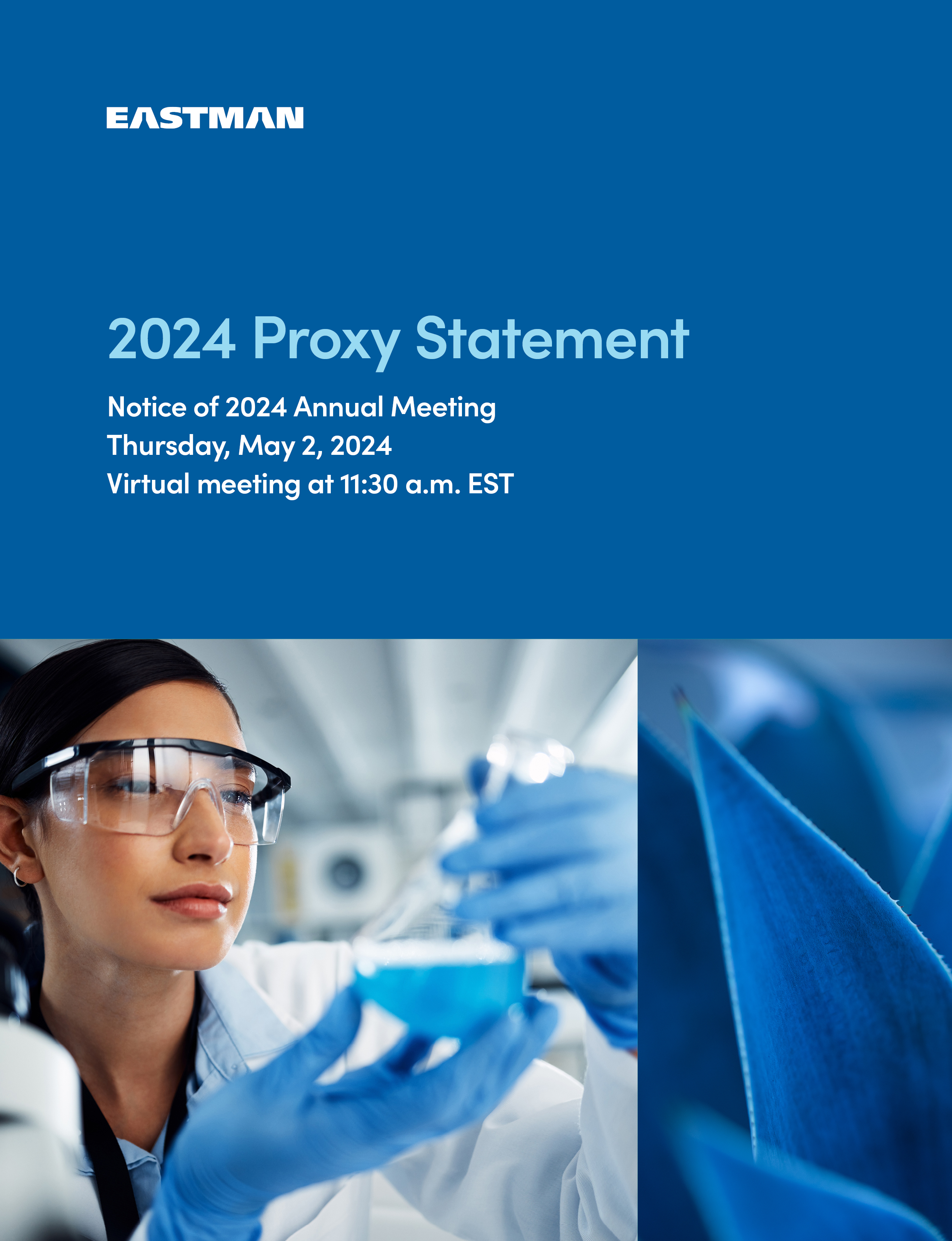




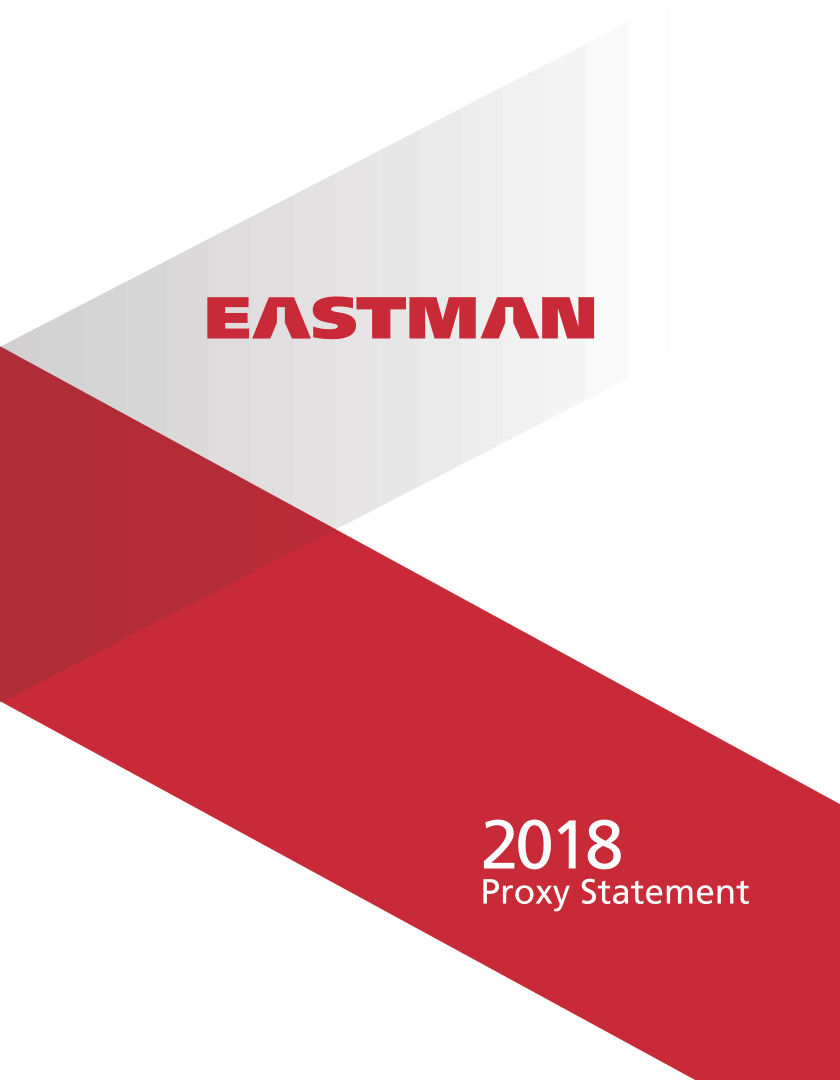









 2018 Proxy Statement
2018 Proxy Statement 
















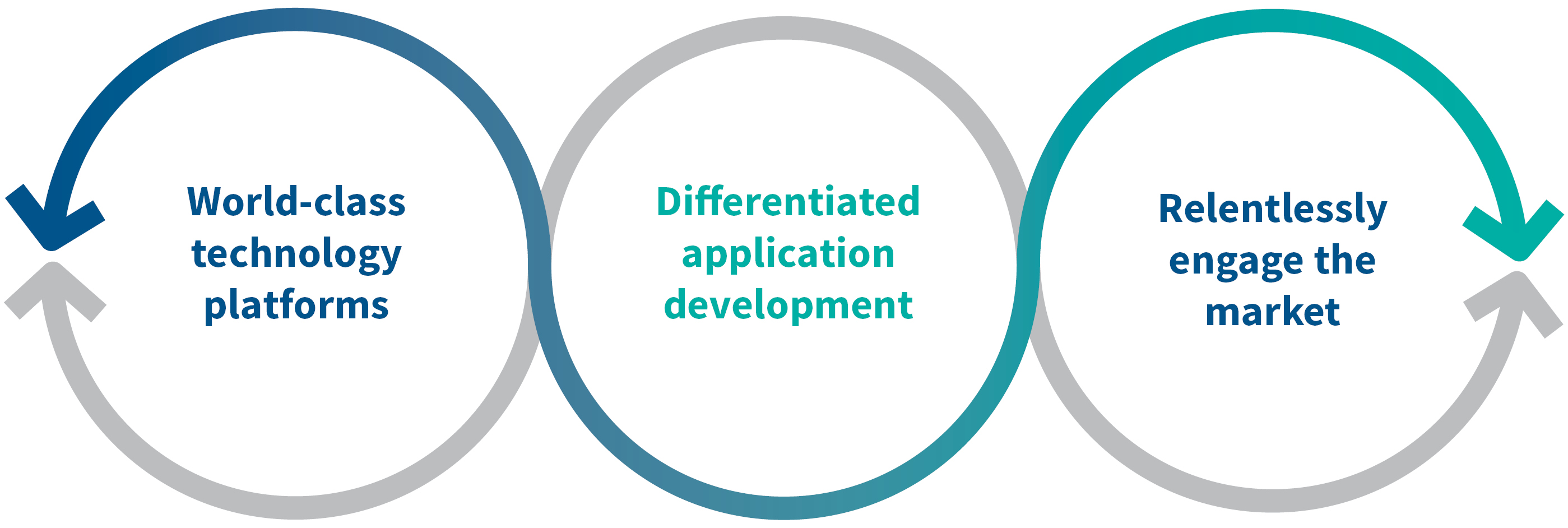

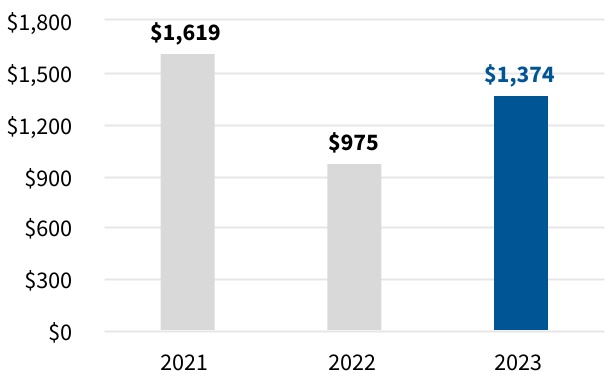

























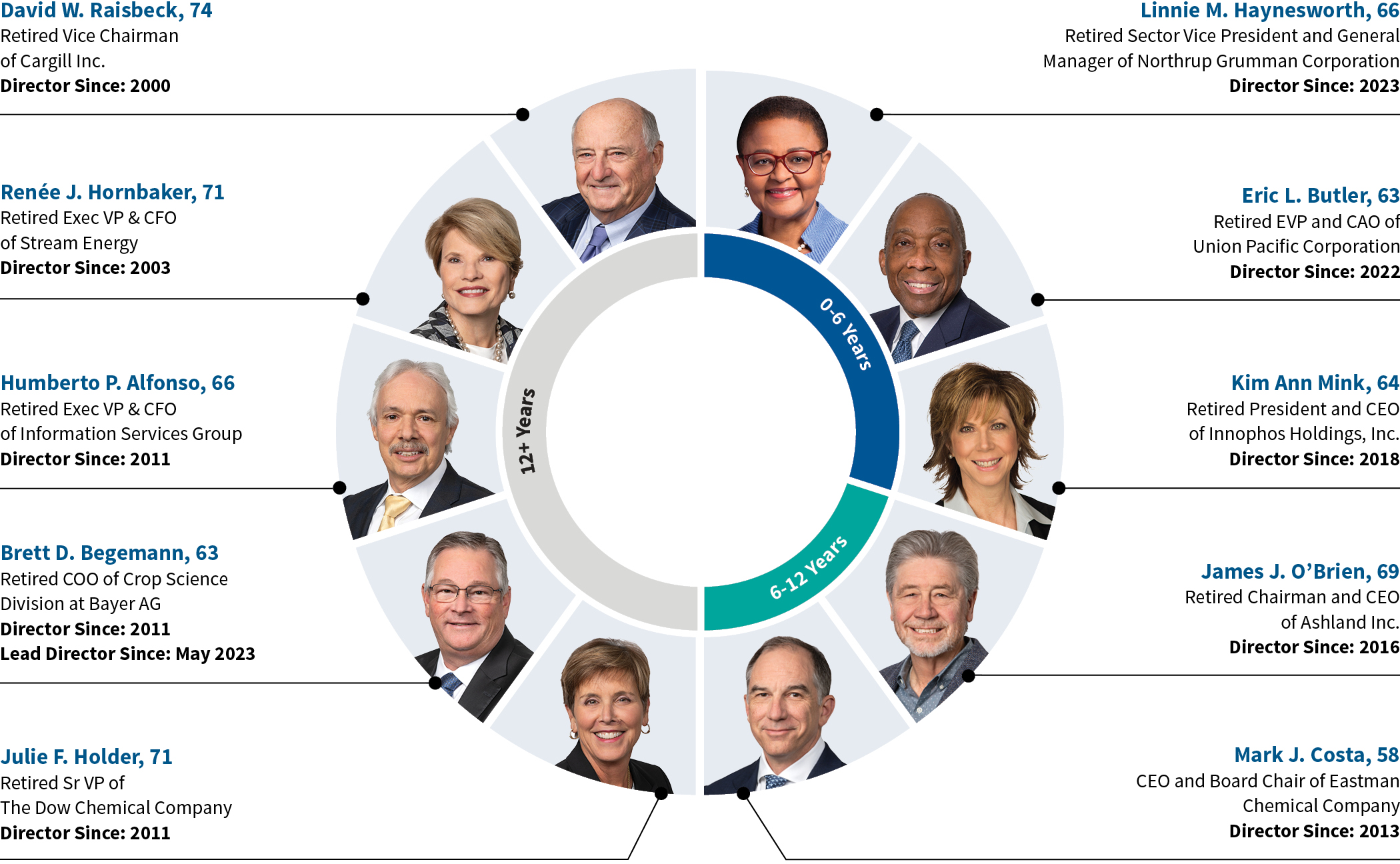
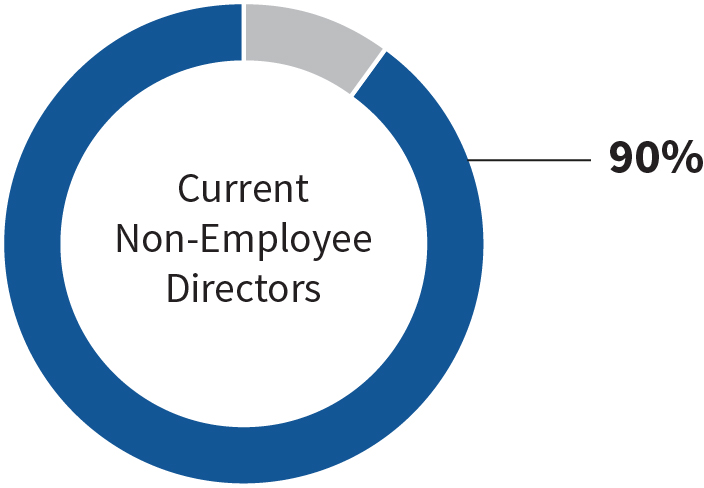
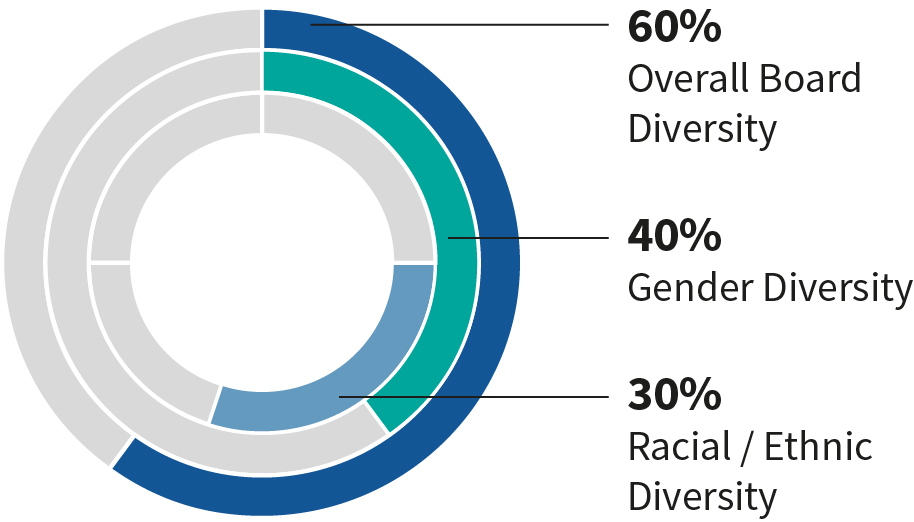
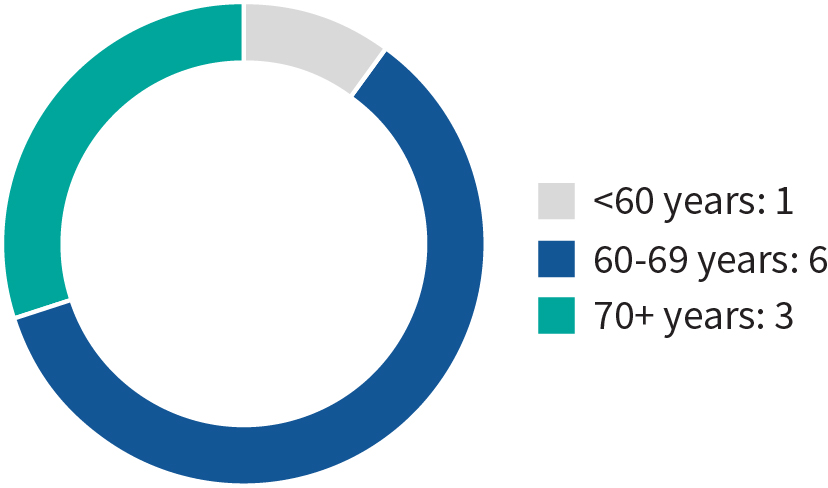























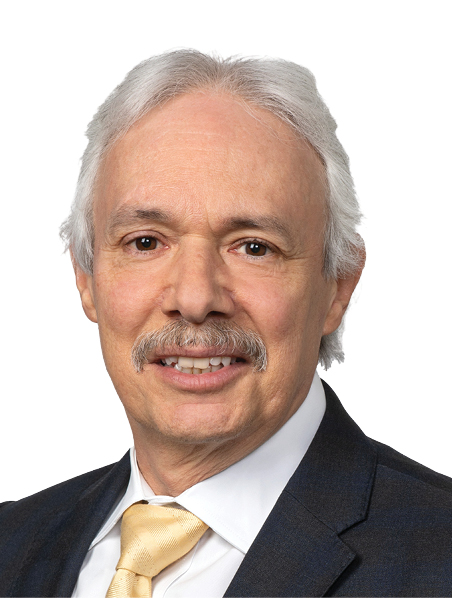











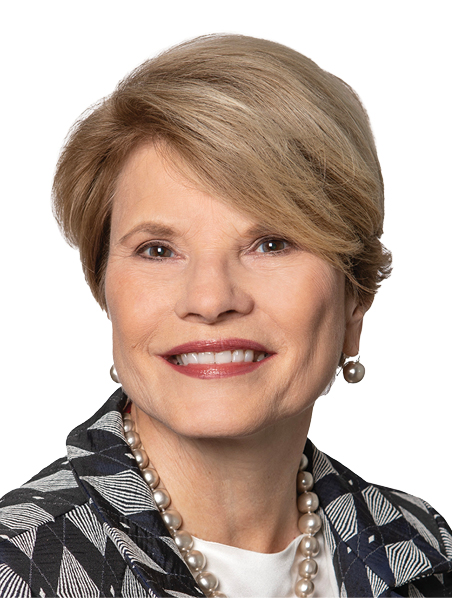





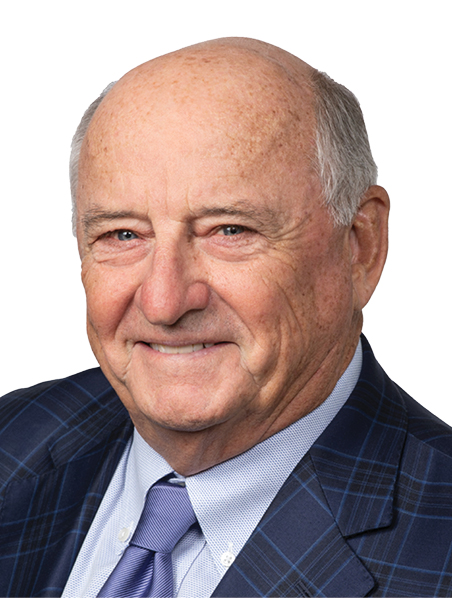













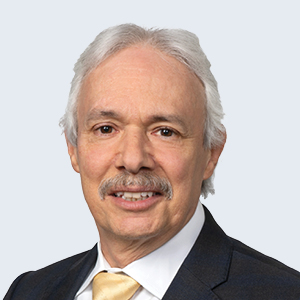








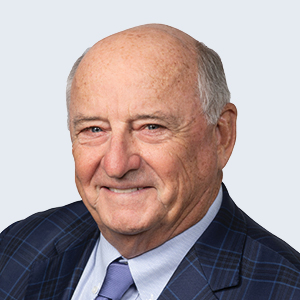


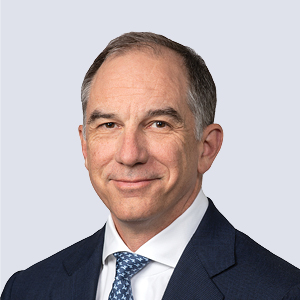






















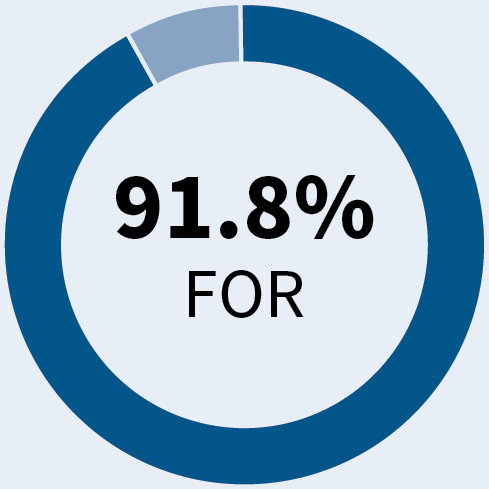
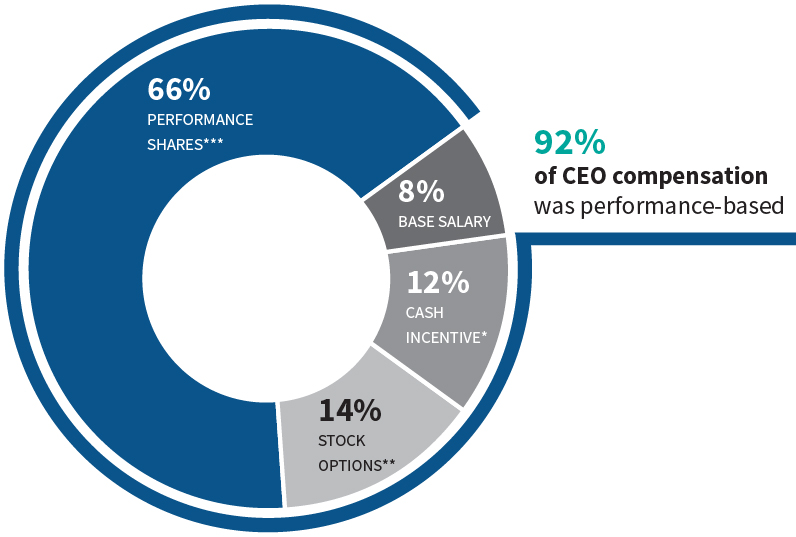


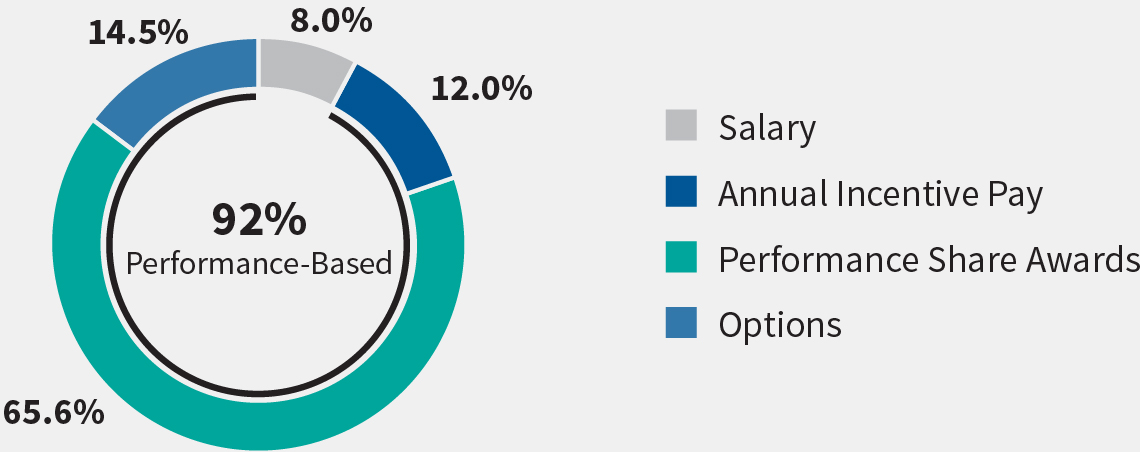

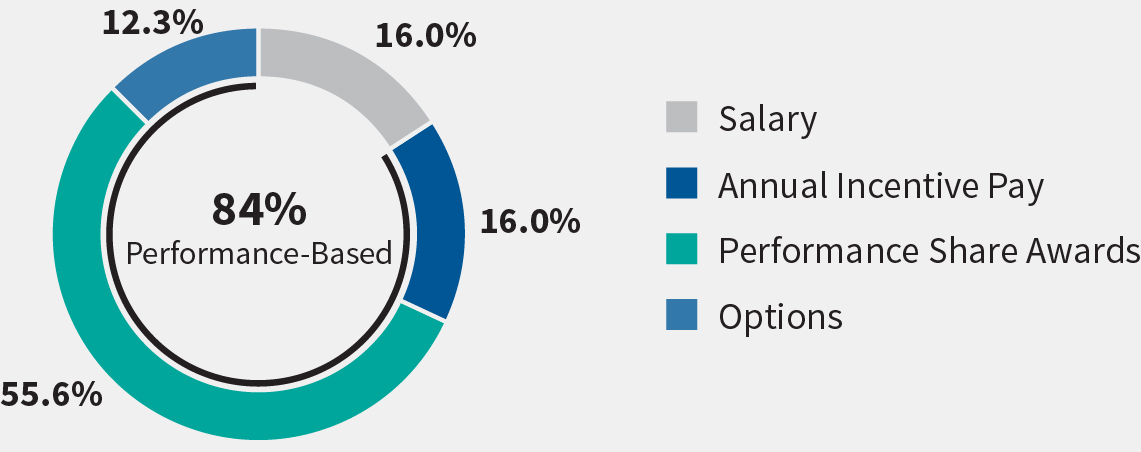





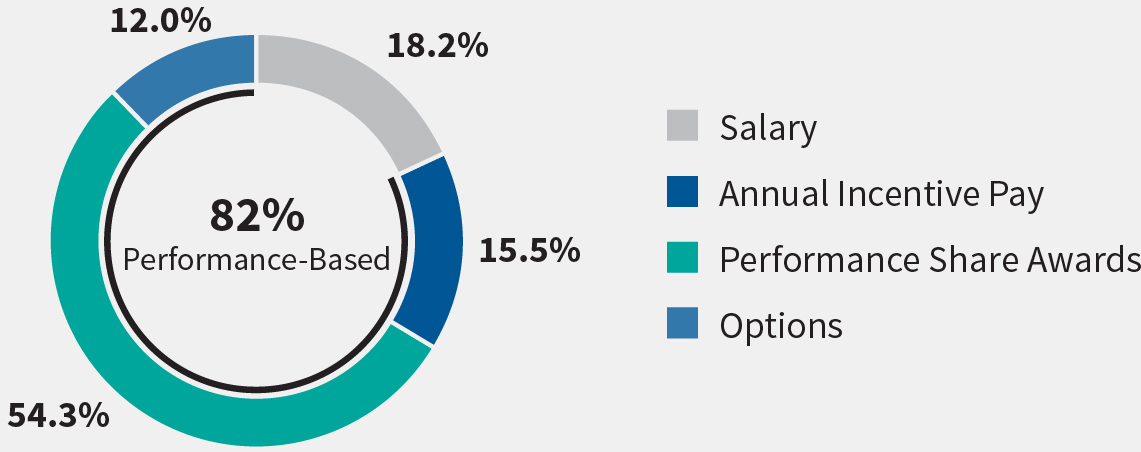




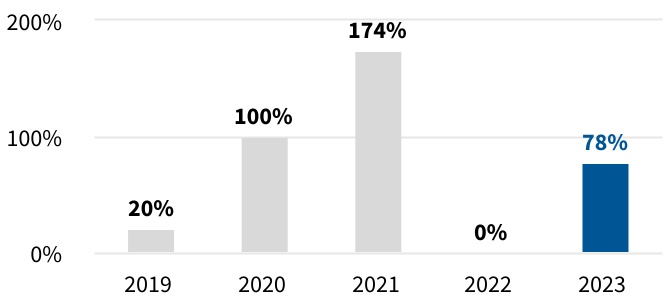




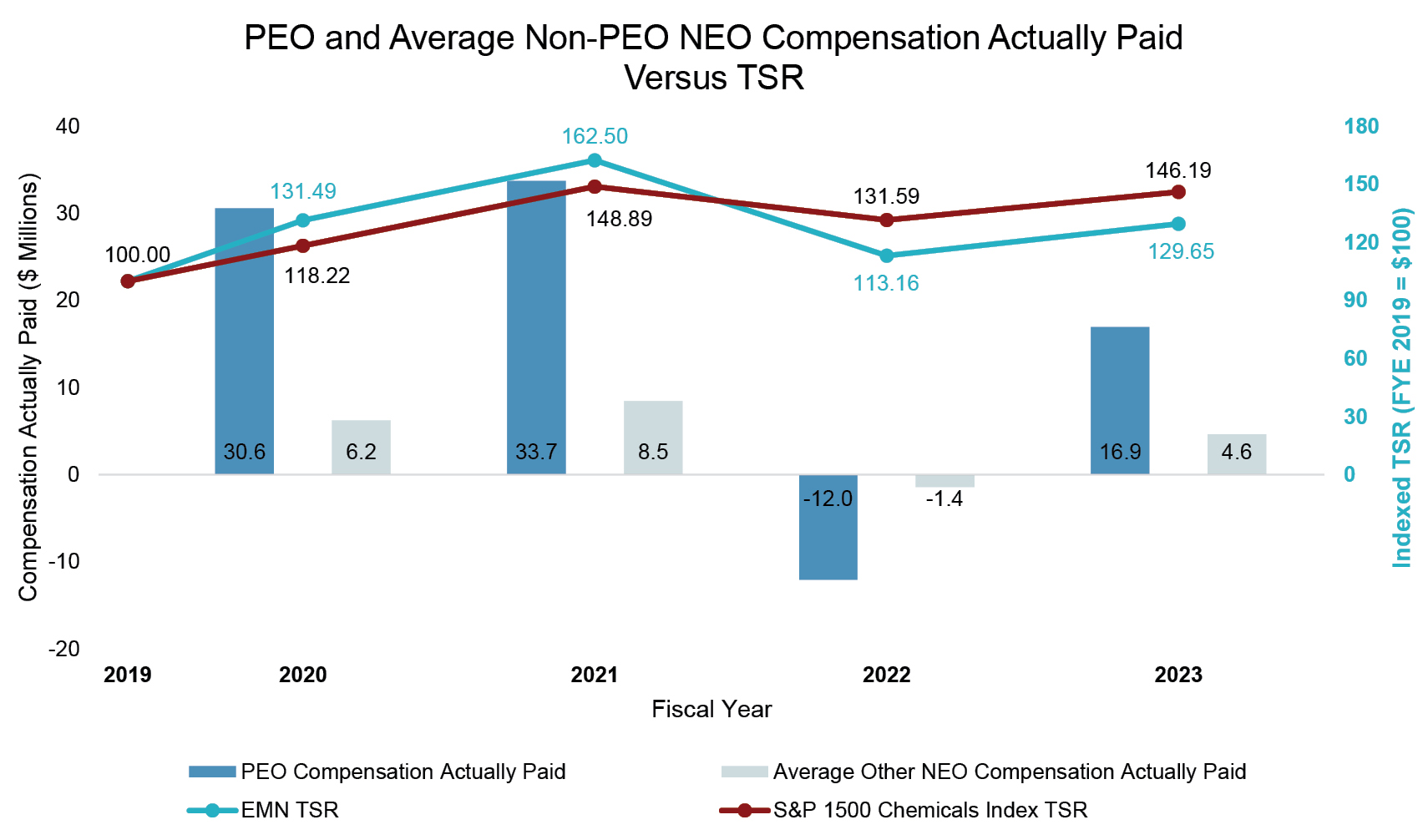
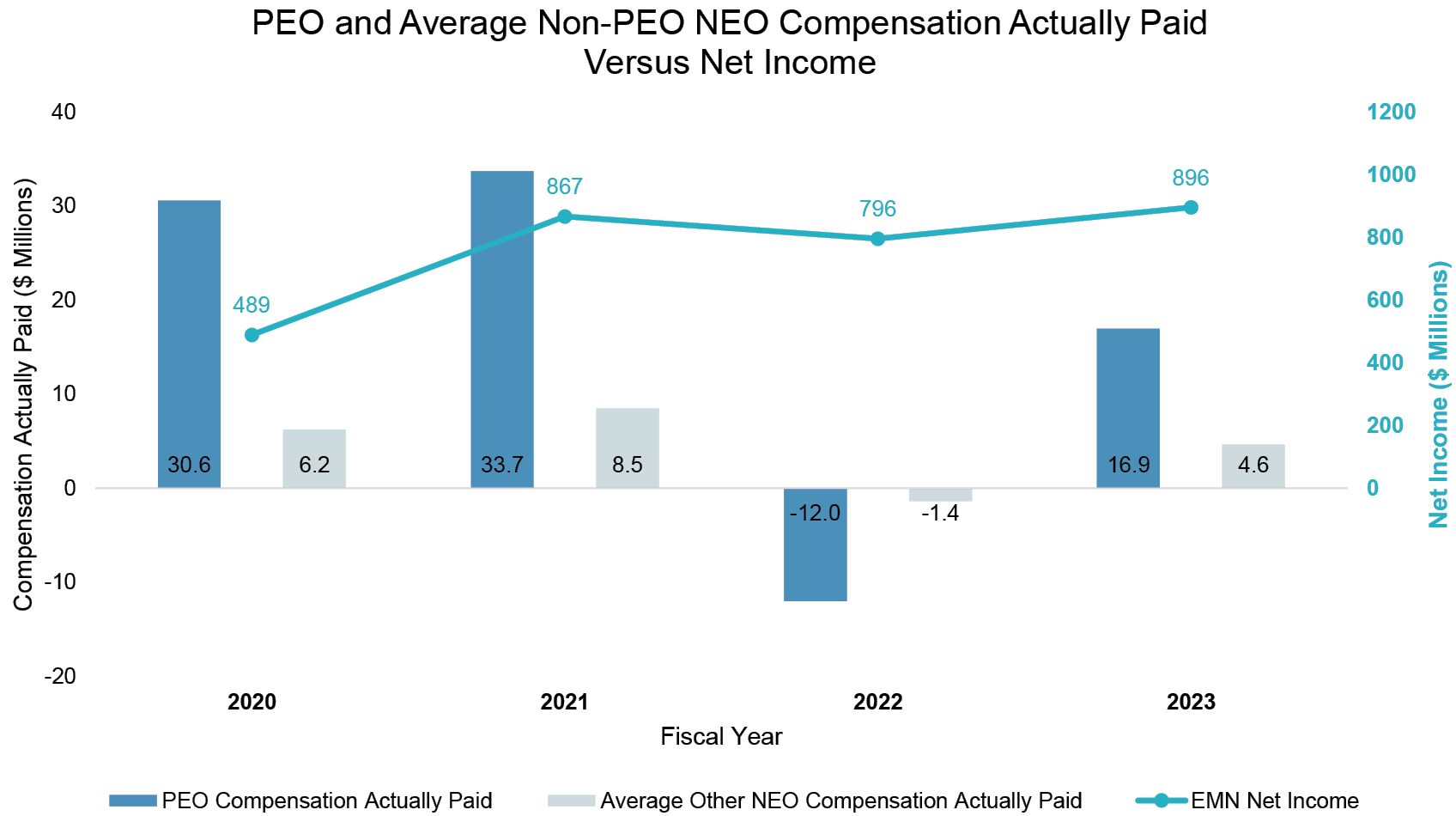
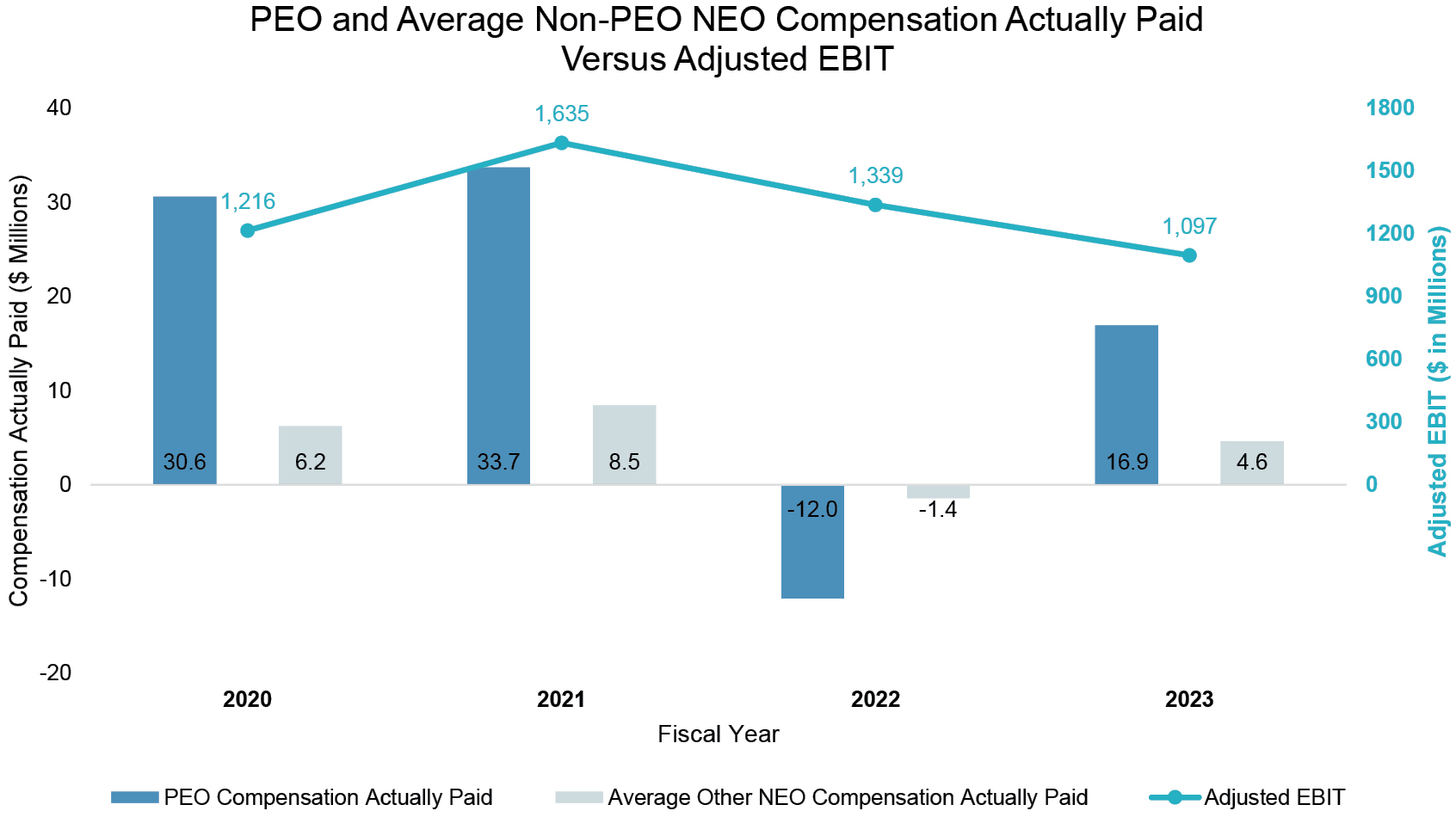
















 Easy
Easy 
 Please fold and detach card at perforation.
Please fold and detach card at perforation. 




